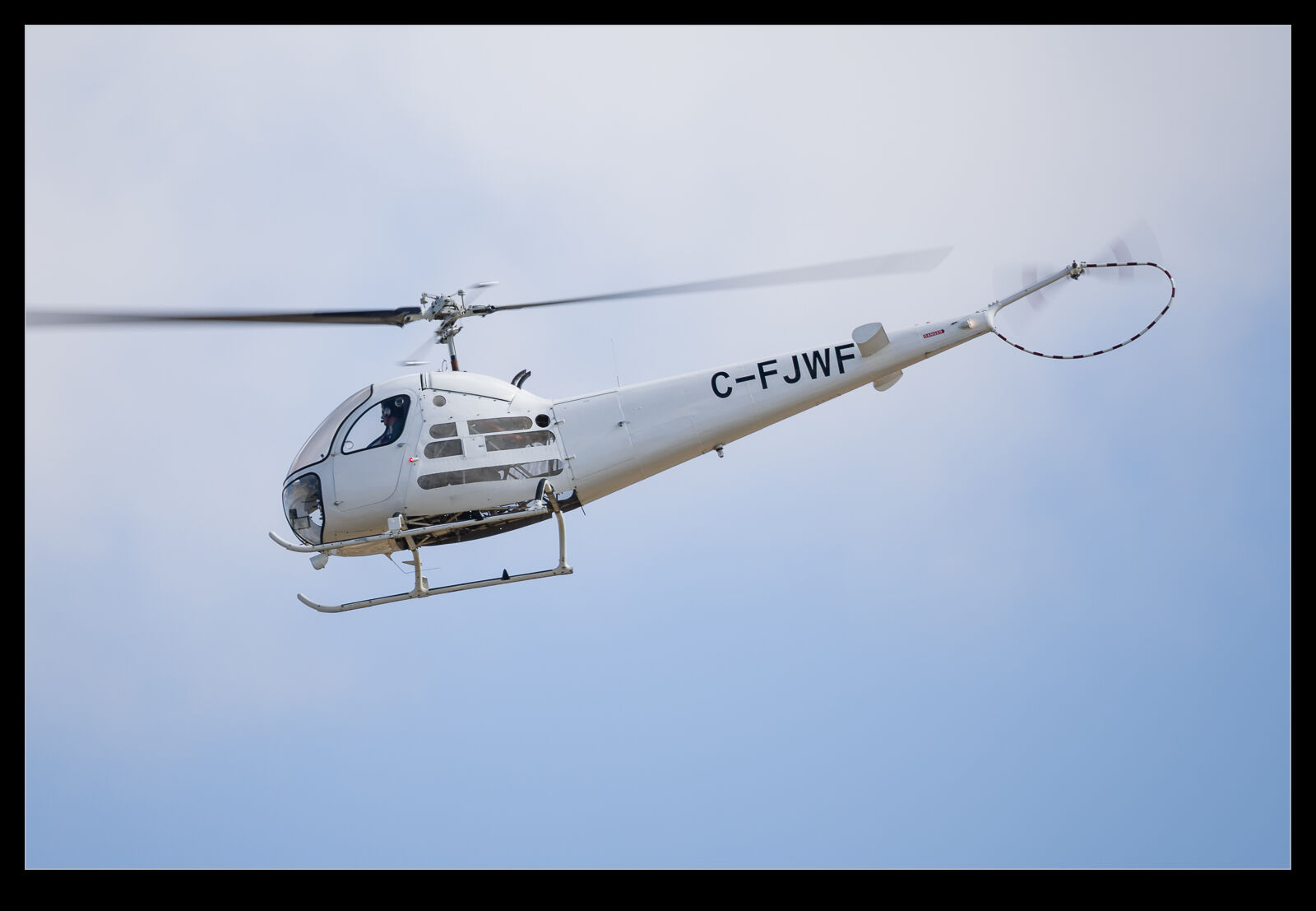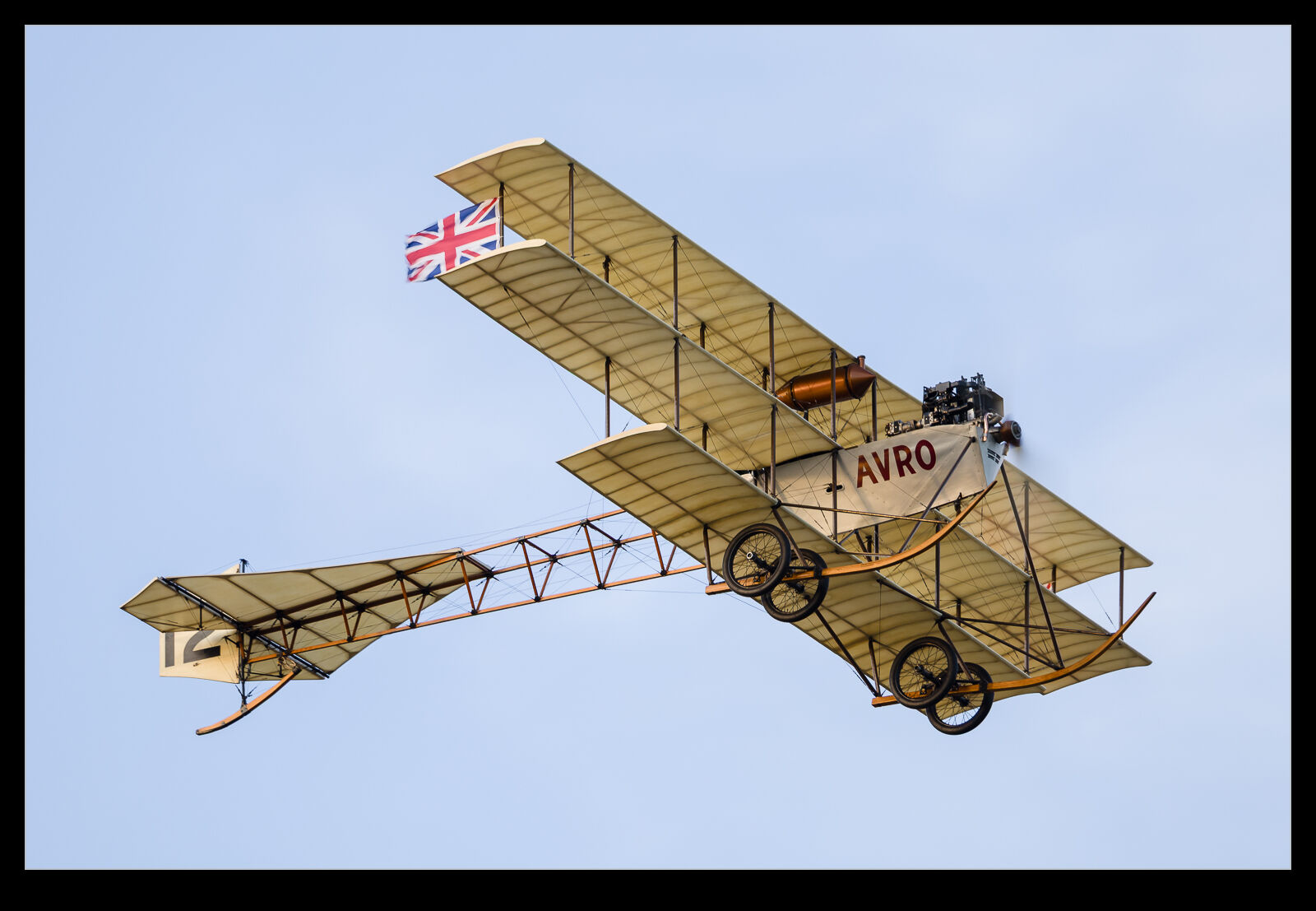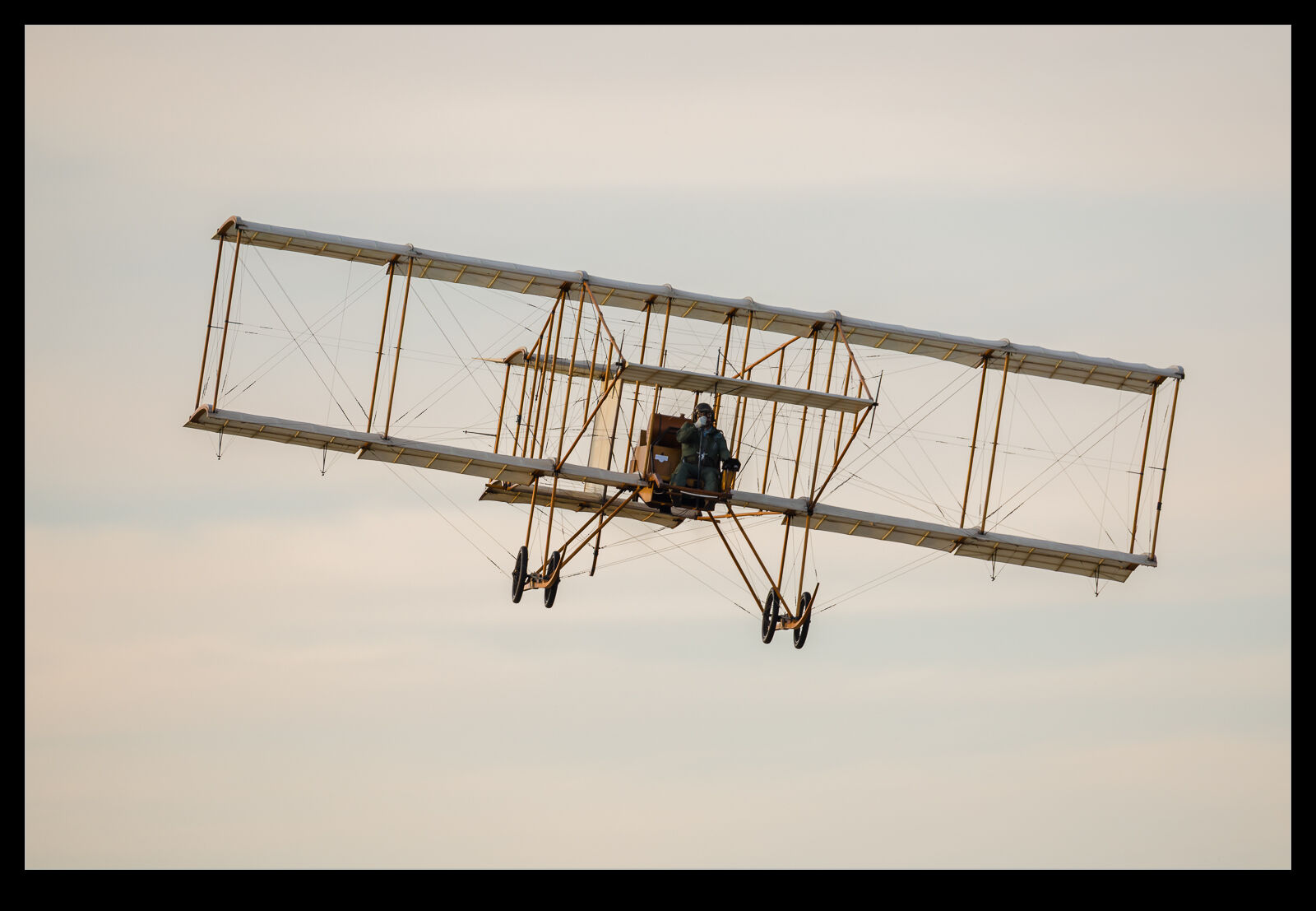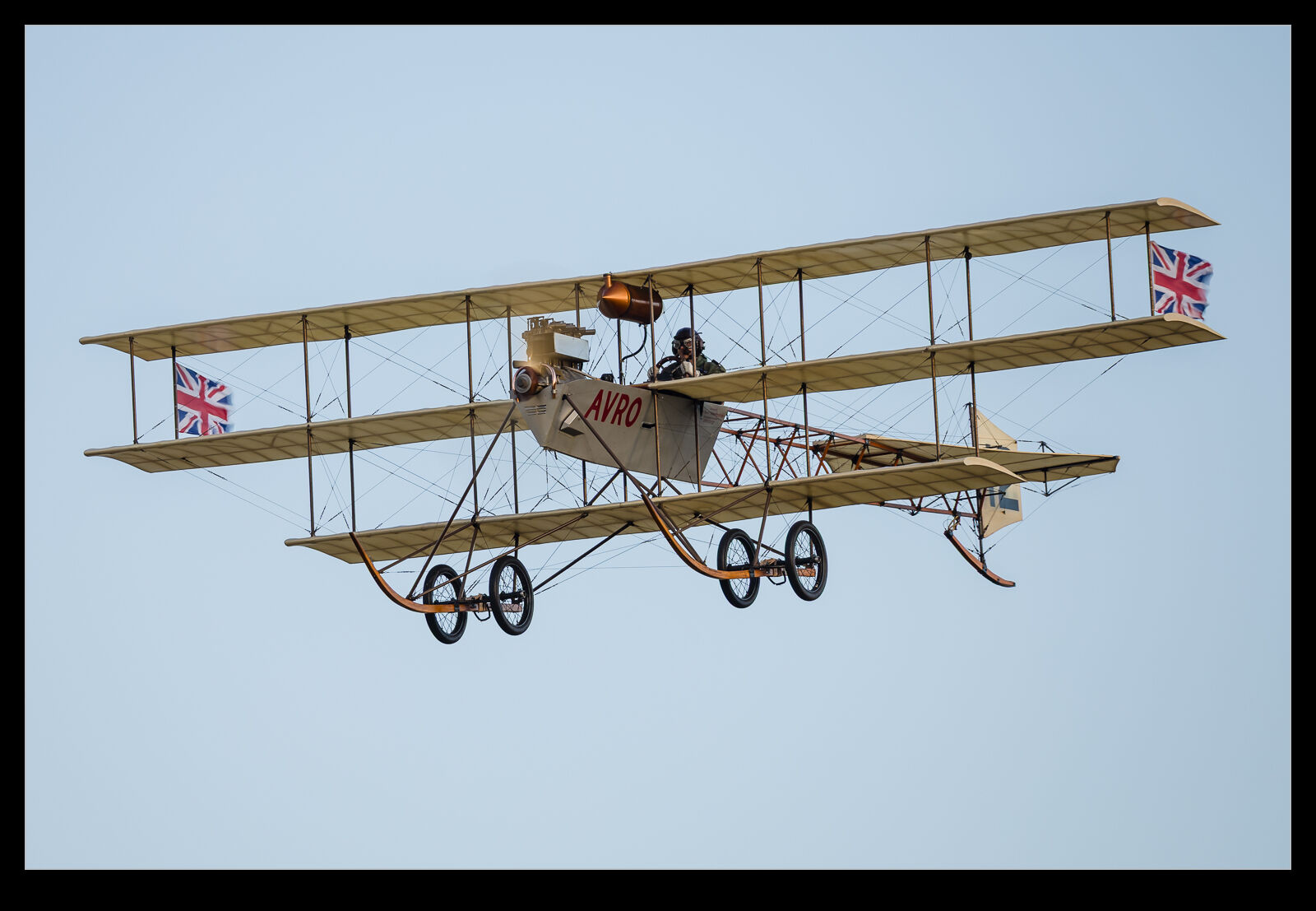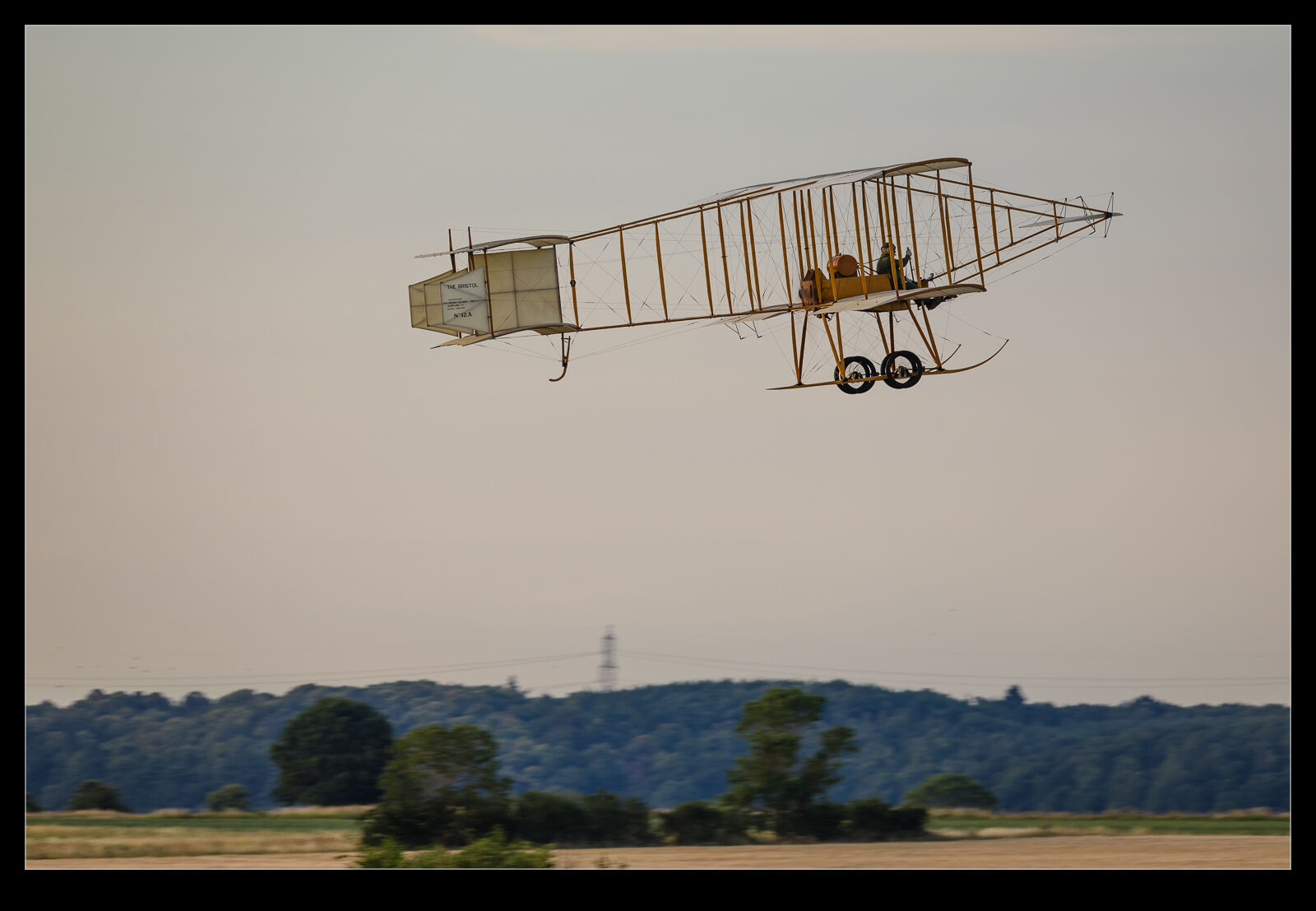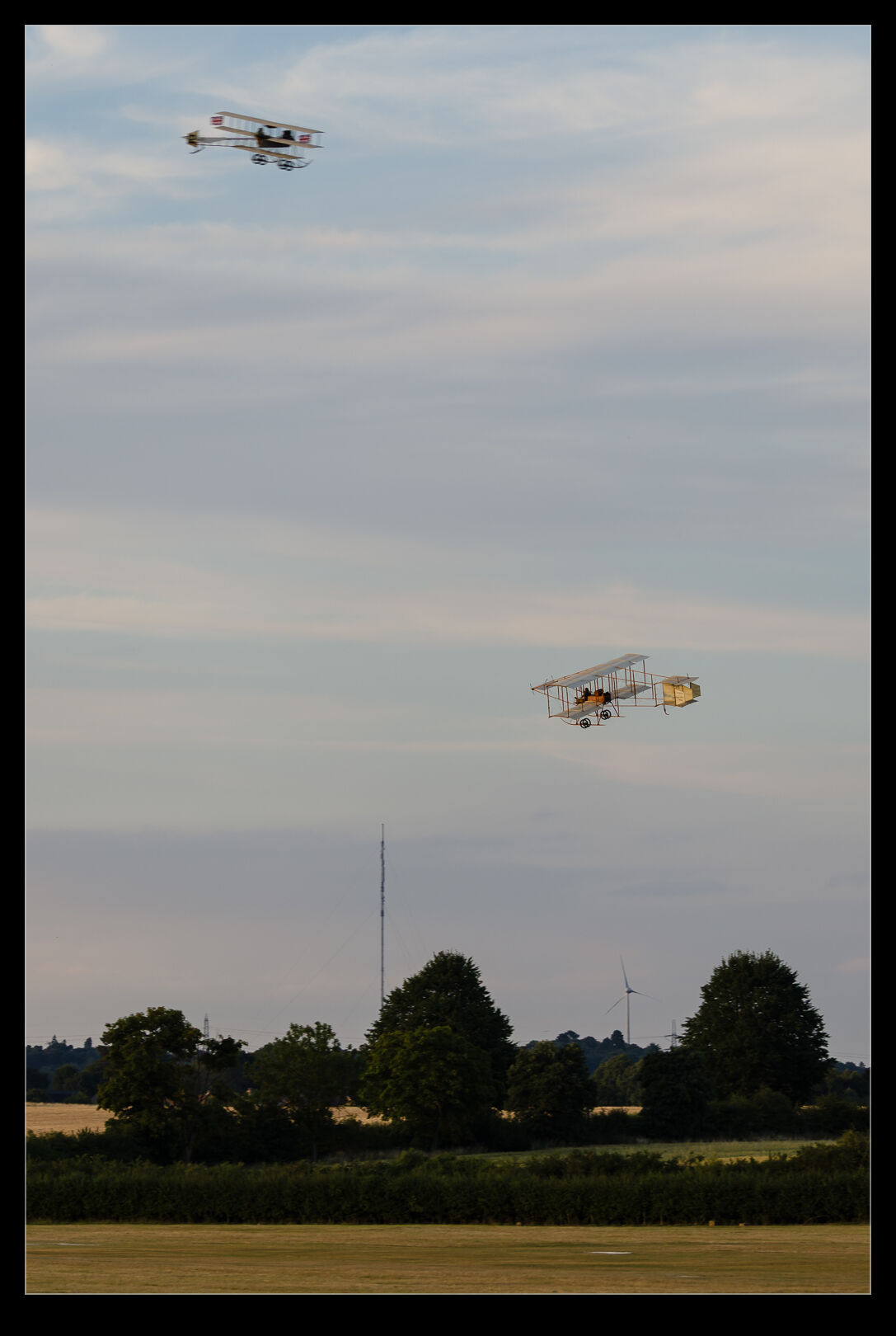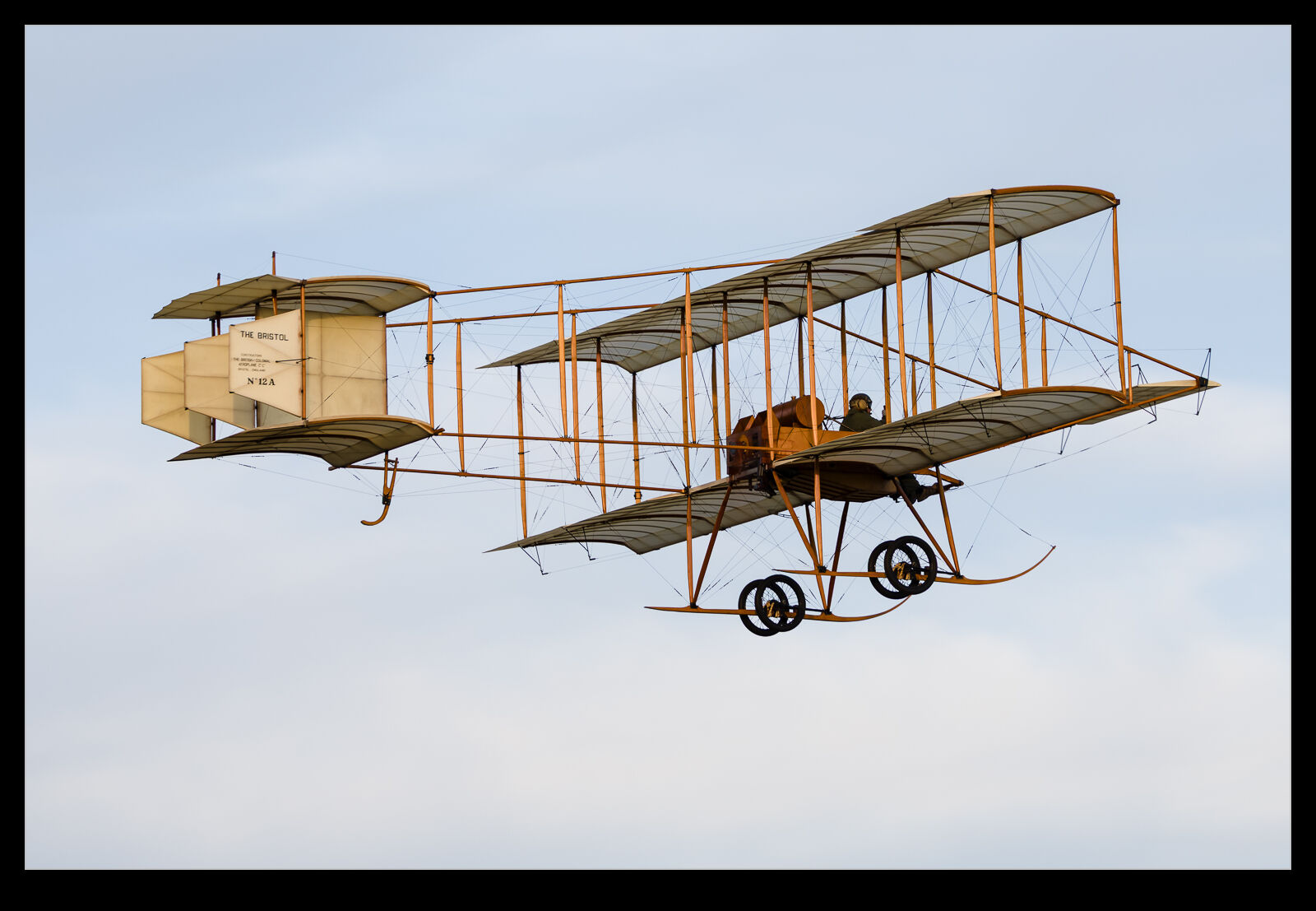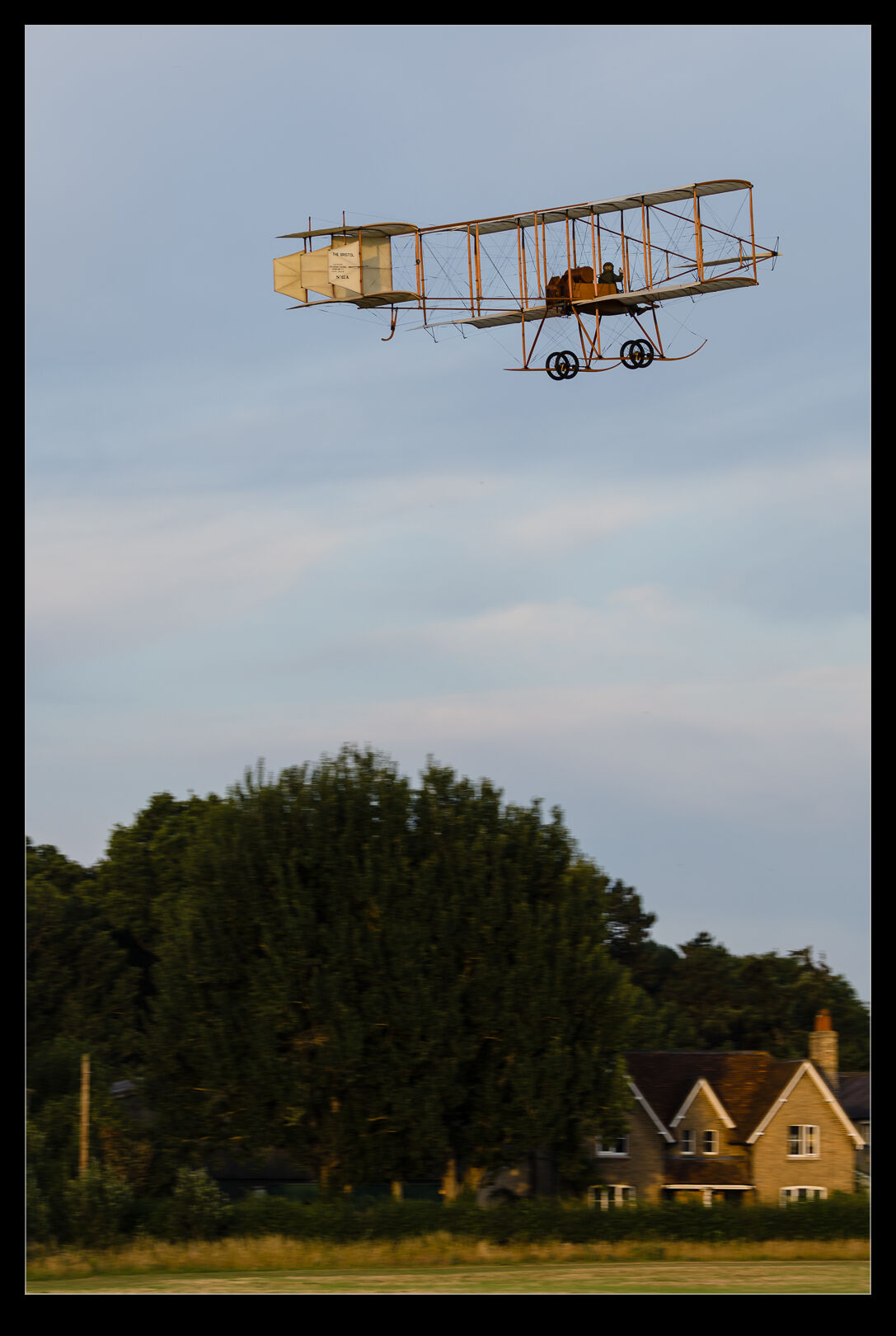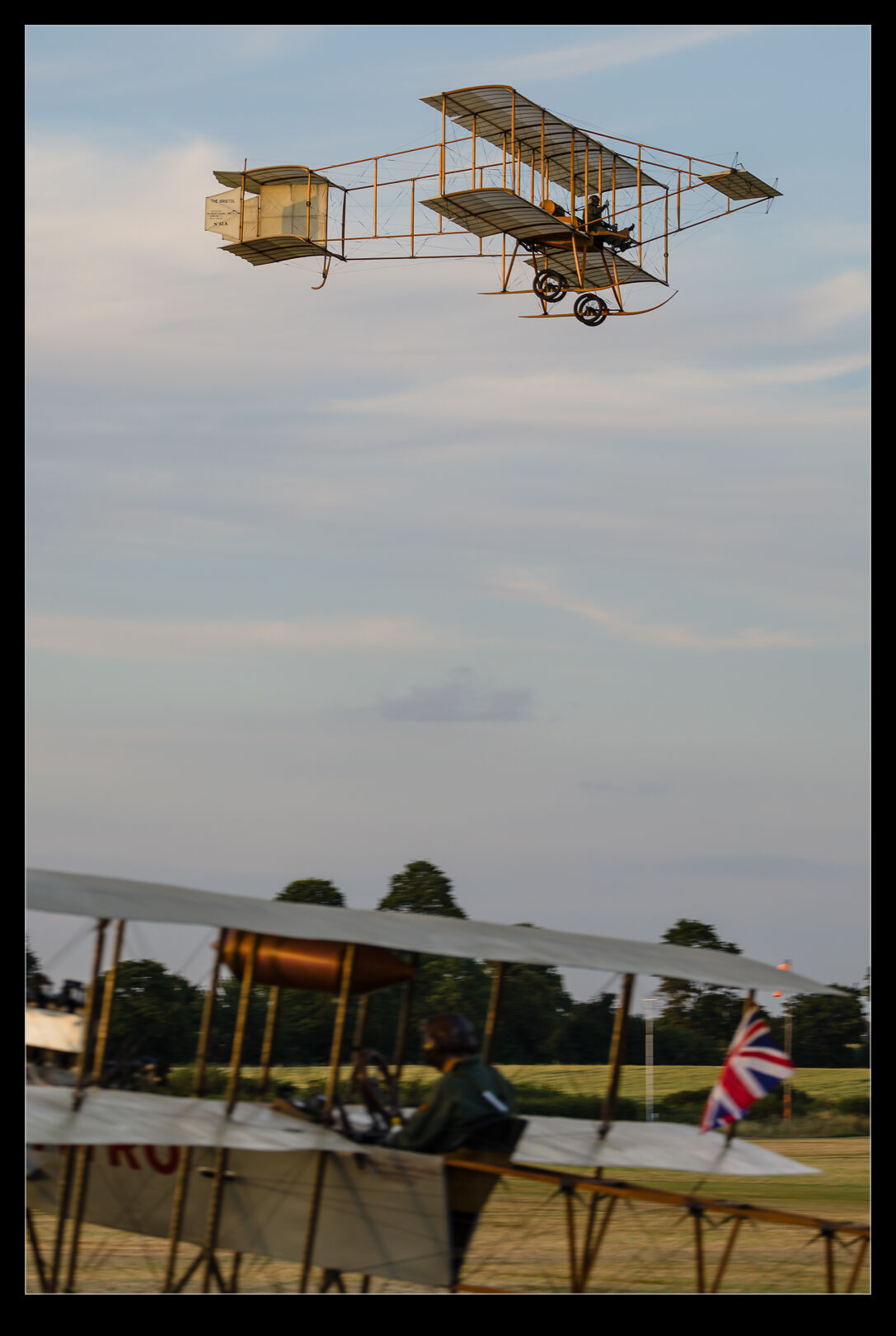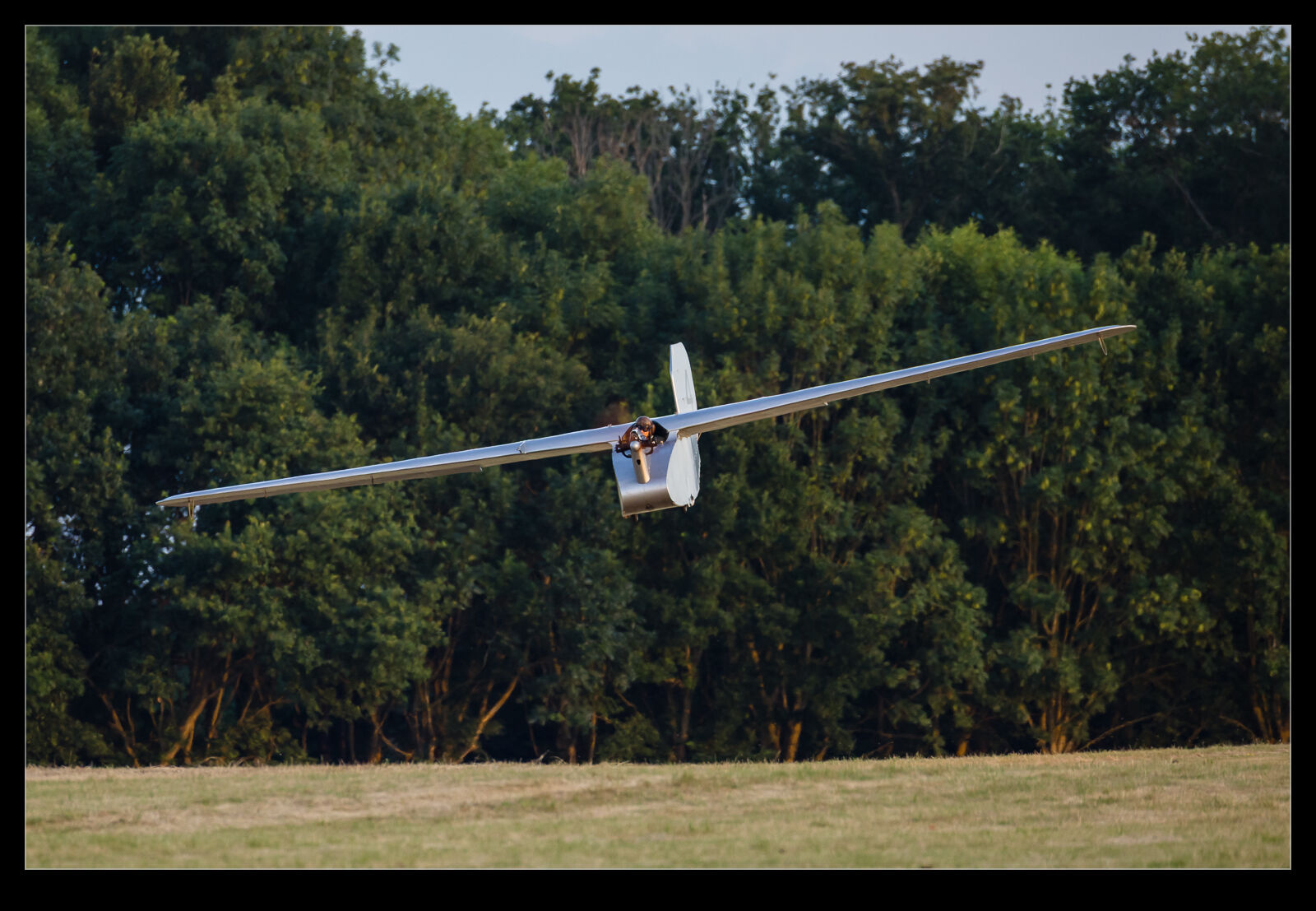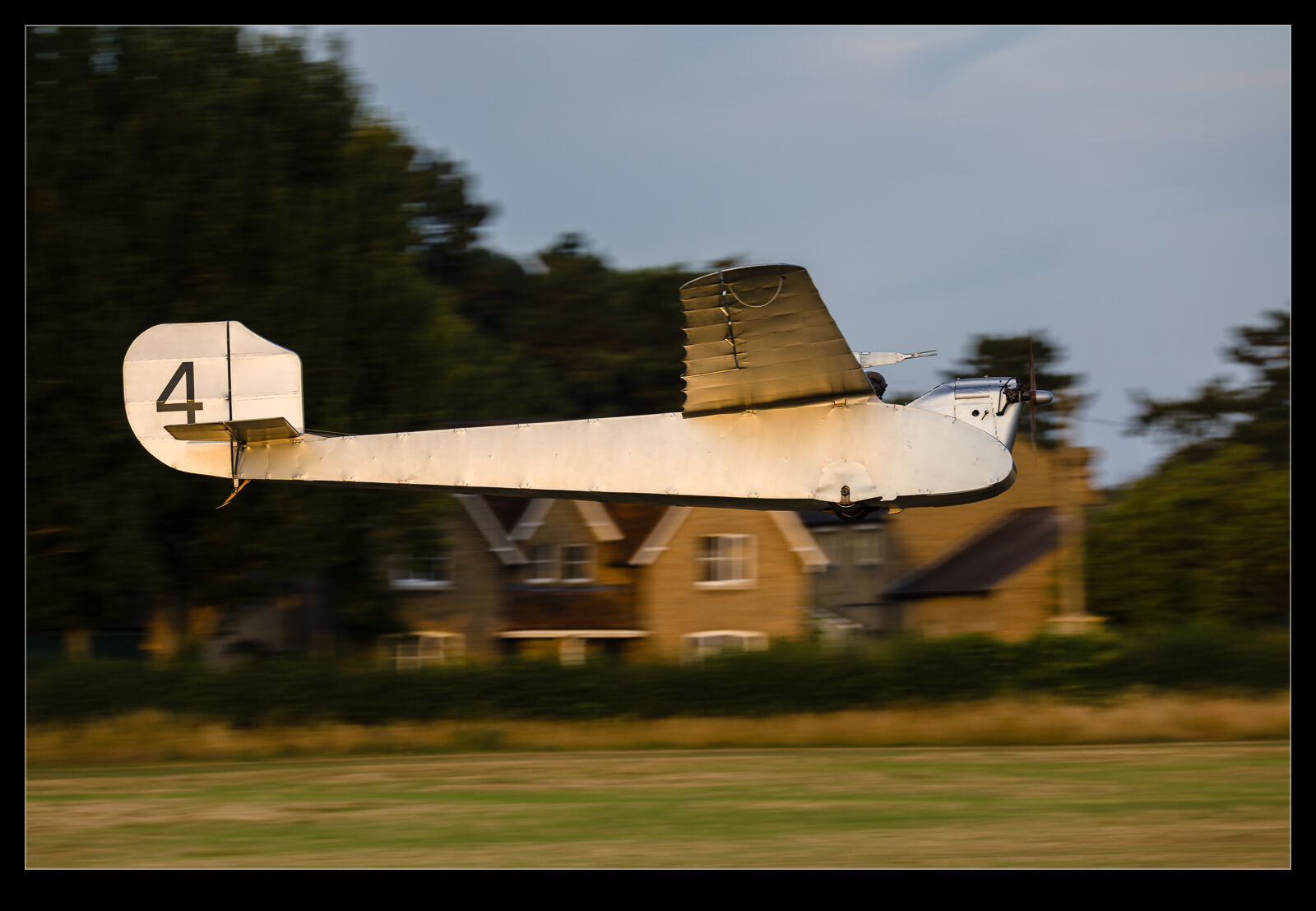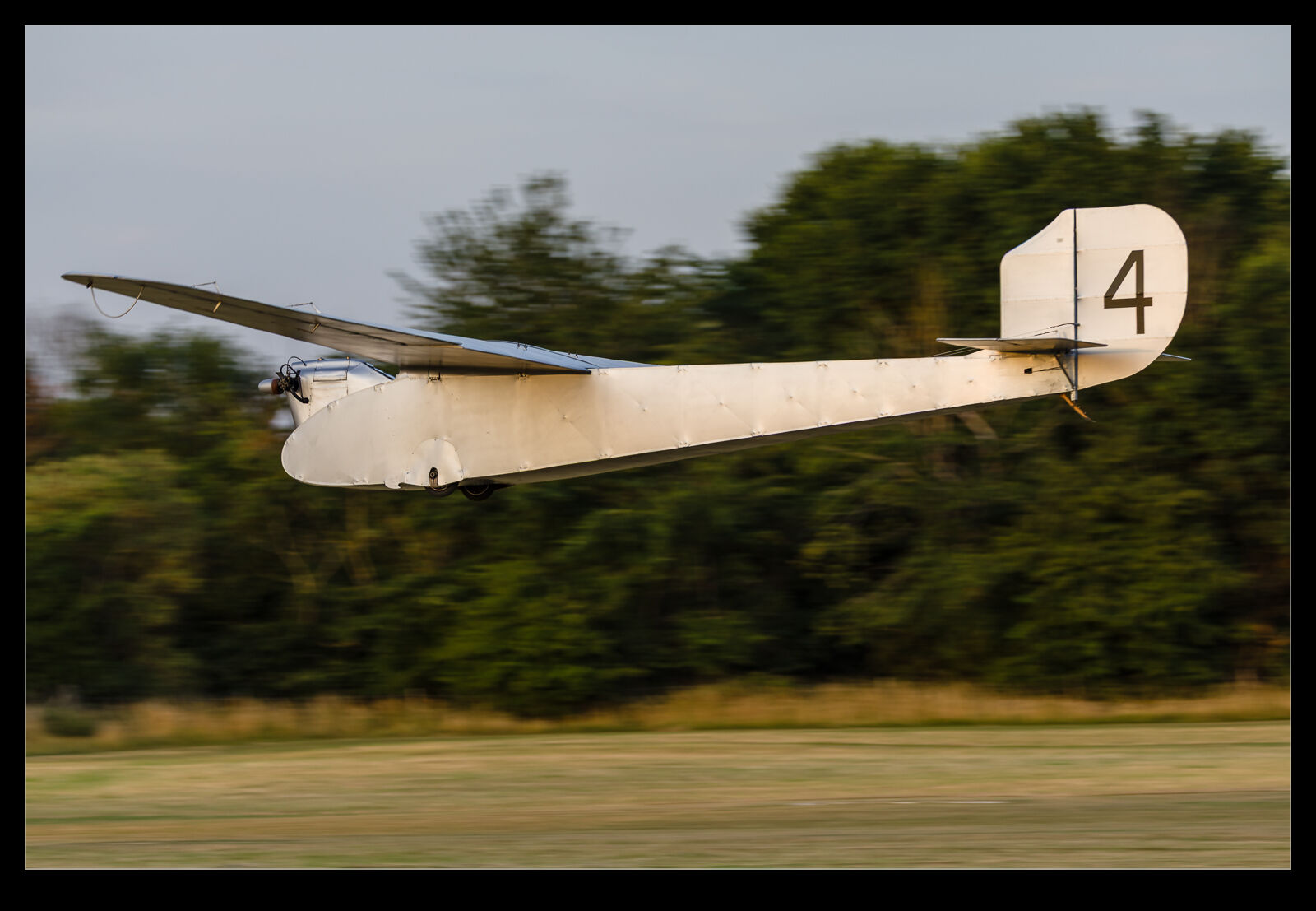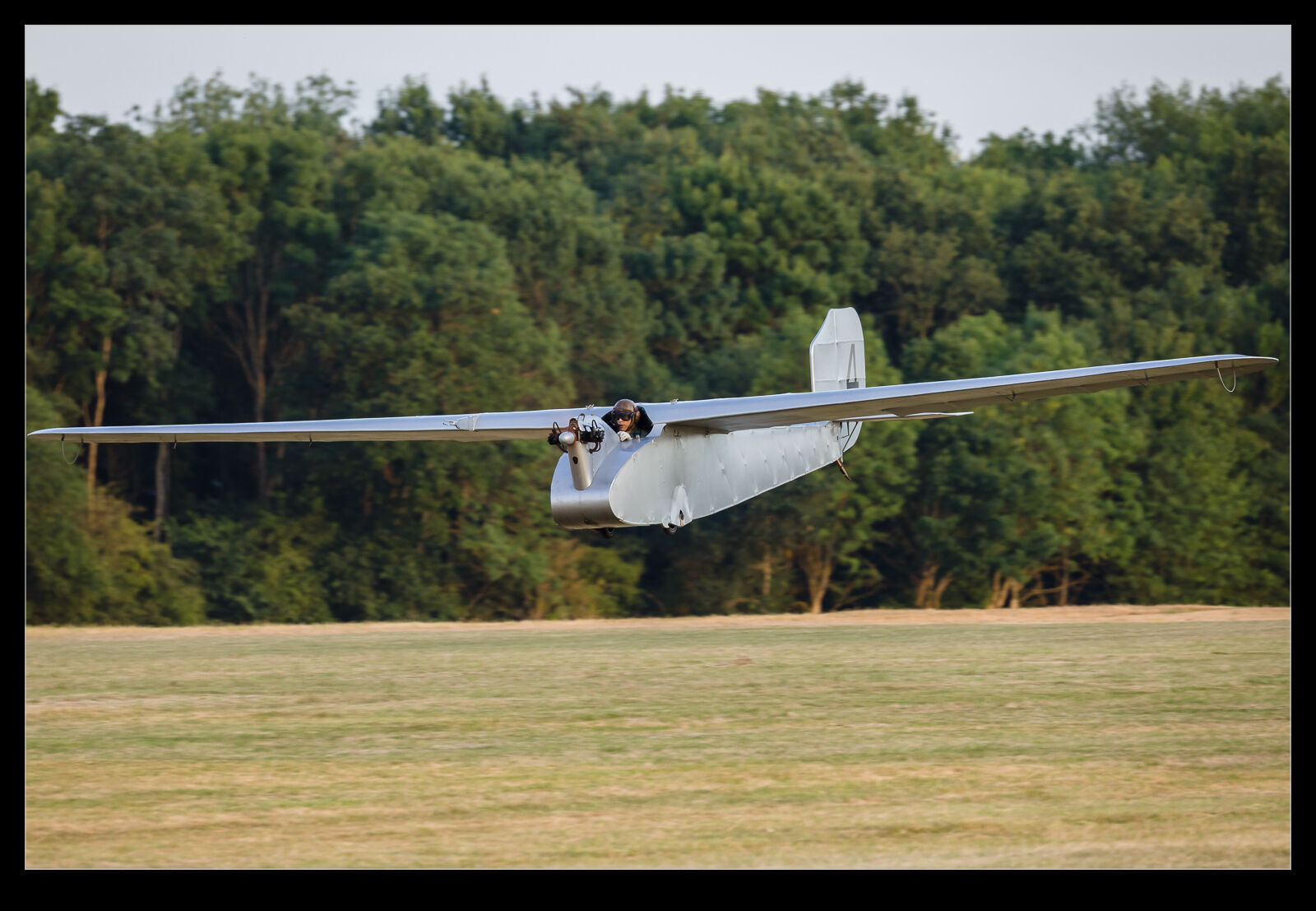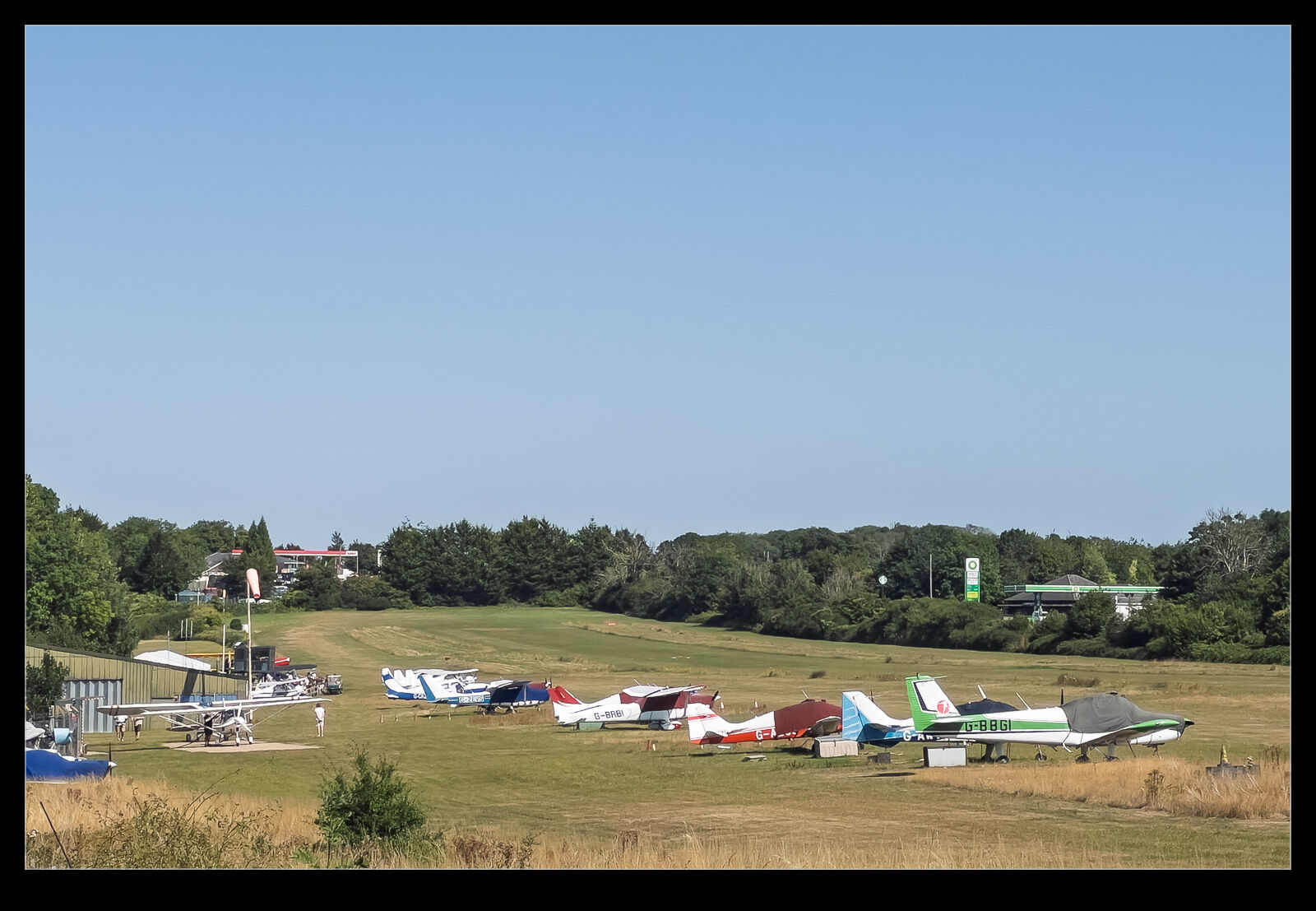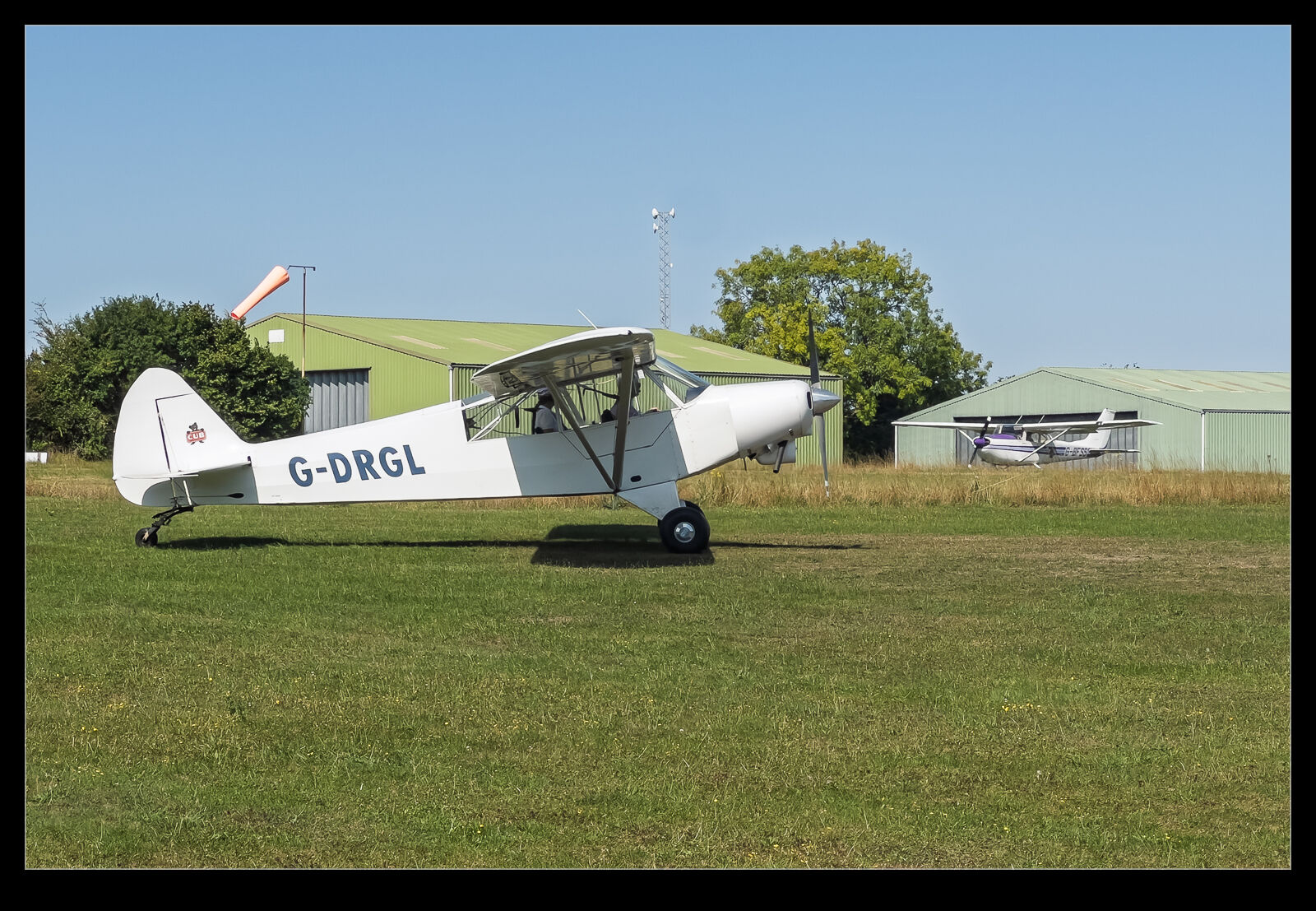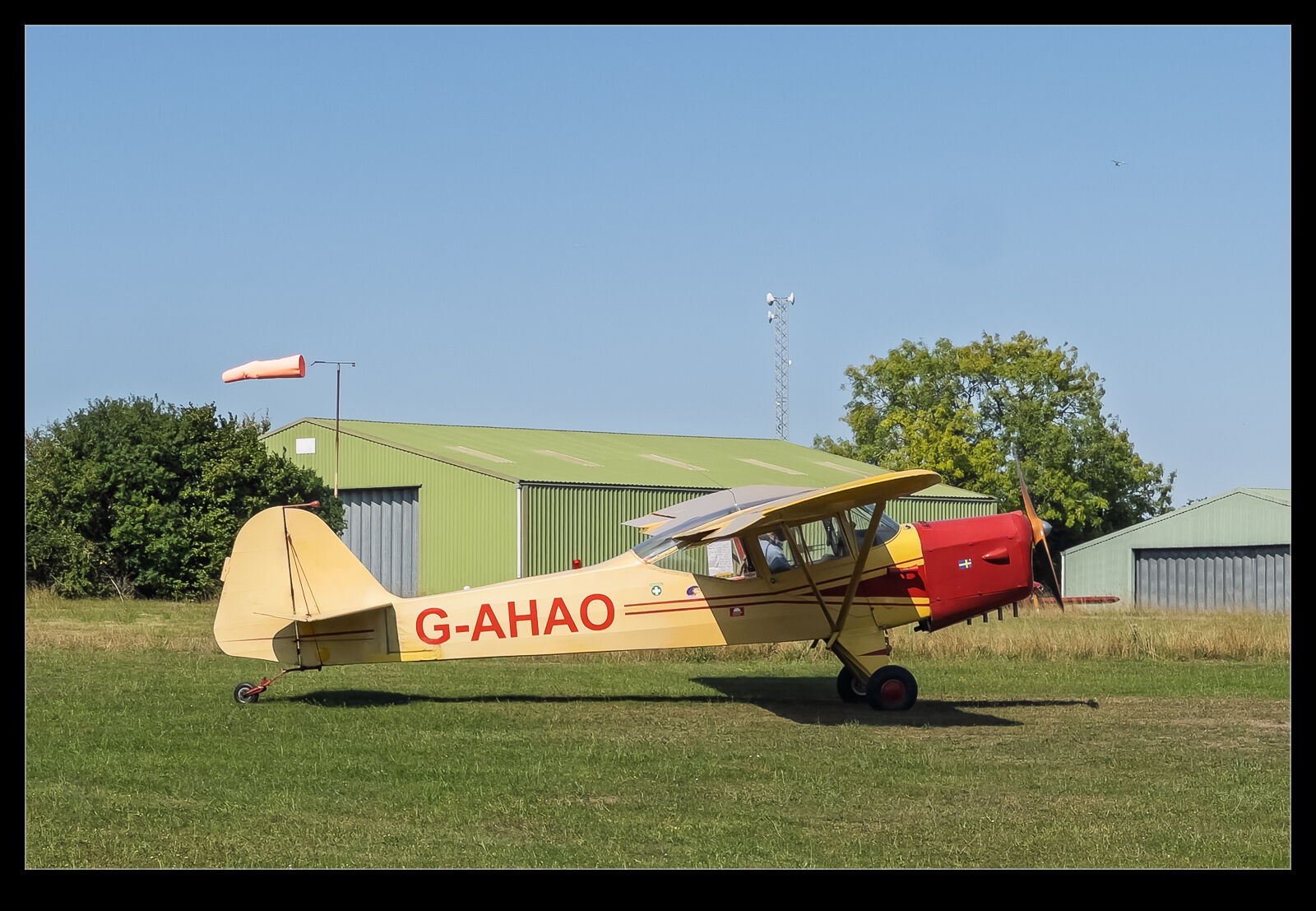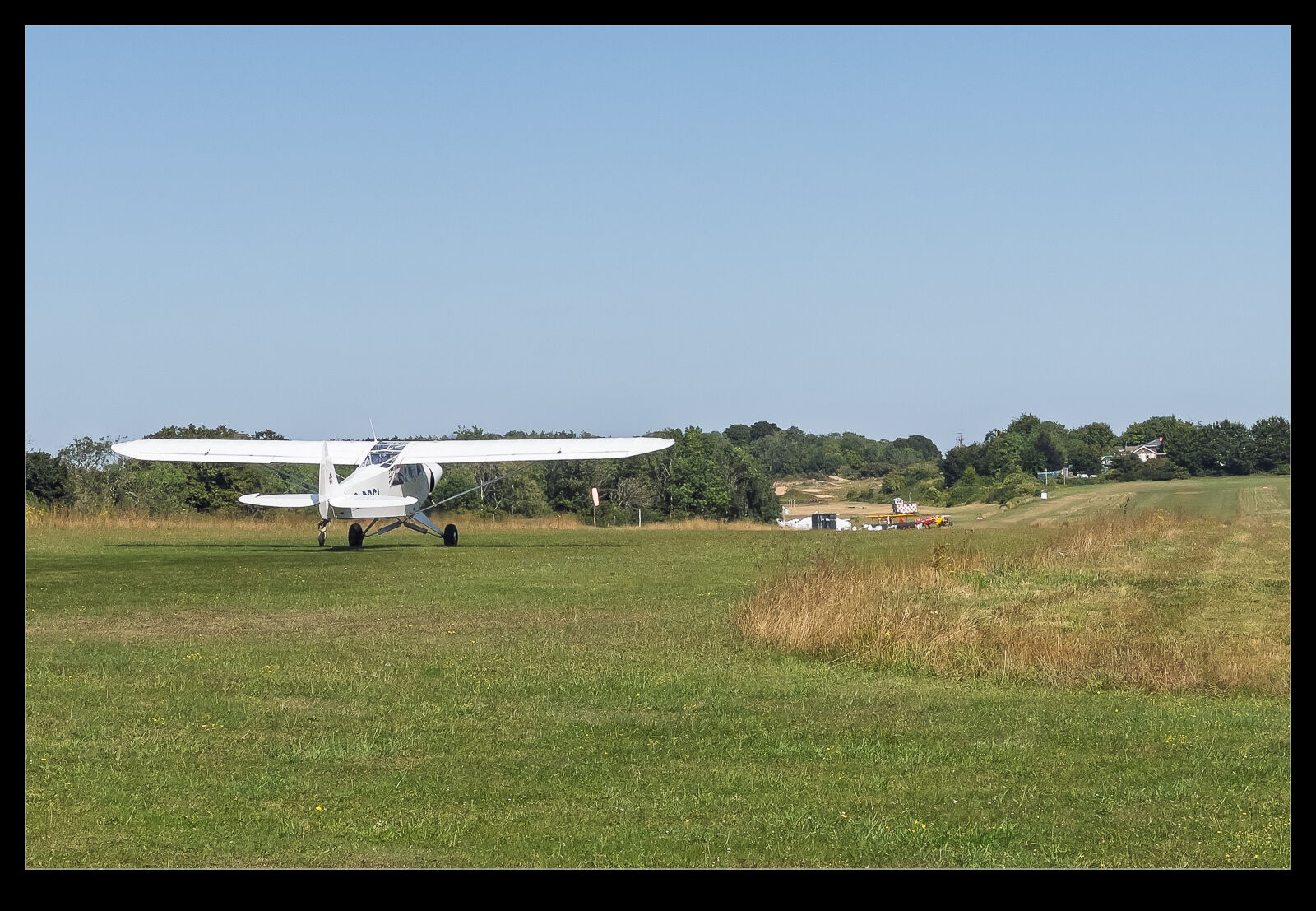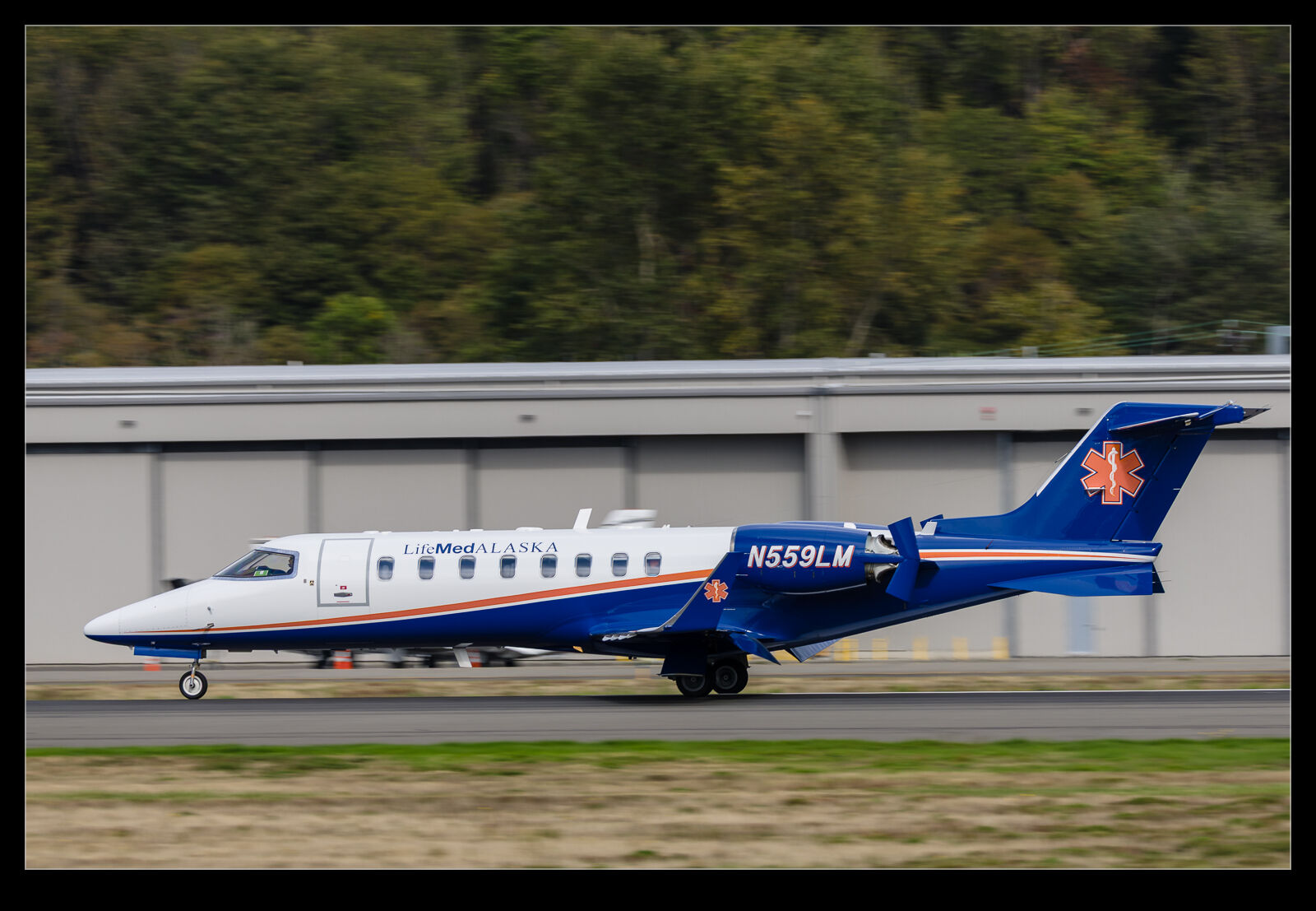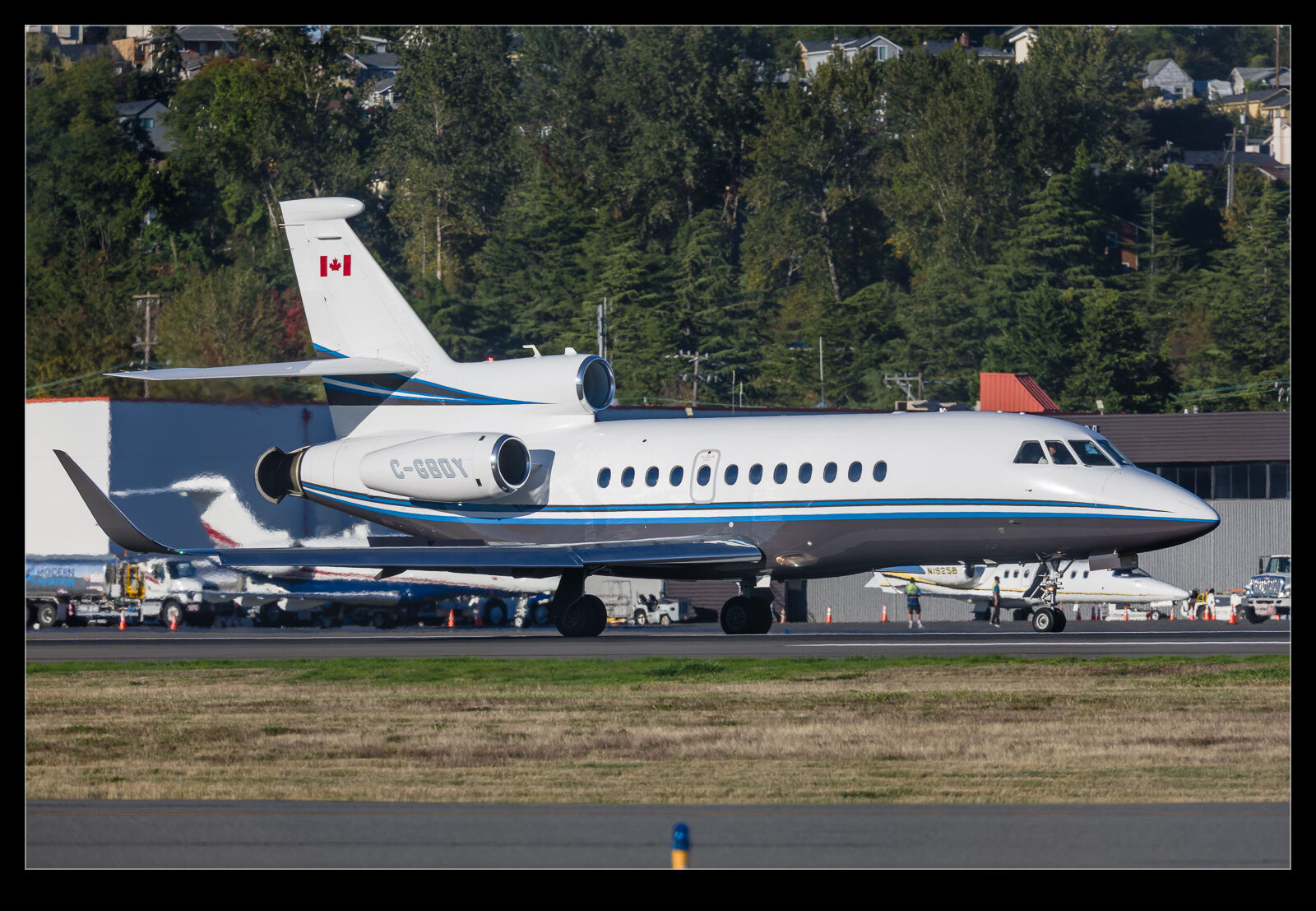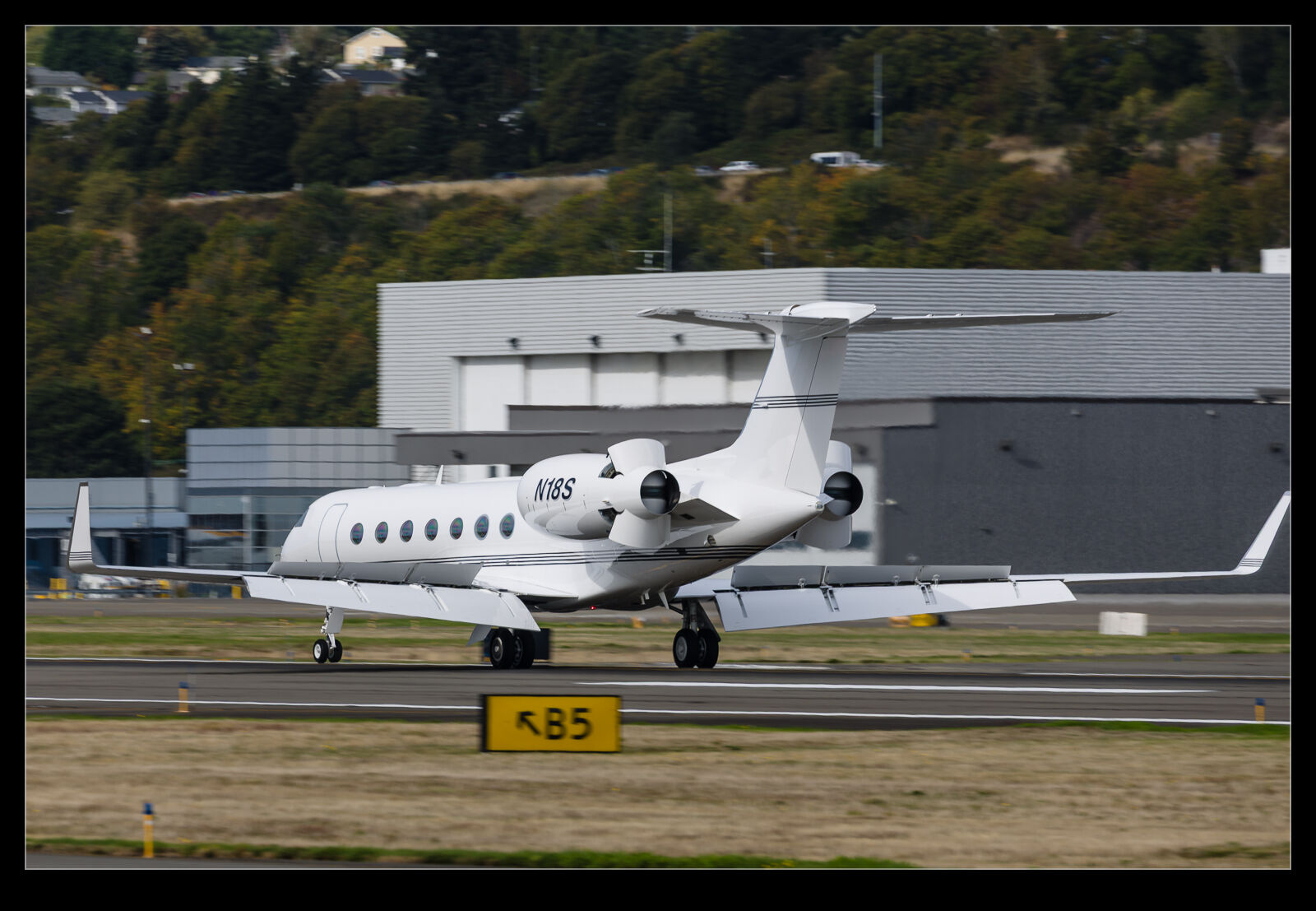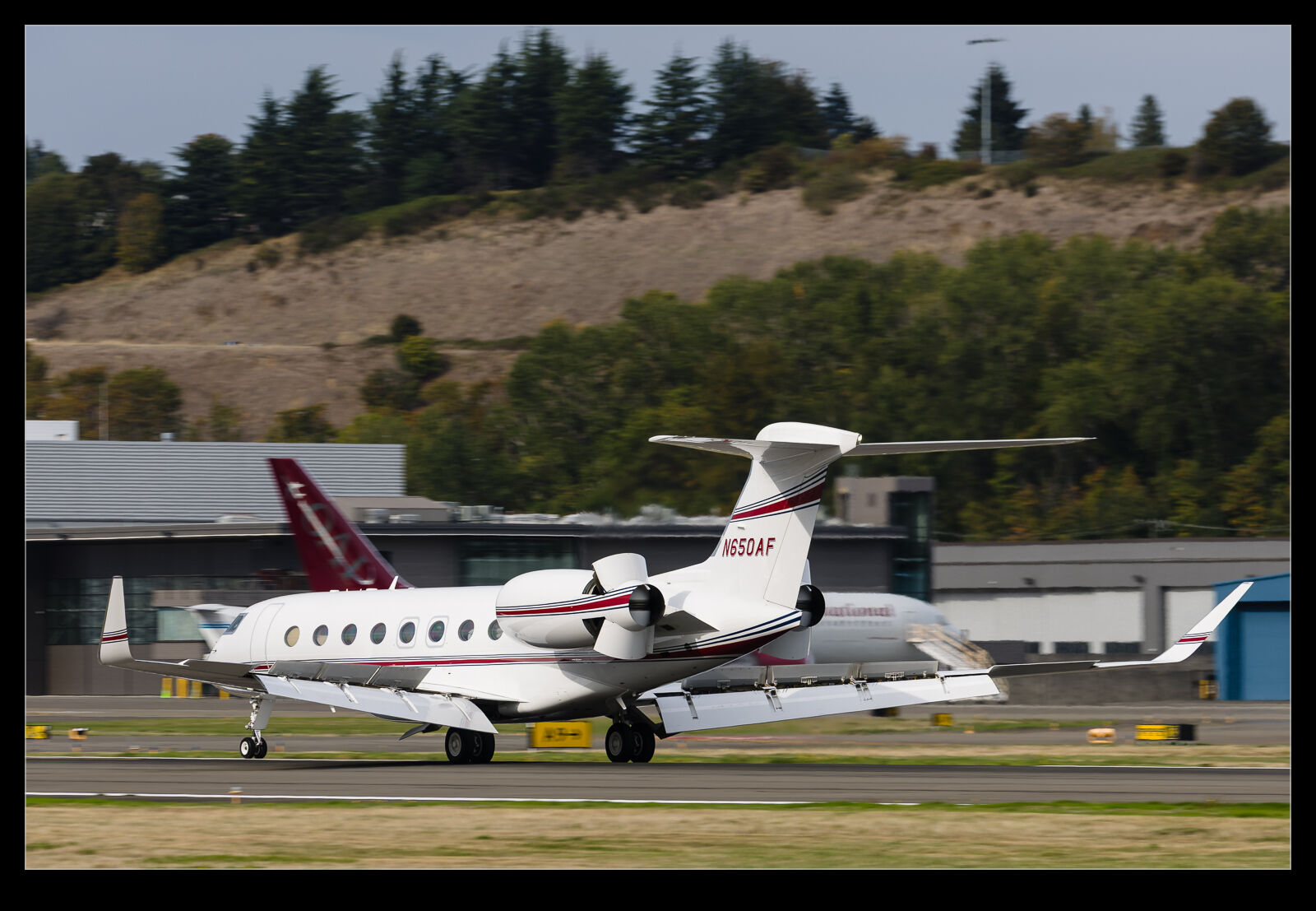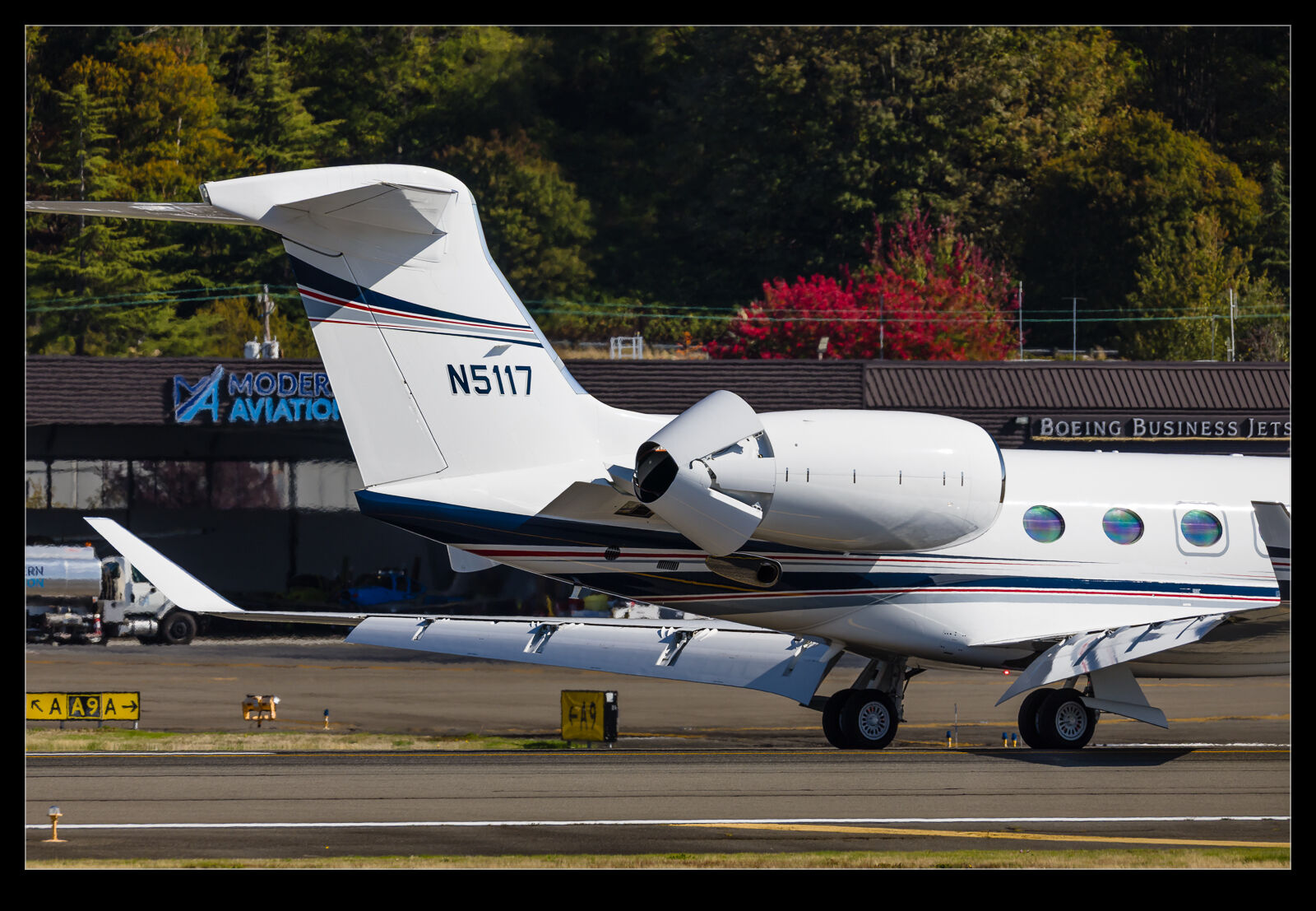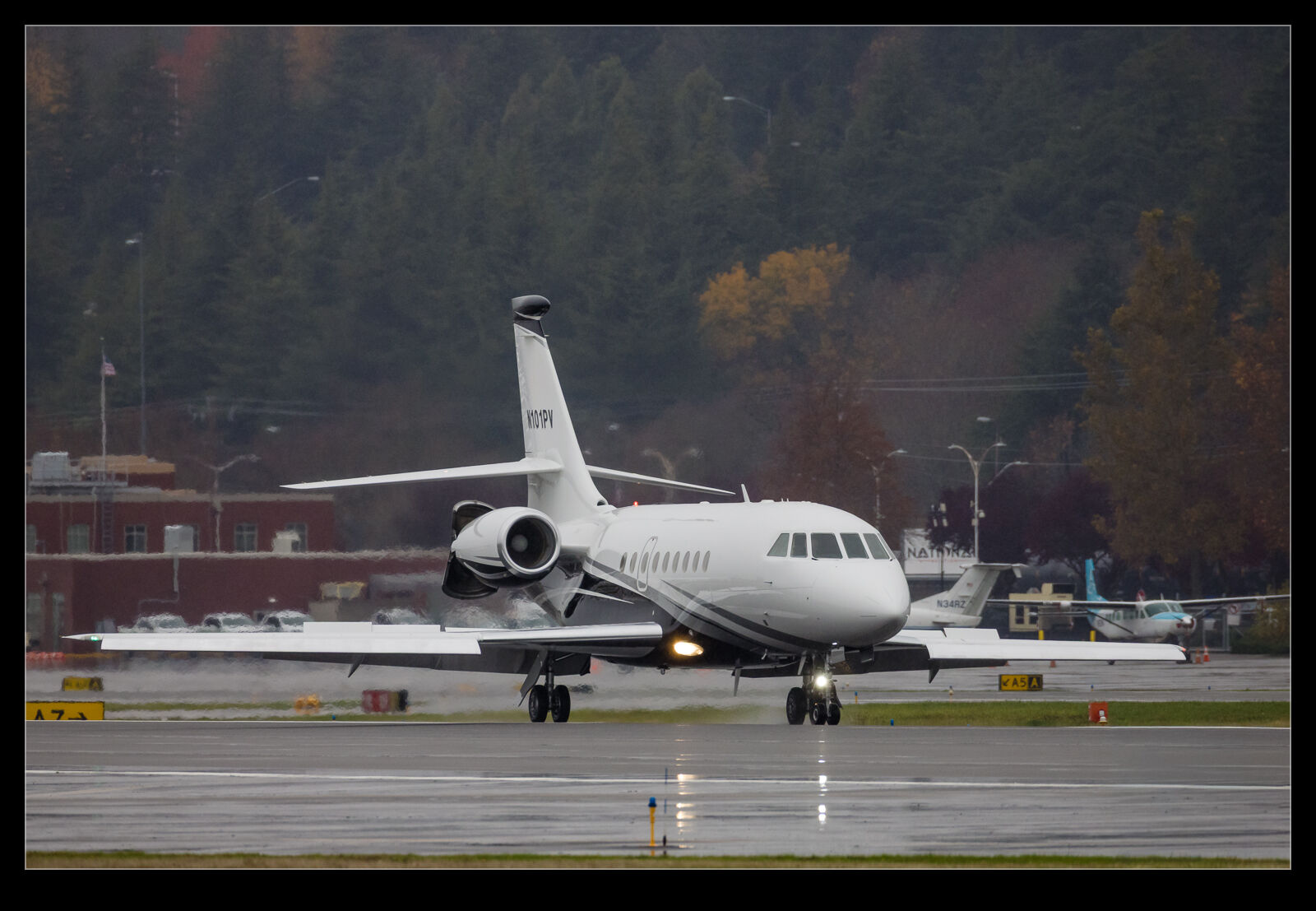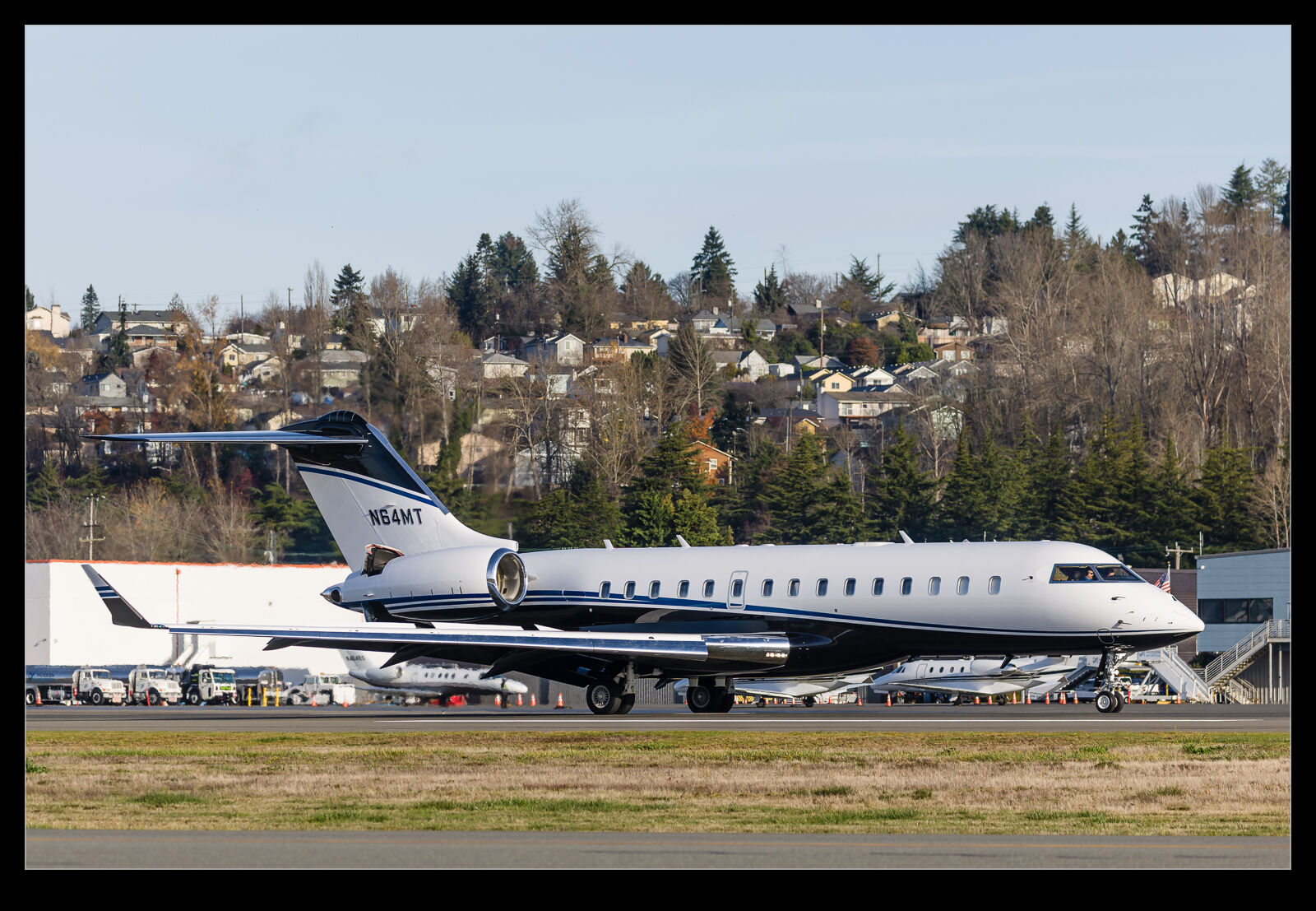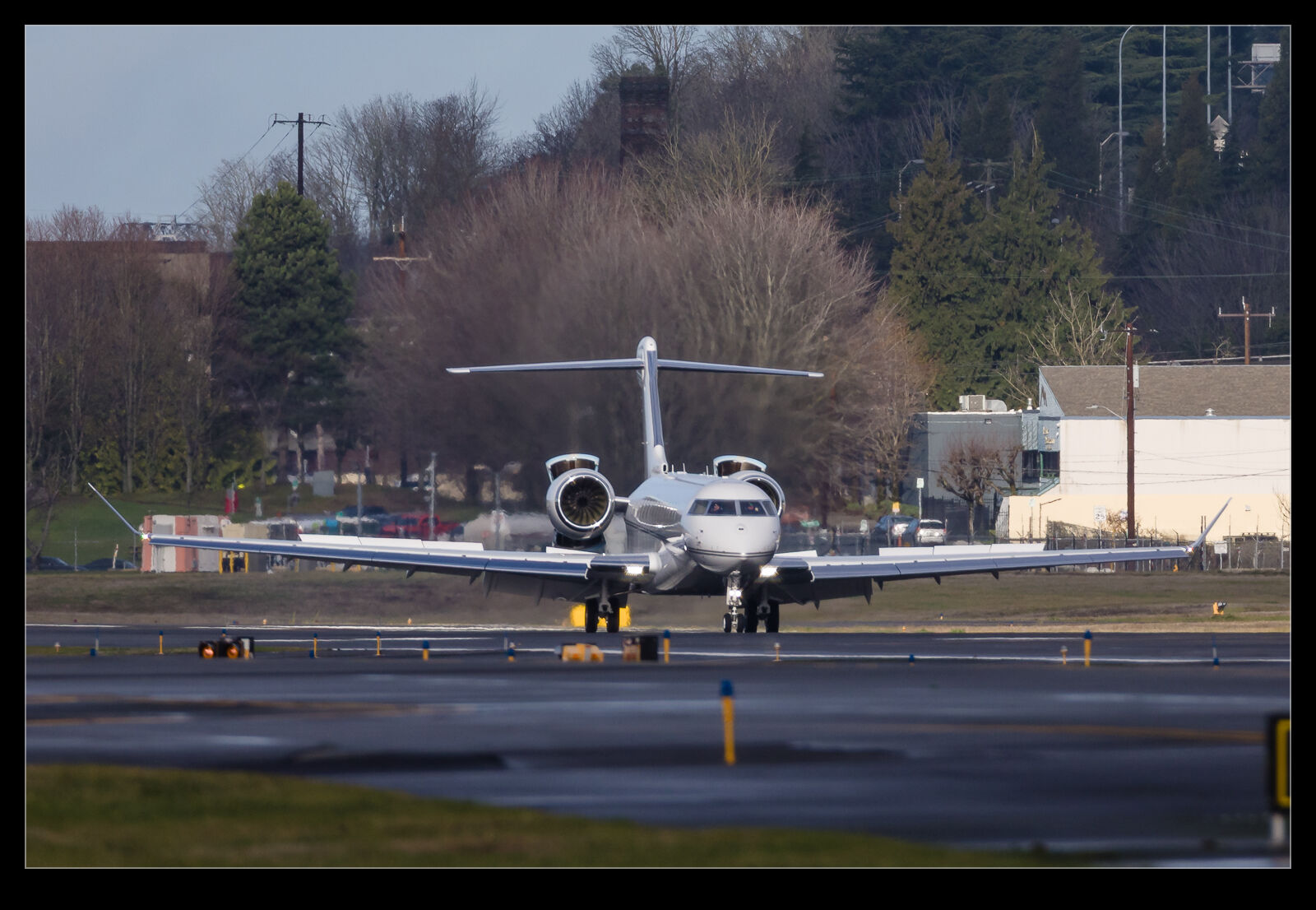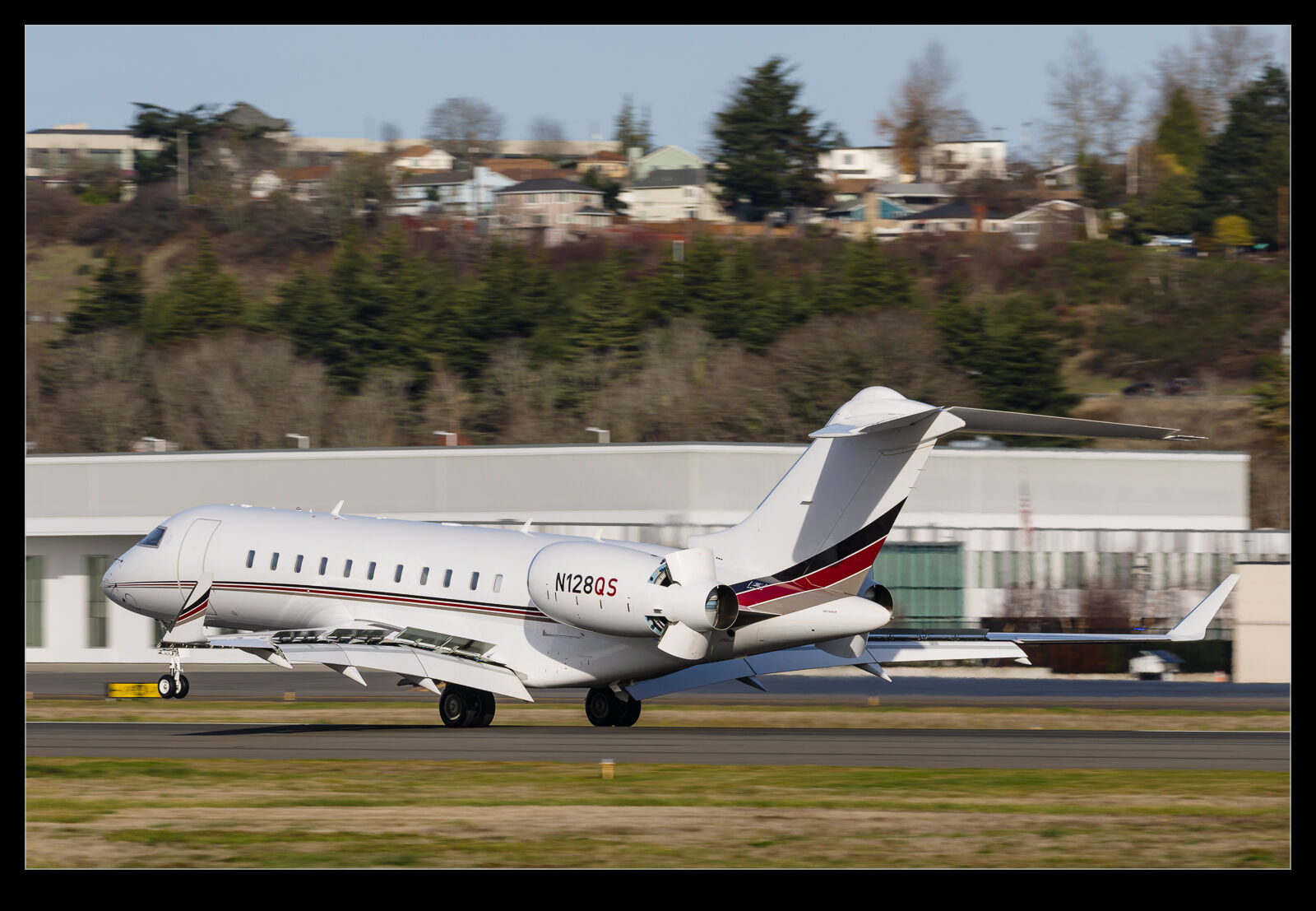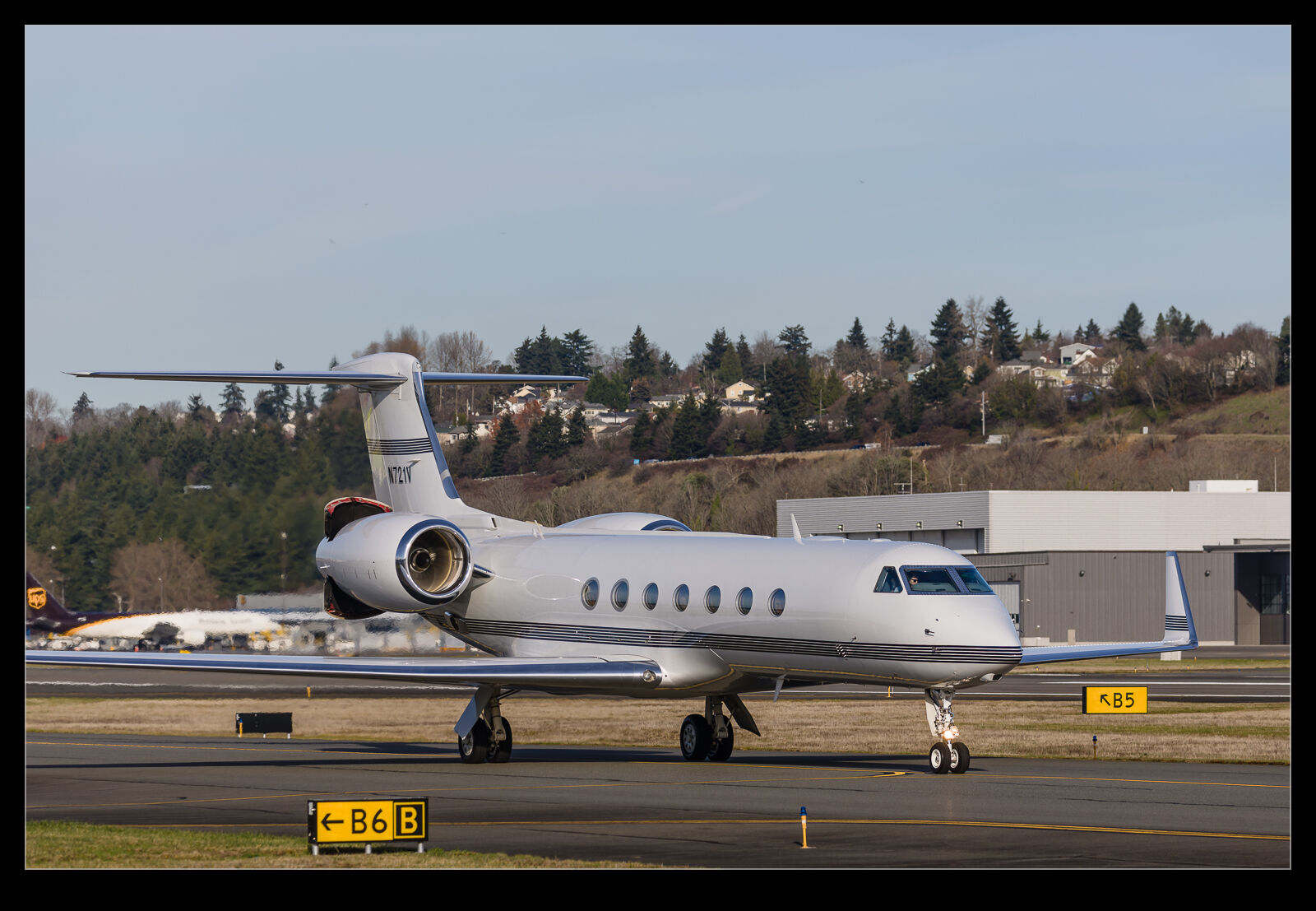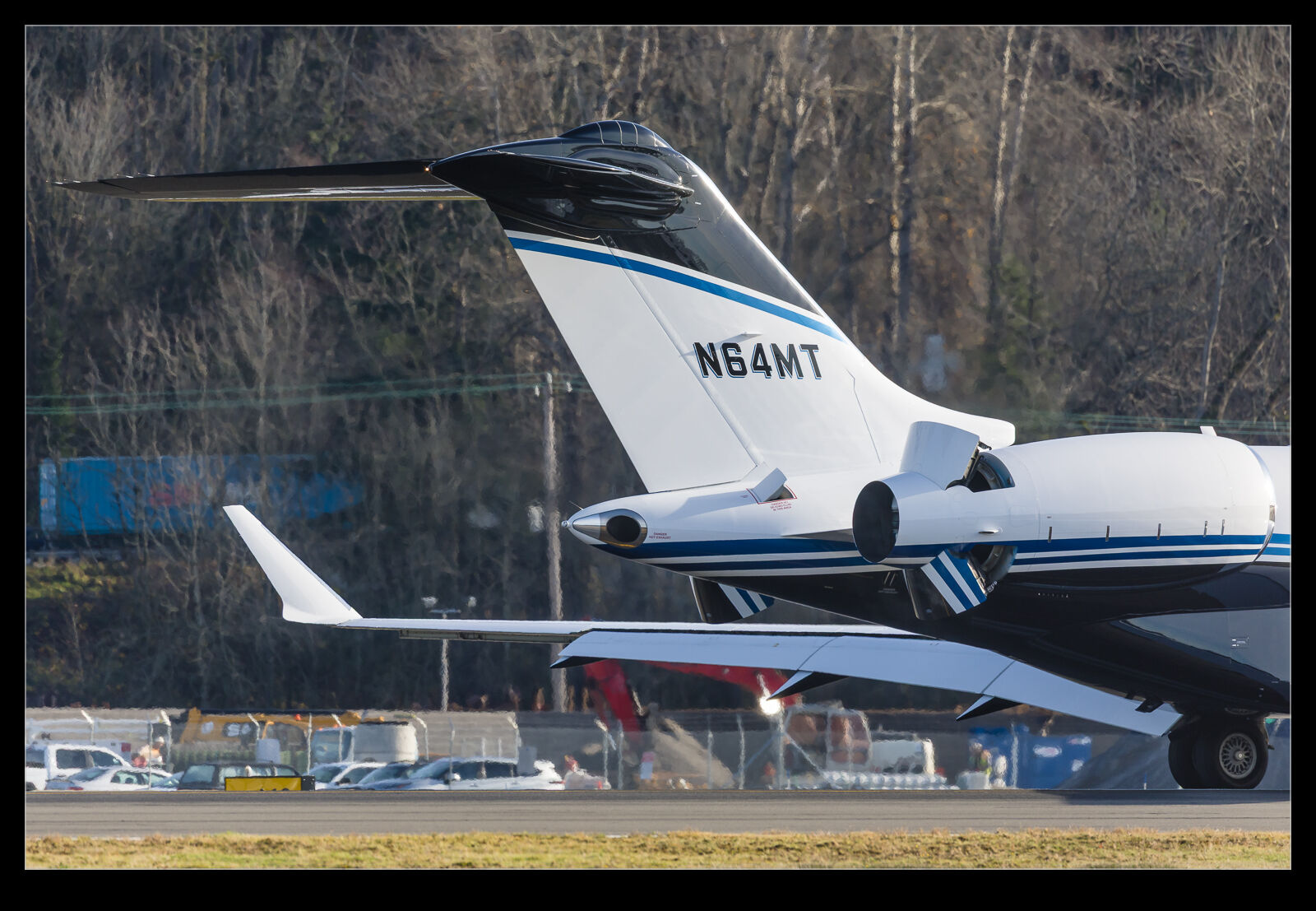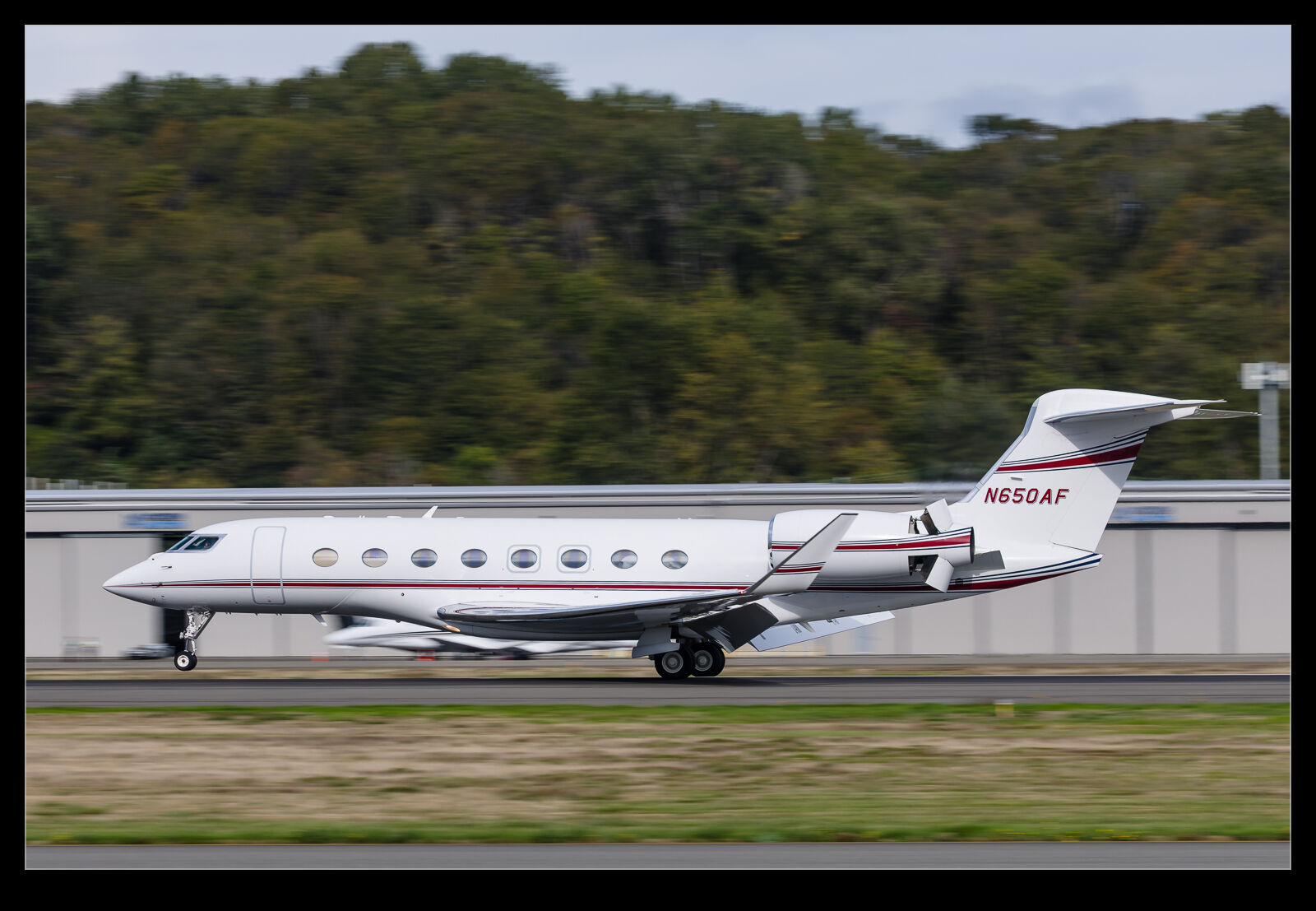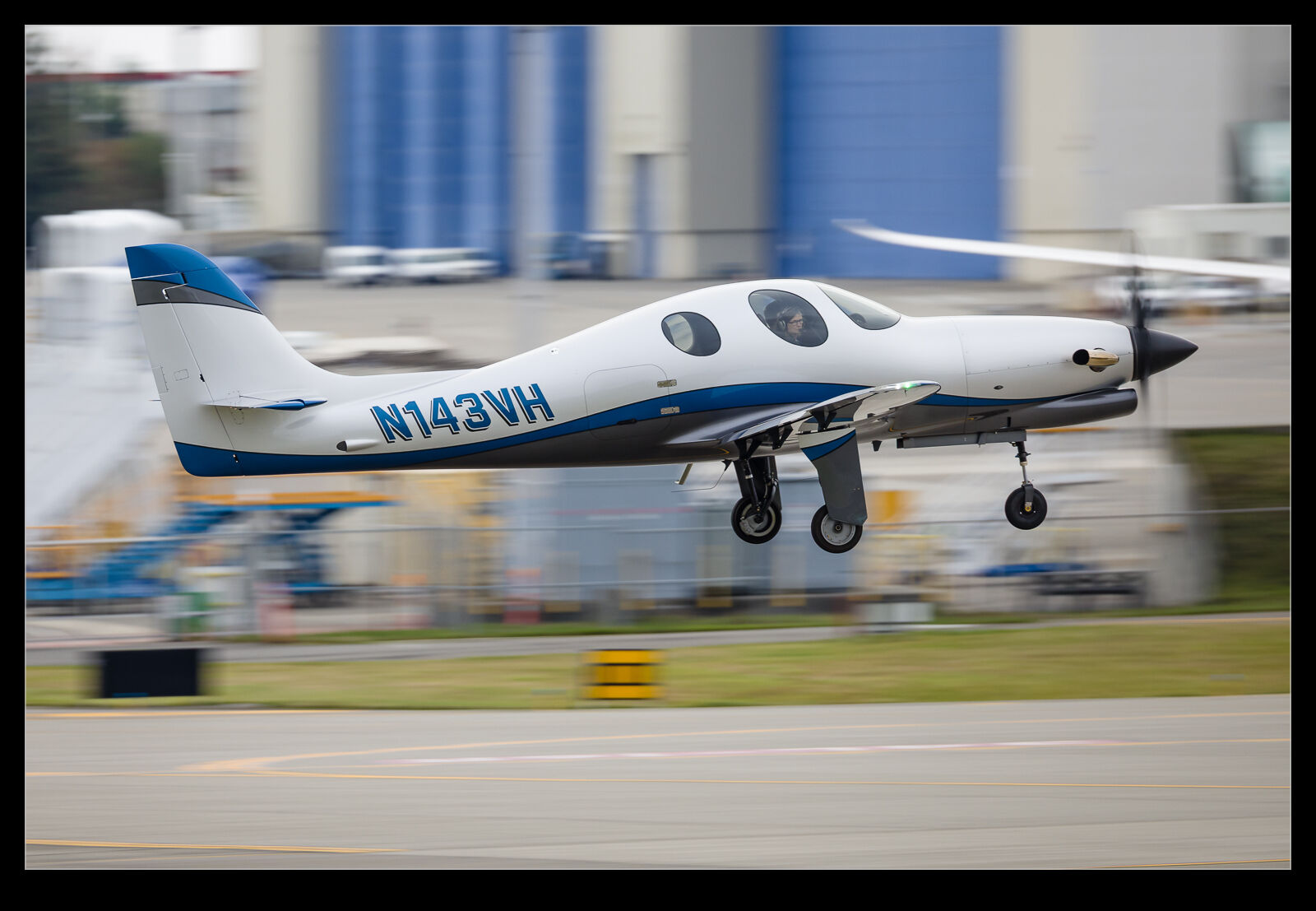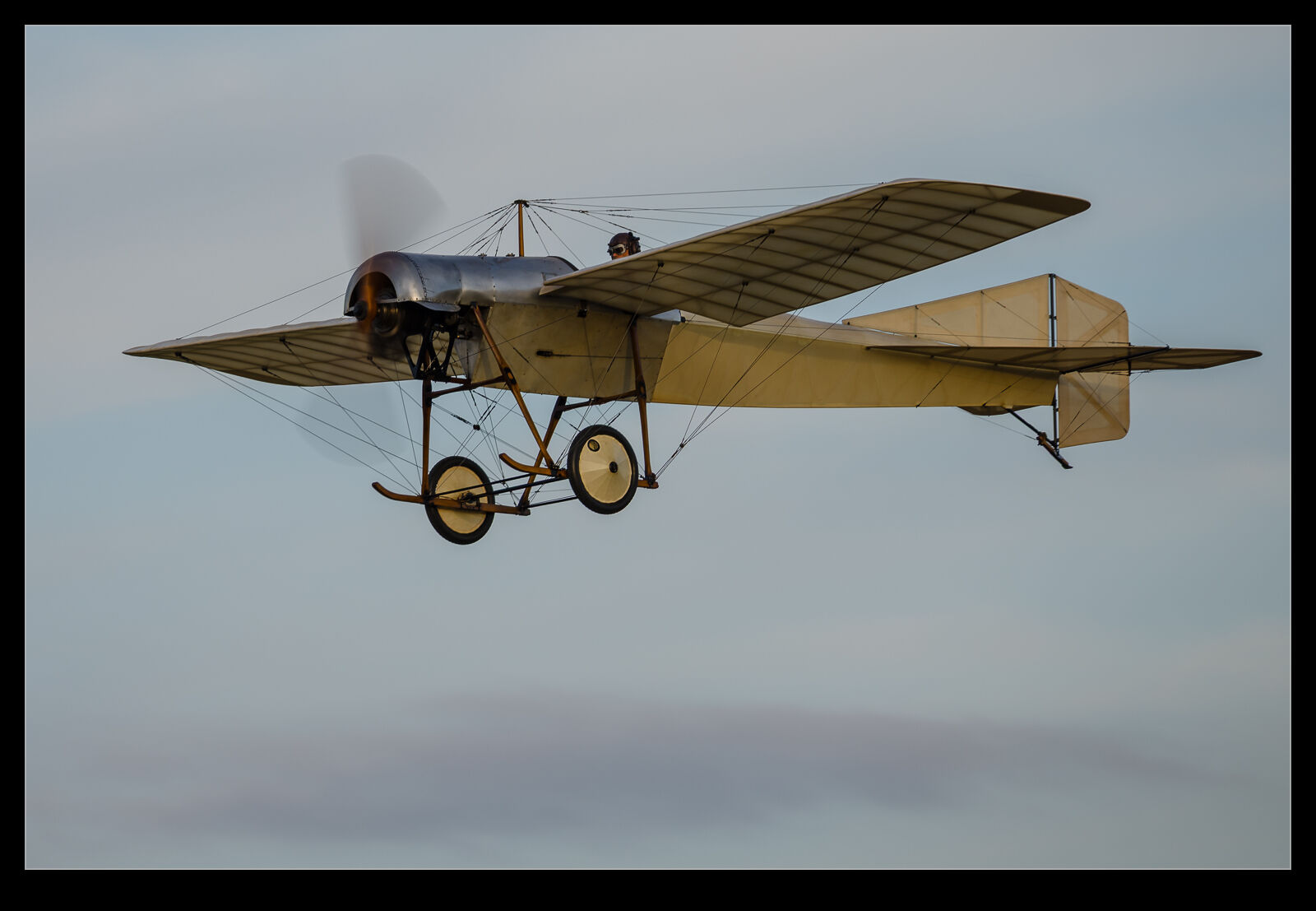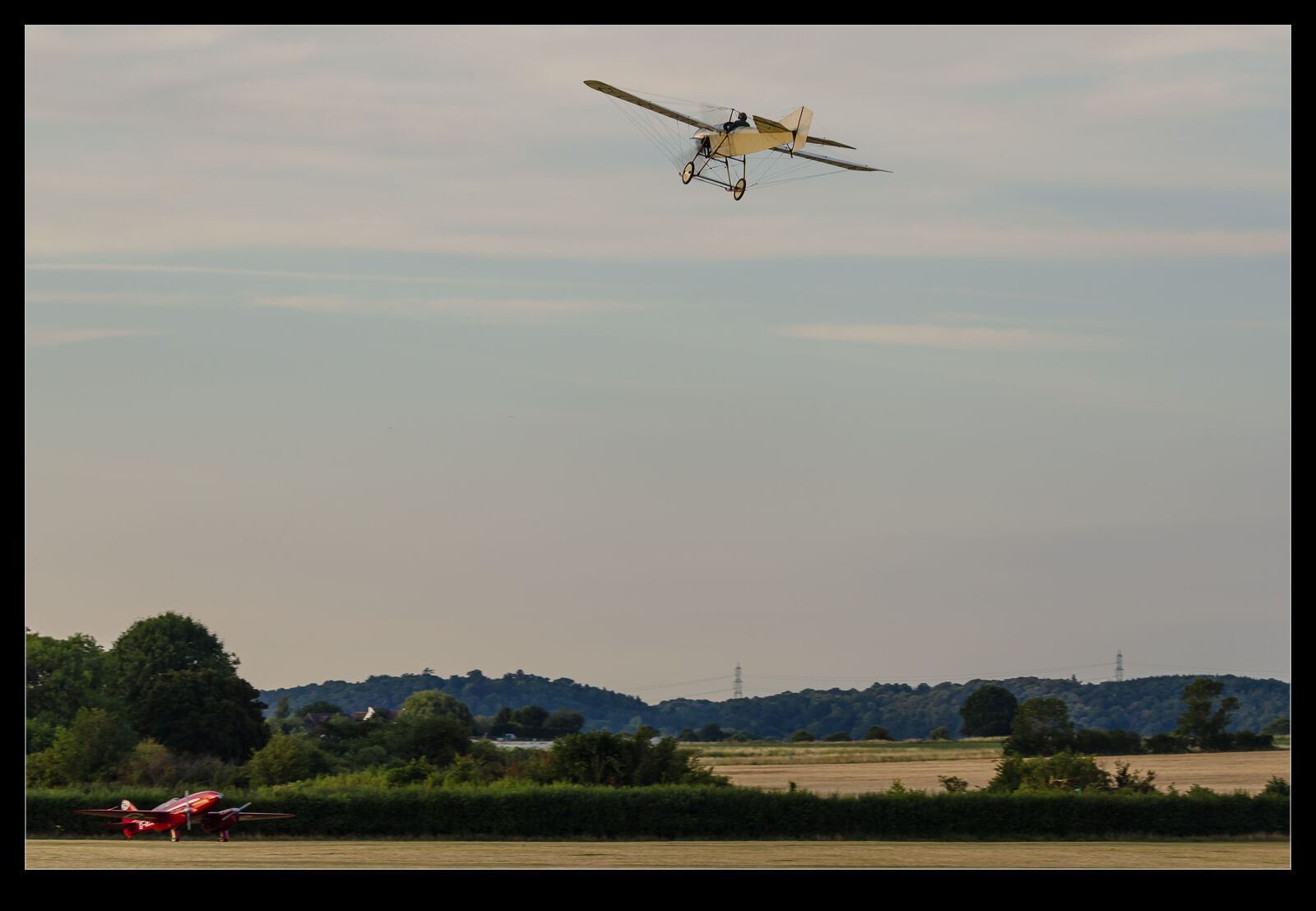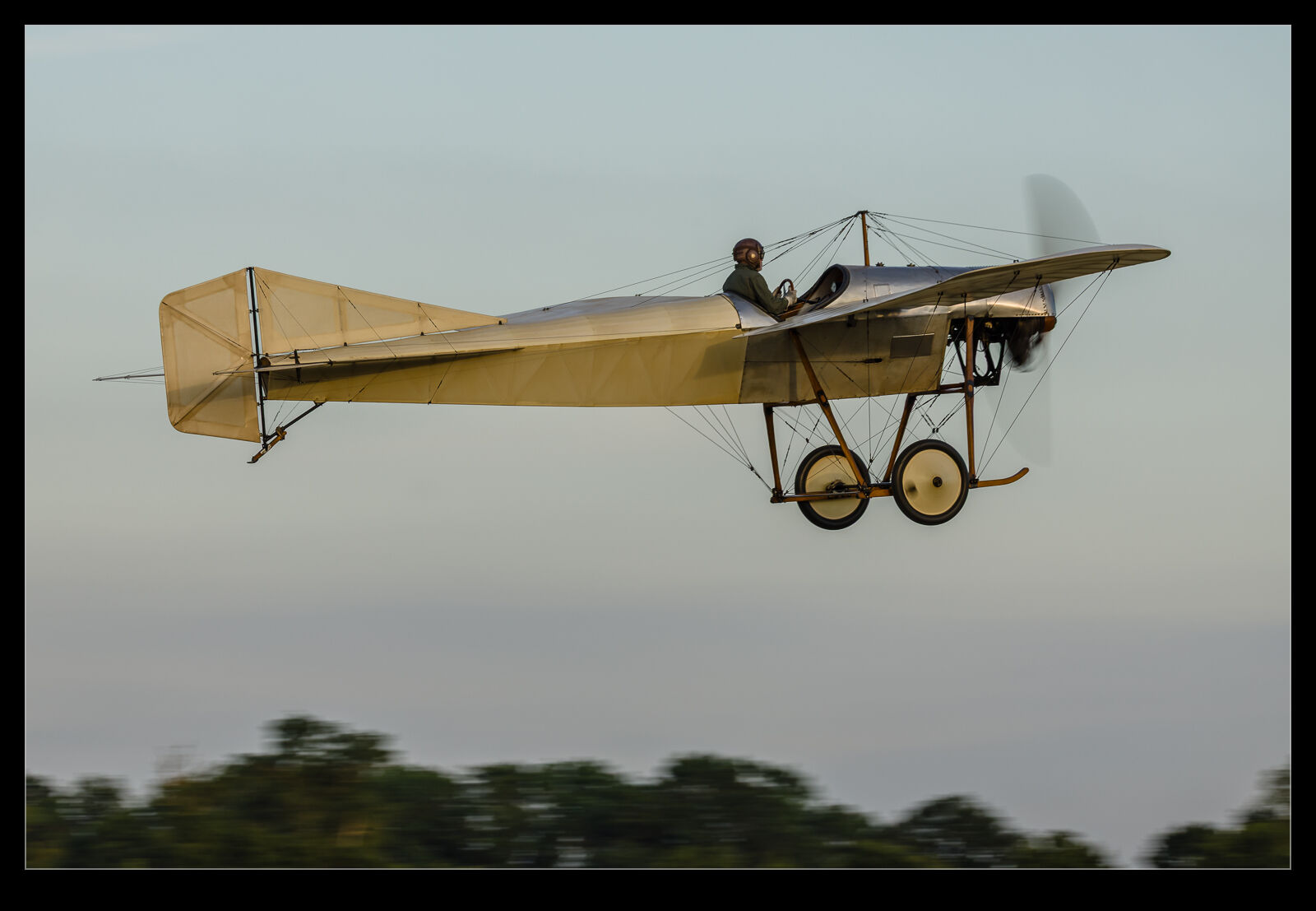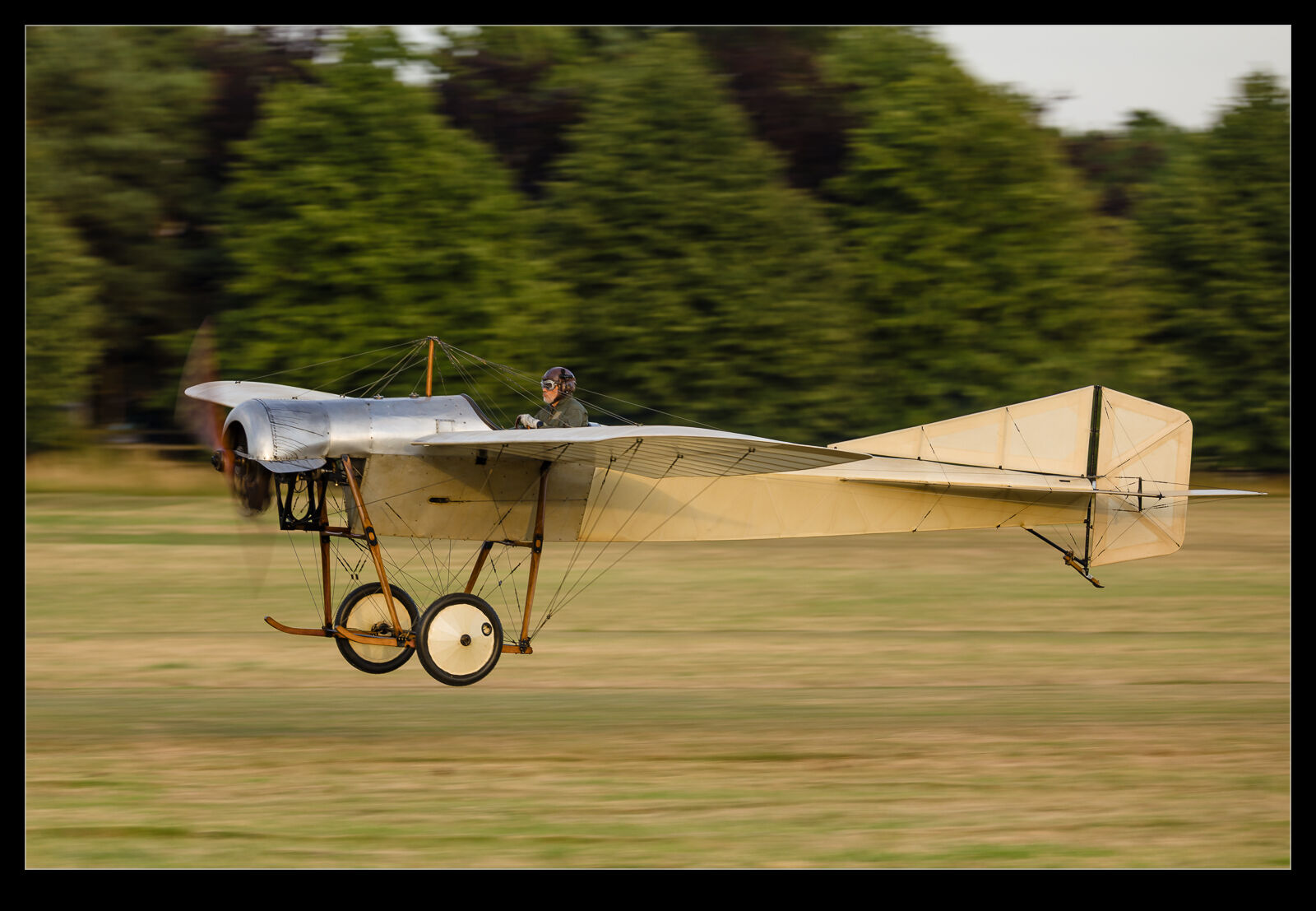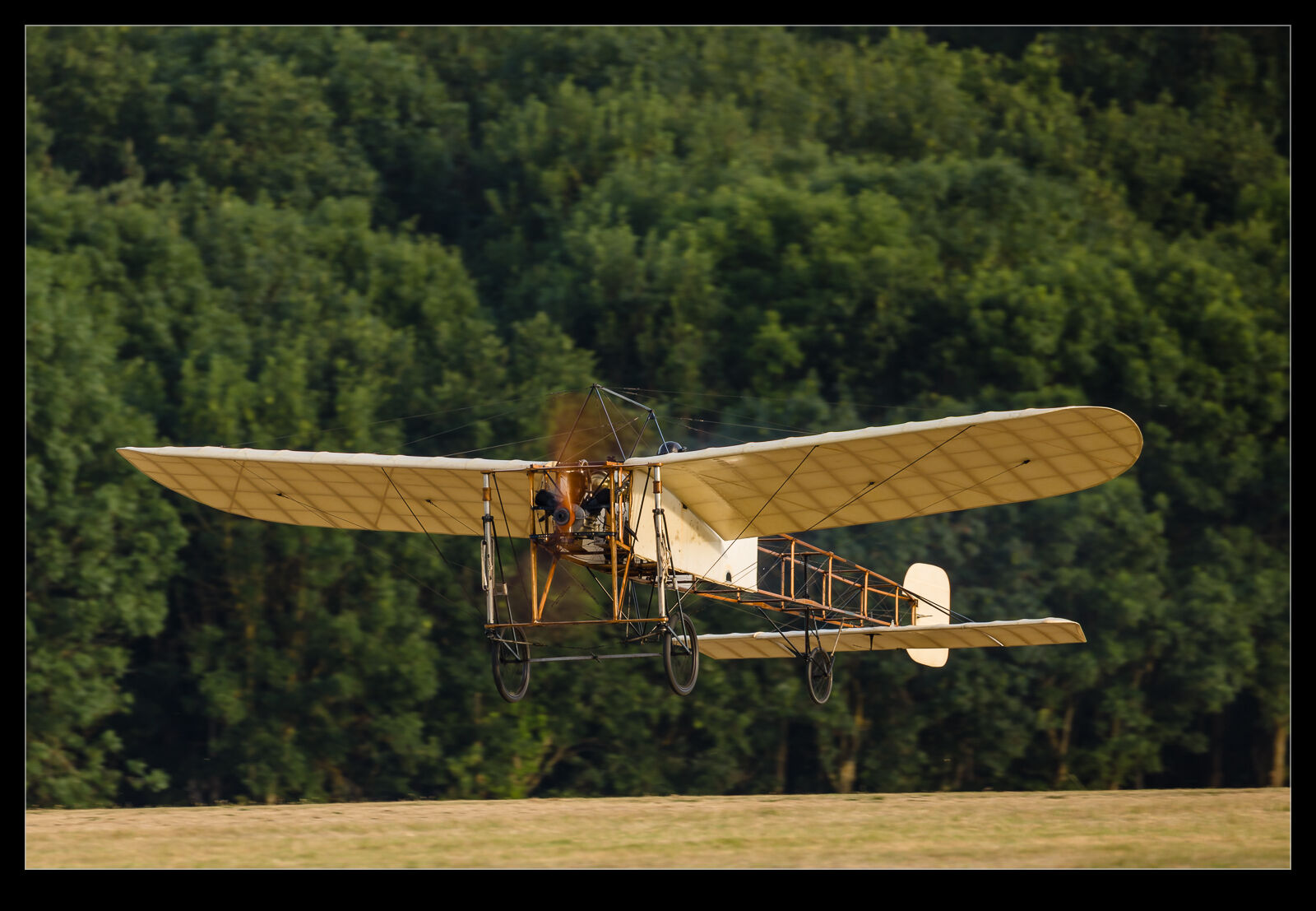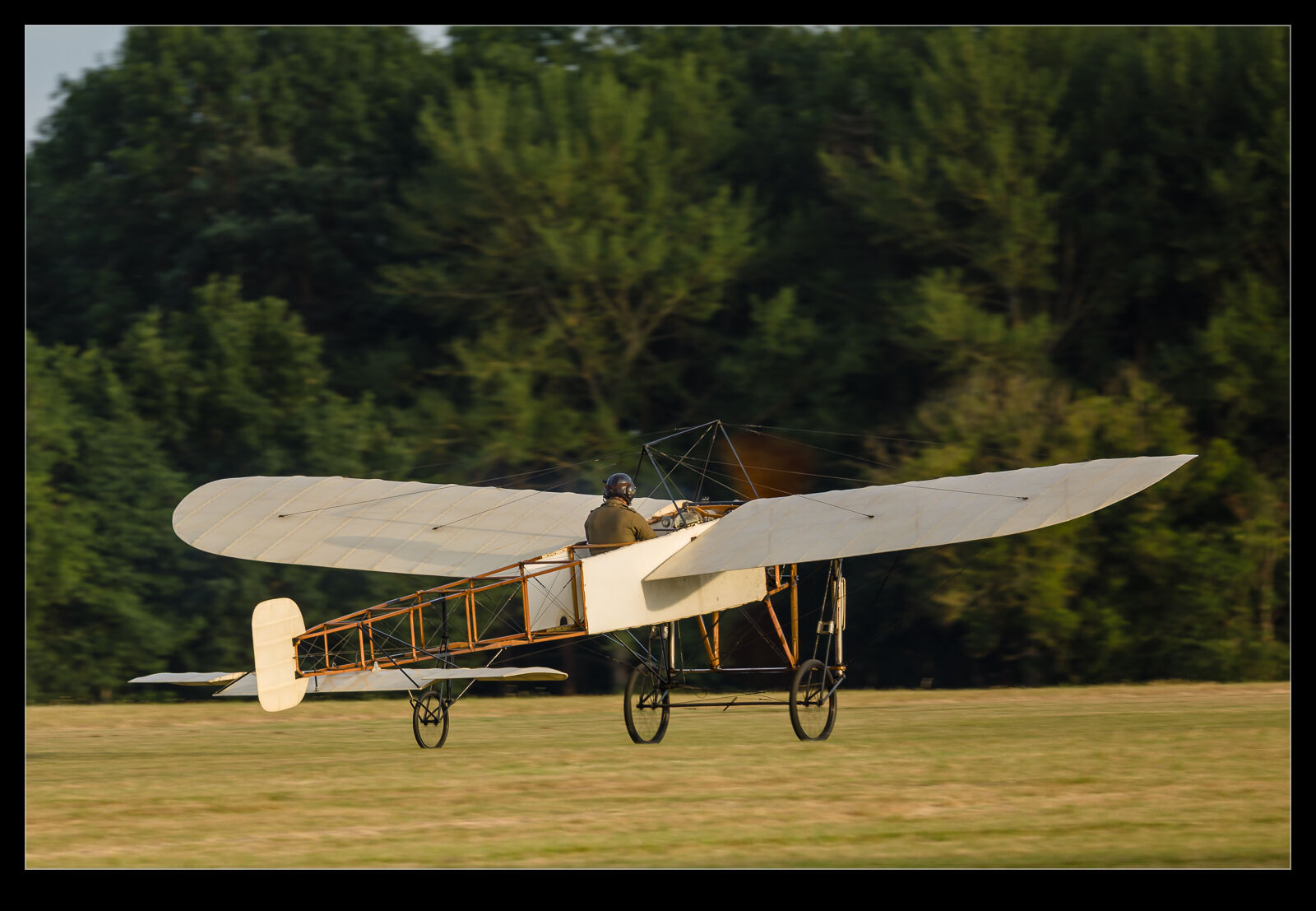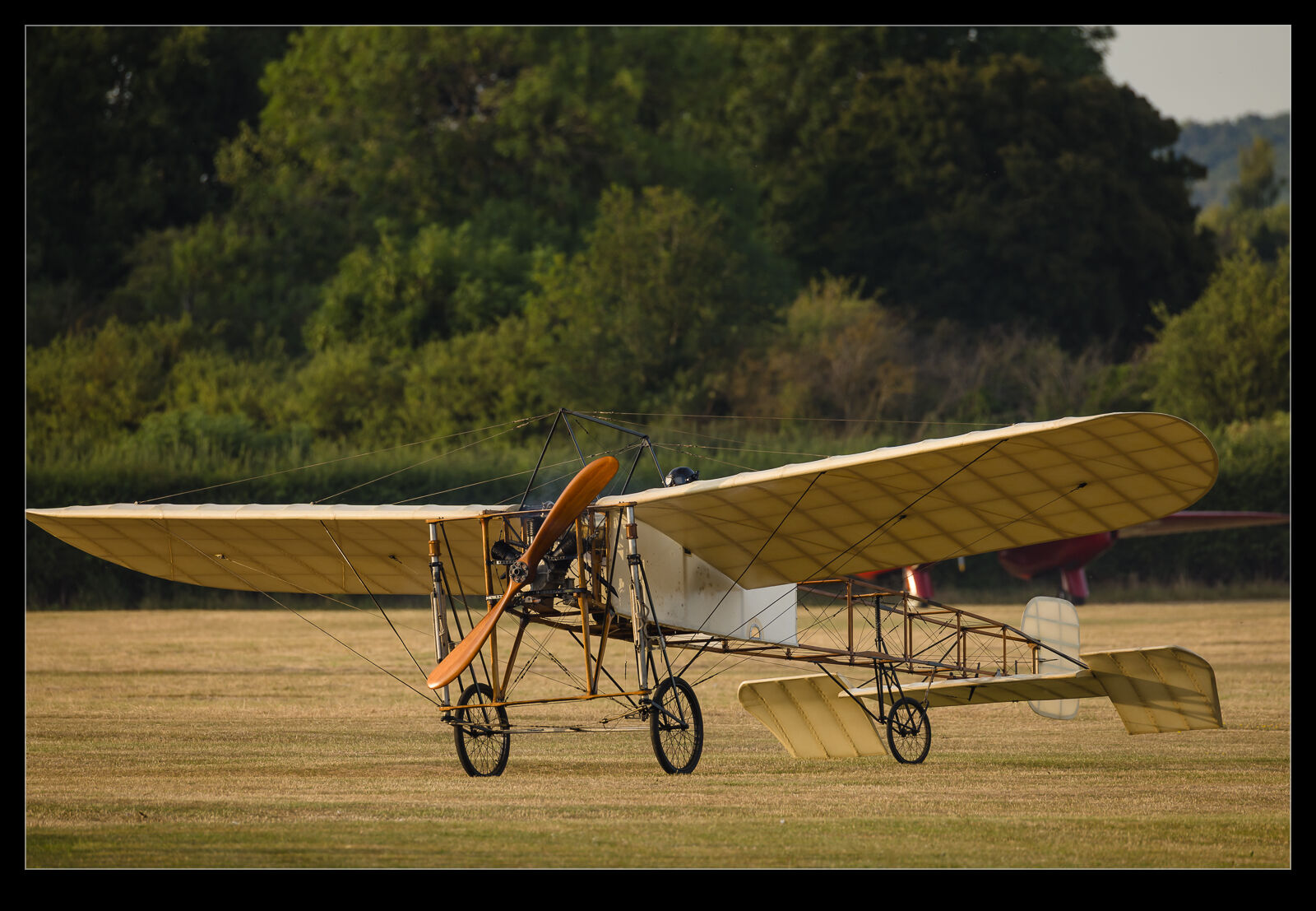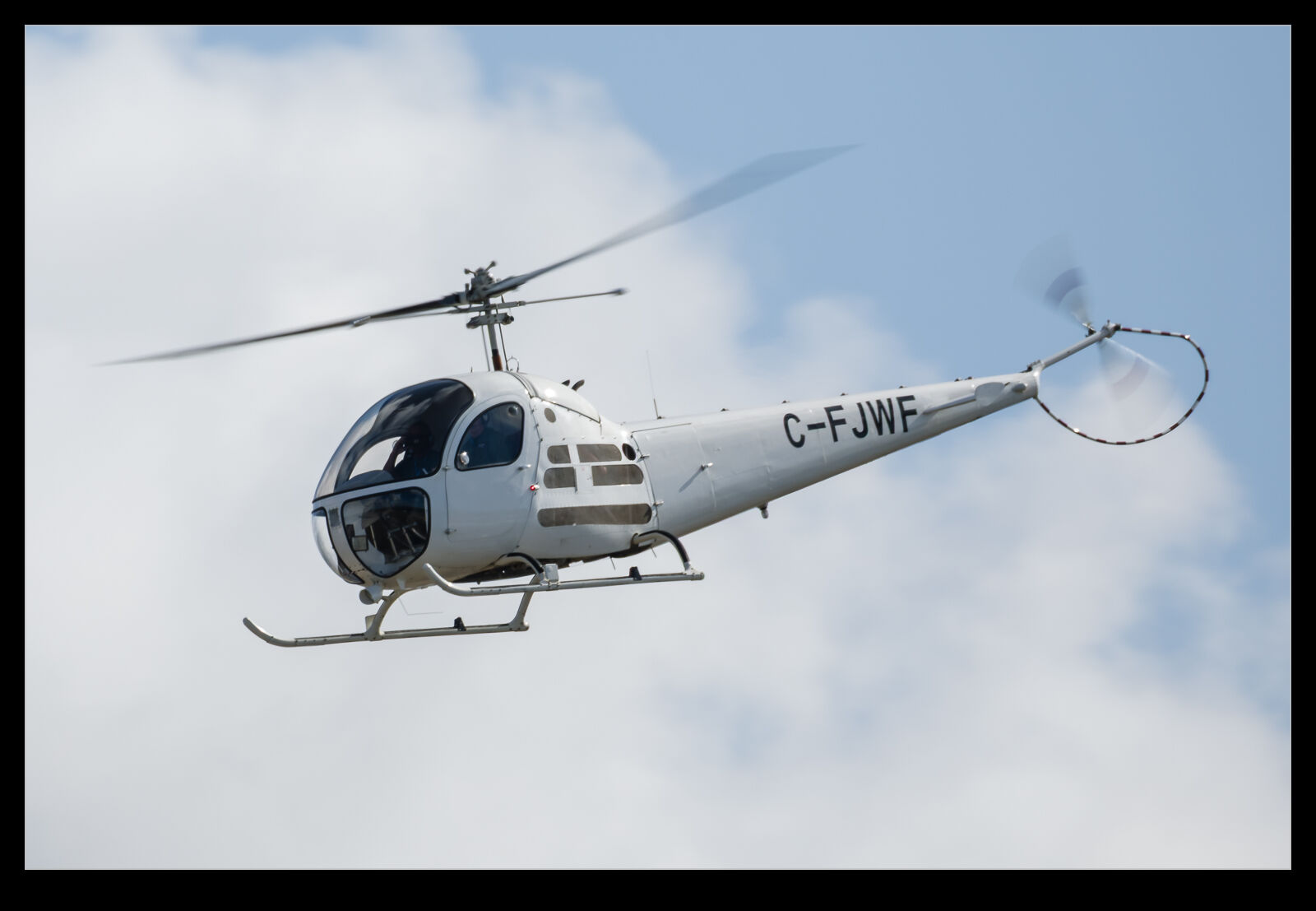 While the majority of aircraft that appear at RIAT are military, you do get some civilian types that show up as well. This year, one of these was a Canadian registered Bell 47. This airframe is a Bell 47H-1 which I am informed is a pretty rare member of the larger family. No idea whether this is true or whether these things are common as muck. I certainly haven’t got a pile of shots of similar airframes but that is hardly proof. Given that it is registered in Canada, I am not sure how much time it is spending in the UK, but it was here and flying so that’ll do!
While the majority of aircraft that appear at RIAT are military, you do get some civilian types that show up as well. This year, one of these was a Canadian registered Bell 47. This airframe is a Bell 47H-1 which I am informed is a pretty rare member of the larger family. No idea whether this is true or whether these things are common as muck. I certainly haven’t got a pile of shots of similar airframes but that is hardly proof. Given that it is registered in Canada, I am not sure how much time it is spending in the UK, but it was here and flying so that’ll do!
Category Archives: civil
Stormy Sunday Atlas 777F
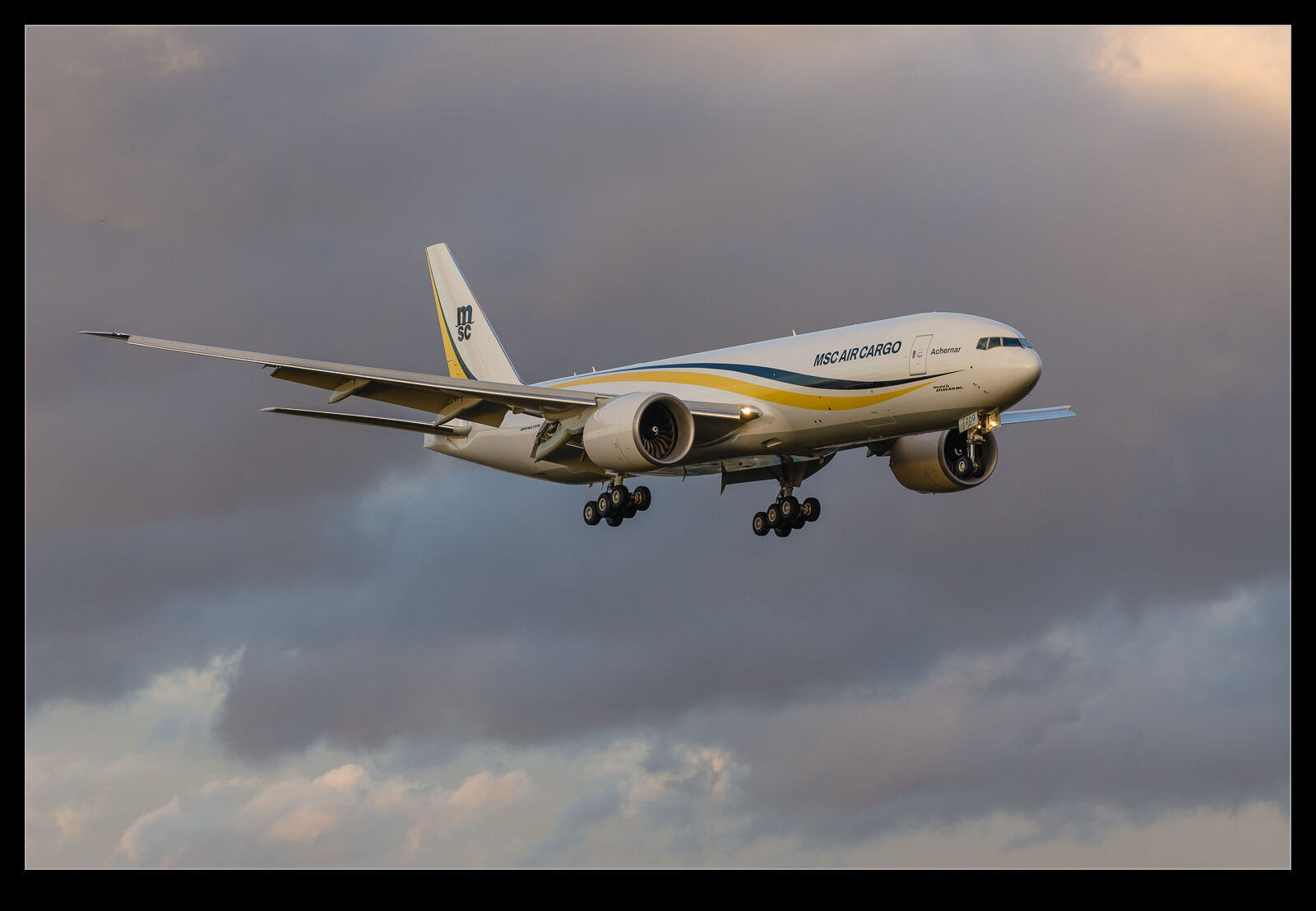 A stormy sky doesn’t immediately inspire you when going for some aircraft photography but, if the light on the subject can end up being okay, a dark background can suddenly seem like a great option. One Sunday an Atlas 777F was up on test at Paine Field. The sky was dark and gloomy but not a solid cloud background. Instead, the clouds were stratified so there was more detail and texture to see.
A stormy sky doesn’t immediately inspire you when going for some aircraft photography but, if the light on the subject can end up being okay, a dark background can suddenly seem like a great option. One Sunday an Atlas 777F was up on test at Paine Field. The sky was dark and gloomy but not a solid cloud background. Instead, the clouds were stratified so there was more detail and texture to see.
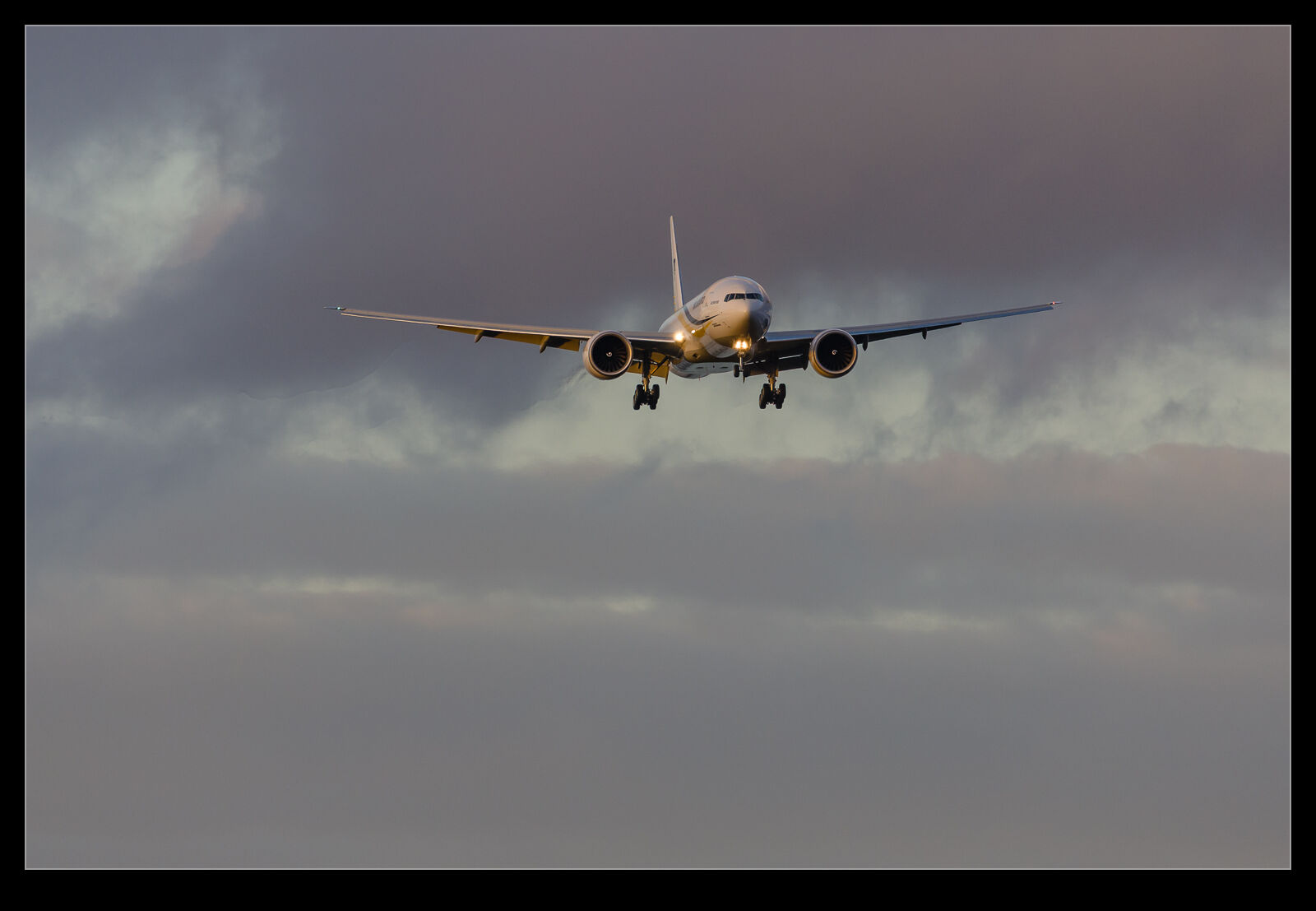 As the 777 came down the approach, it was not brightly illuminated but it was picking up a good amount of light compared to what I had expected to be the case. This did require some thought about the camera settings. When the sky is dark, I often significantly over-expose. This is because the clouds will dominate the metering response and the subject – which is usually quite dark – really disappears. In post processing I can then bring the exposure back down but there is sufficient light on the subject to get a good image of it against the sky.
As the 777 came down the approach, it was not brightly illuminated but it was picking up a good amount of light compared to what I had expected to be the case. This did require some thought about the camera settings. When the sky is dark, I often significantly over-expose. This is because the clouds will dominate the metering response and the subject – which is usually quite dark – really disappears. In post processing I can then bring the exposure back down but there is sufficient light on the subject to get a good image of it against the sky.
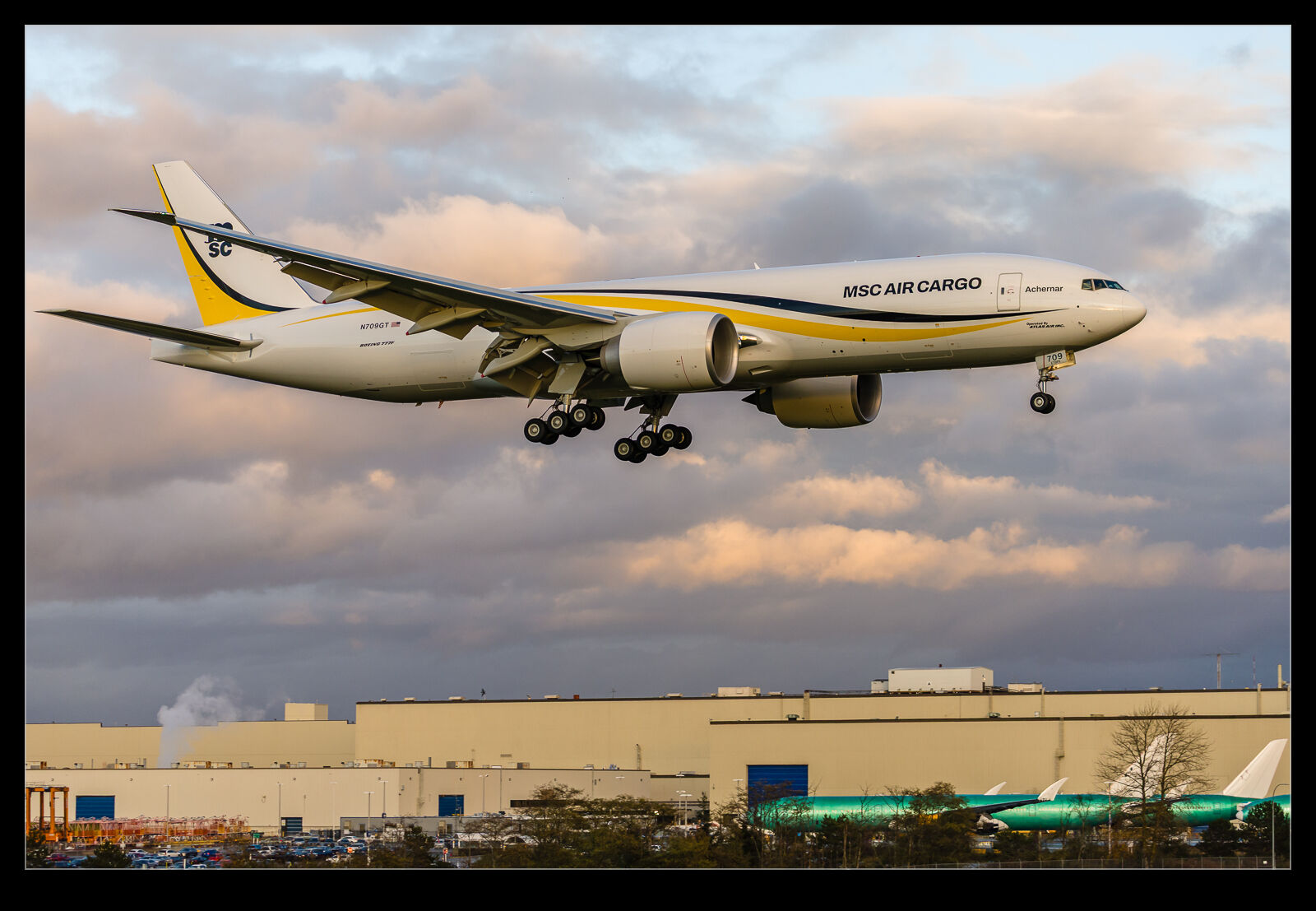 In this case, I had to be more careful. With good light on the subject, the dark sky would result in blowing out the plane. Therefore, I had to keep the exposure compensation off to allow the subject to not get too overexposed and not leave enough latitude for processing it to where I wanted it to be. The results came out okay. This was more important for the longer shots. Once the plane was close in, it started to dominate the metering response and, once on the ground, the illumination was more balanced.
In this case, I had to be more careful. With good light on the subject, the dark sky would result in blowing out the plane. Therefore, I had to keep the exposure compensation off to allow the subject to not get too overexposed and not leave enough latitude for processing it to where I wanted it to be. The results came out okay. This was more important for the longer shots. Once the plane was close in, it started to dominate the metering response and, once on the ground, the illumination was more balanced.
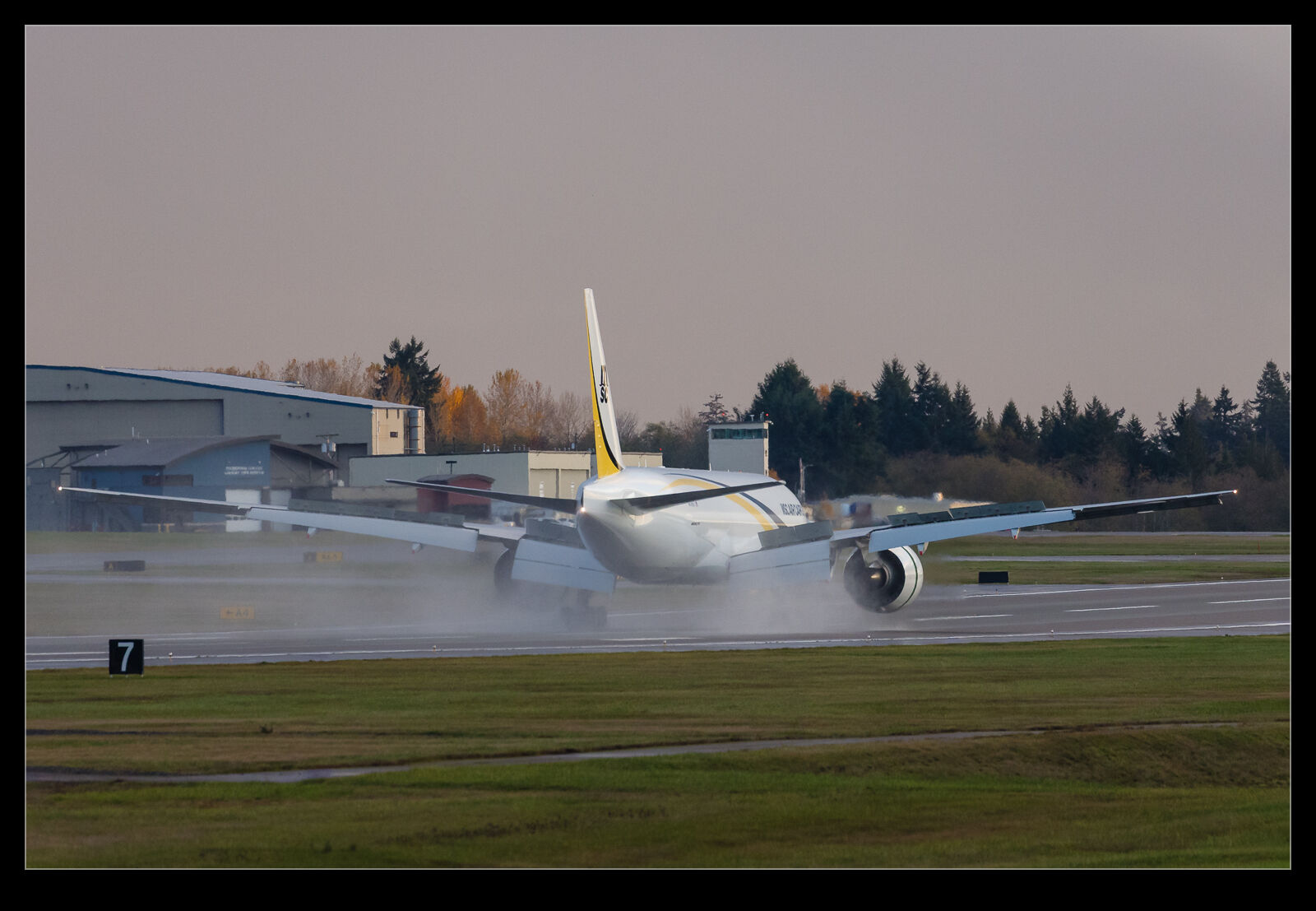 Once they touched down and brought in the reversers, you could see that the conditions had not long ago been wet as the runway still had plenty of water on the surface and the reversers kicked it up in the air.
Once they touched down and brought in the reversers, you could see that the conditions had not long ago been wet as the runway still had plenty of water on the surface and the reversers kicked it up in the air.
A Pair of Edwardians in Gorgeous Light
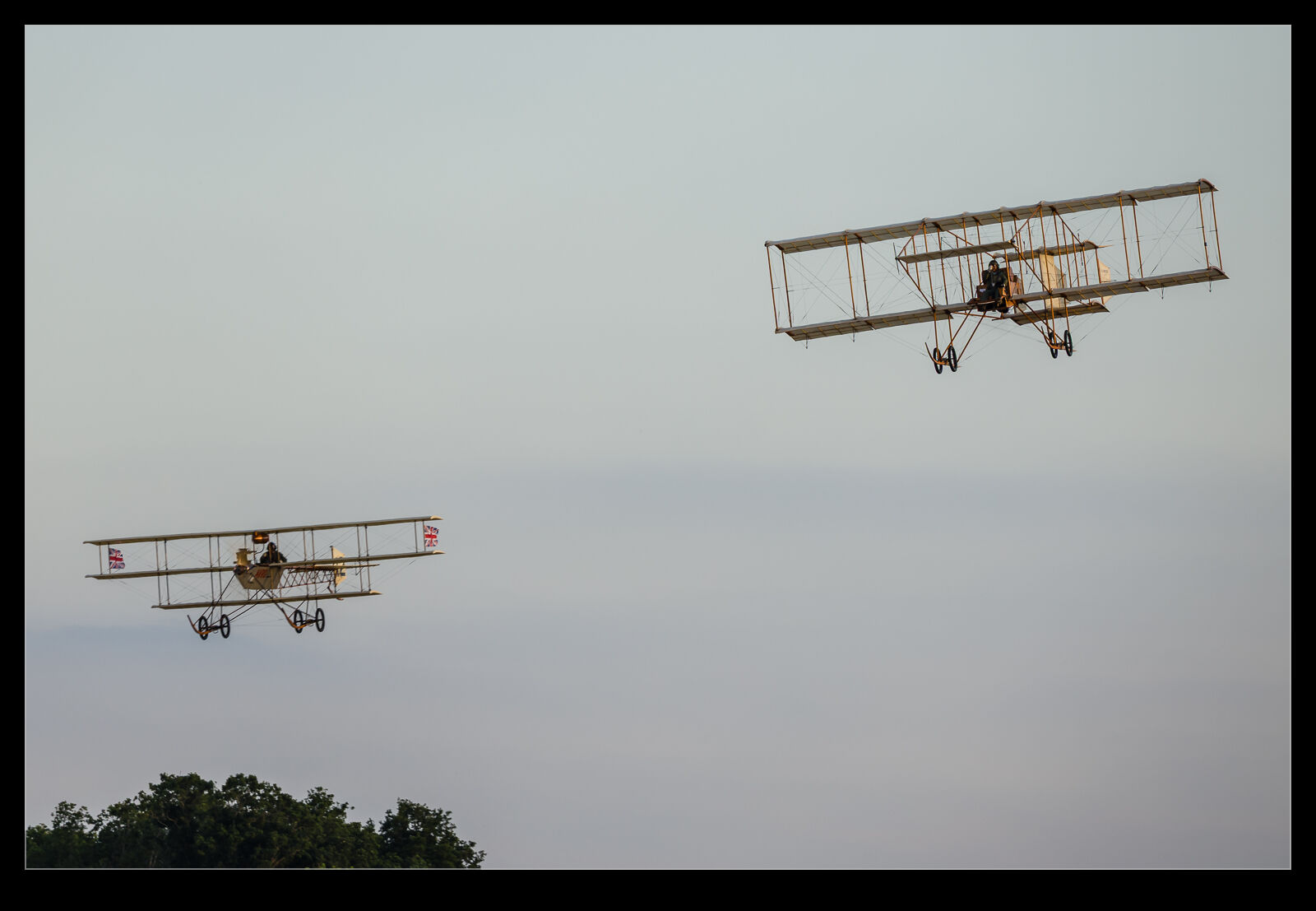 The great conditions for Shuttleworth’s Festival of Flight Sunday show meant we got to see a lot of the more fragile types fly. Later in this section of the show, we had the Bristol Boxkite and the Avro Triplane take to the sky. I know they are both replicas but that doesn’t make them any less rare or vulnerable. They flew around for quite a while and, since they are not speedy aircraft, they can keep it all close in front of the crowd. The light was definitely at its peak during their display. Here are a few shots of the two of them putting on a show.
The great conditions for Shuttleworth’s Festival of Flight Sunday show meant we got to see a lot of the more fragile types fly. Later in this section of the show, we had the Bristol Boxkite and the Avro Triplane take to the sky. I know they are both replicas but that doesn’t make them any less rare or vulnerable. They flew around for quite a while and, since they are not speedy aircraft, they can keep it all close in front of the crowd. The light was definitely at its peak during their display. Here are a few shots of the two of them putting on a show.
This is Not a Canberra or a Lightning!
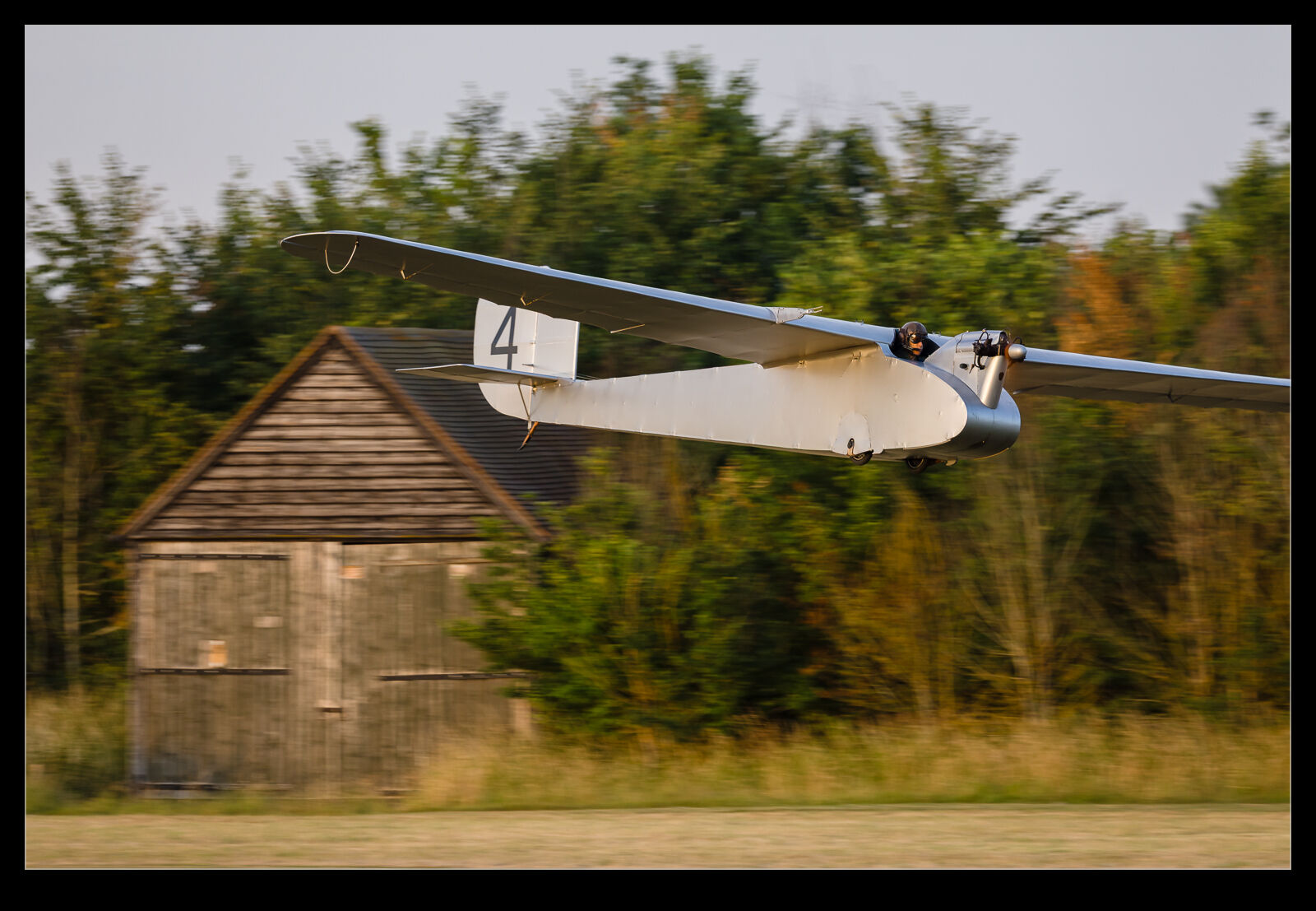 The name English Electric is well known in aviation circles. Before it was subsumed into the British Aircraft Corporation, it had produced the Lightning interceptor and the Canberra bomber. The Lightning might have got more glory, but the Canberra was by far the more successful type with excellent performance. However, there is a lesser-known type that came from the company a long time before.
The name English Electric is well known in aviation circles. Before it was subsumed into the British Aircraft Corporation, it had produced the Lightning interceptor and the Canberra bomber. The Lightning might have got more glory, but the Canberra was by far the more successful type with excellent performance. However, there is a lesser-known type that came from the company a long time before.
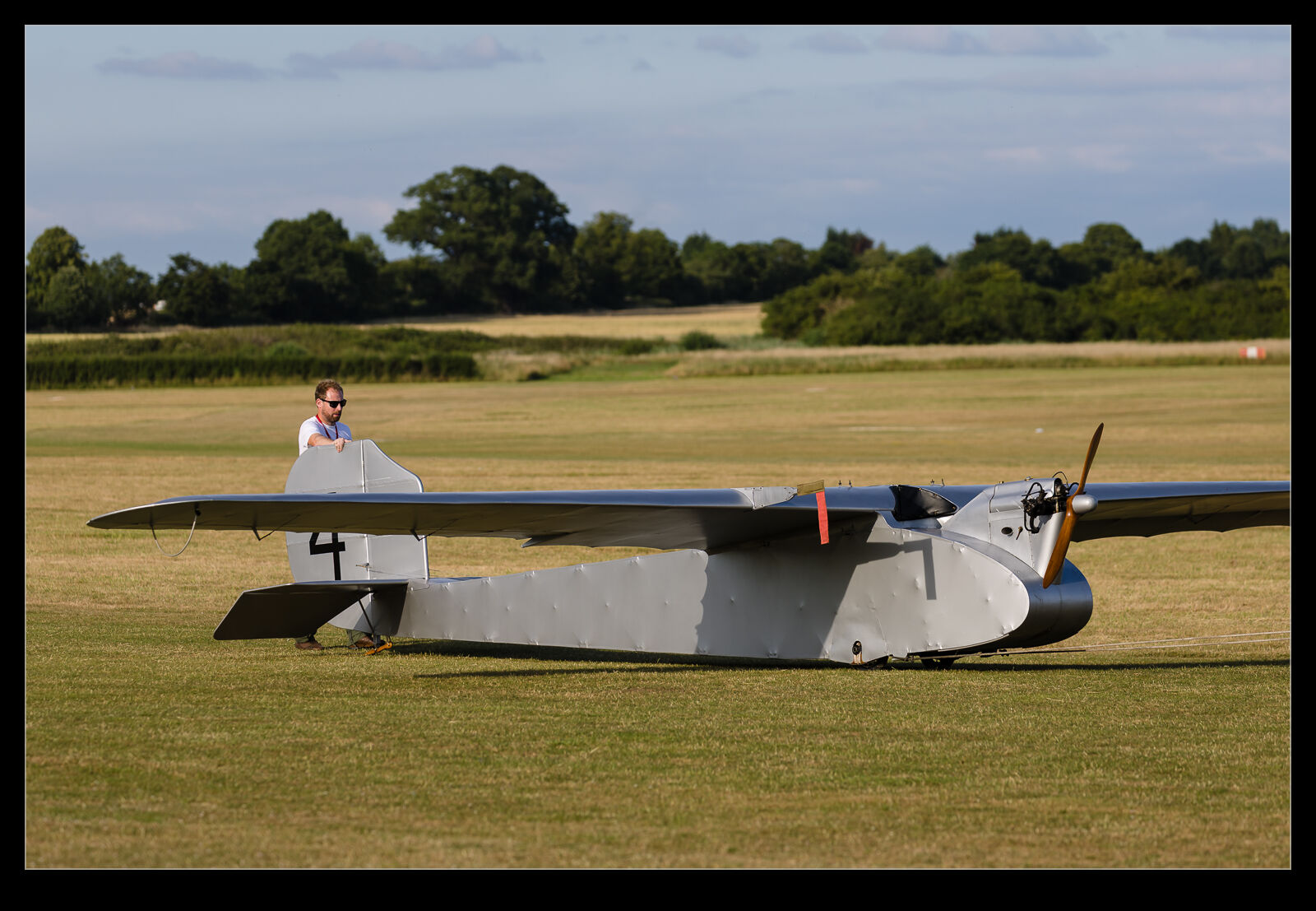 I first heard of the Wren when I read about it in Roly Beamont’s book. He was the chief test pilot at English Electric, and he described this vintage aircraft with very limited power that the company restored and hopped along the runway at Warton many years before I worked there. The aircraft now lives at Old Warden and it was brought out to fly during the Shuttleworth Festival of Flight. It was towed up to the far end of the field in preparation for its flight. The conditions were smooth, so it was going to be able to perform.
I first heard of the Wren when I read about it in Roly Beamont’s book. He was the chief test pilot at English Electric, and he described this vintage aircraft with very limited power that the company restored and hopped along the runway at Warton many years before I worked there. The aircraft now lives at Old Warden and it was brought out to fly during the Shuttleworth Festival of Flight. It was towed up to the far end of the field in preparation for its flight. The conditions were smooth, so it was going to be able to perform.
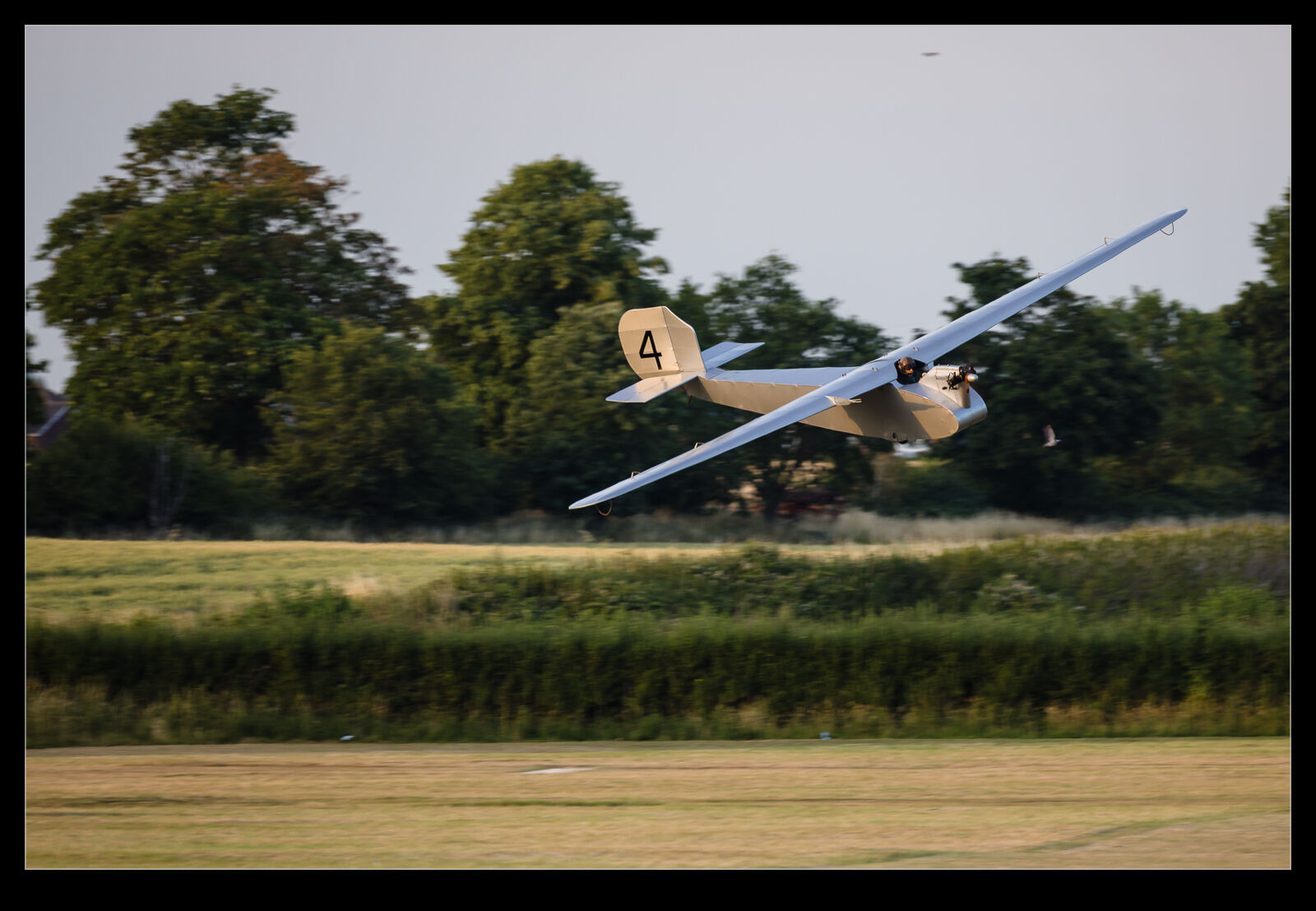 Having read that it was not over-endowed with power and that the Warton tests had involved some basic hops along the runway, this was what I had anticipated would be the case here. However, they were more ambitious. After flying the length of the field, a turn was made for a return run. I have to admit, when I first saw the turn, I did fear that all was not well. The whole flight was at low level, so the turn was also low. The angle made it look like the plane was heading for the trees. However, this was quite normal and in control. Even so, every turn made me tense up slightly. I guess by the end of the flight, I was getting used to it. Even so, it was quite unlike most flying I have watched.
Having read that it was not over-endowed with power and that the Warton tests had involved some basic hops along the runway, this was what I had anticipated would be the case here. However, they were more ambitious. After flying the length of the field, a turn was made for a return run. I have to admit, when I first saw the turn, I did fear that all was not well. The whole flight was at low level, so the turn was also low. The angle made it look like the plane was heading for the trees. However, this was quite normal and in control. Even so, every turn made me tense up slightly. I guess by the end of the flight, I was getting used to it. Even so, it was quite unlike most flying I have watched.
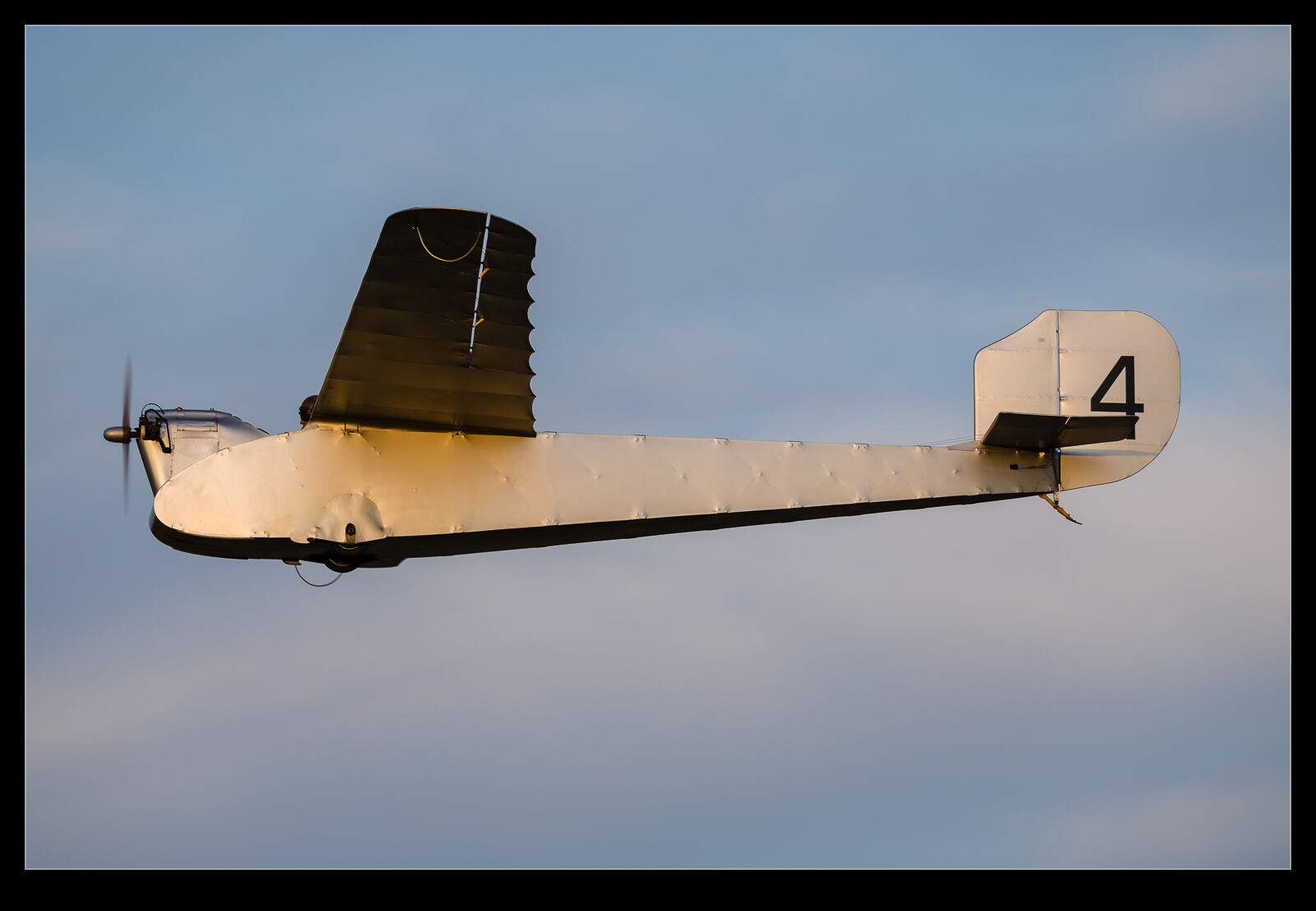 Multiple passes were made during the flight. The light was definitely playing ball along certain parts of the passes so I was able to grab quite a few shots. It’s not the most elegant looking plane and I imagine the view for the pilot is pretty minimal. Even so, as rarities go, it is right up there so to see it fly was a nice result.
Multiple passes were made during the flight. The light was definitely playing ball along certain parts of the passes so I was able to grab quite a few shots. It’s not the most elegant looking plane and I imagine the view for the pilot is pretty minimal. Even so, as rarities go, it is right up there so to see it fly was a nice result.
50 Years of Popham
 This aviation moment was a bit of a last-minute thing. We don’t live terribly far from Popham’s airfield, and I have driven past it more time than I can recall including when travelling to visit family in Andover before we ended up living in Hampshire. However, I had never actually been to the airfield before. I had seen that they were having a celebration of the fiftieth anniversary of the first use of the field, but I did have other stuff going on at home. When I had finished that, I knew I needed to get a bike ride in as part of my ongoing (if feeble) preparation for the charity ride I had coming up. I decided to ride up to Popham and back and swing by the fly in.
This aviation moment was a bit of a last-minute thing. We don’t live terribly far from Popham’s airfield, and I have driven past it more time than I can recall including when travelling to visit family in Andover before we ended up living in Hampshire. However, I had never actually been to the airfield before. I had seen that they were having a celebration of the fiftieth anniversary of the first use of the field, but I did have other stuff going on at home. When I had finished that, I knew I needed to get a bike ride in as part of my ongoing (if feeble) preparation for the charity ride I had coming up. I decided to ride up to Popham and back and swing by the fly in.
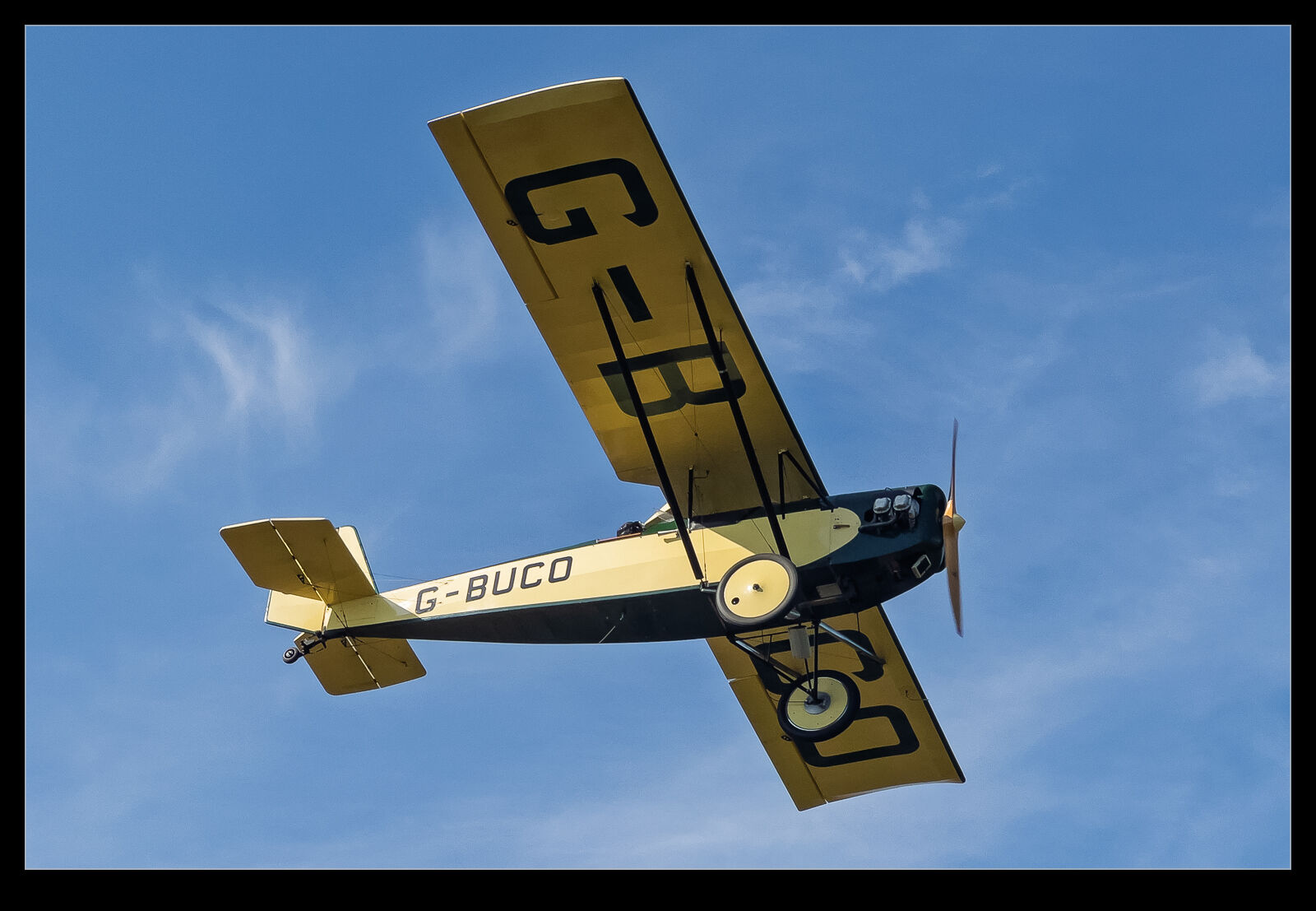 The weather was really nice and there seemed to be a ton of planes that had made the trip in to join the celebrations. The road into the airfield goes right under the western approach end and I did stop there on my bike for a while to watch the arriving and departing planes. Then I rode into the airfield itself and had a brief wander around. There were plenty of people out walking amongst the parked planes and, if I hadn’t been in cycling shoes and pushing the bike, I would have had a longer time exploring. Instead, it was a brief stopover before continuing my ride. I hope they had a successful day.
The weather was really nice and there seemed to be a ton of planes that had made the trip in to join the celebrations. The road into the airfield goes right under the western approach end and I did stop there on my bike for a while to watch the arriving and departing planes. Then I rode into the airfield itself and had a brief wander around. There were plenty of people out walking amongst the parked planes and, if I hadn’t been in cycling shoes and pushing the bike, I would have had a longer time exploring. Instead, it was a brief stopover before continuing my ride. I hope they had a successful day.
Reinforcement Around a Cargo Door
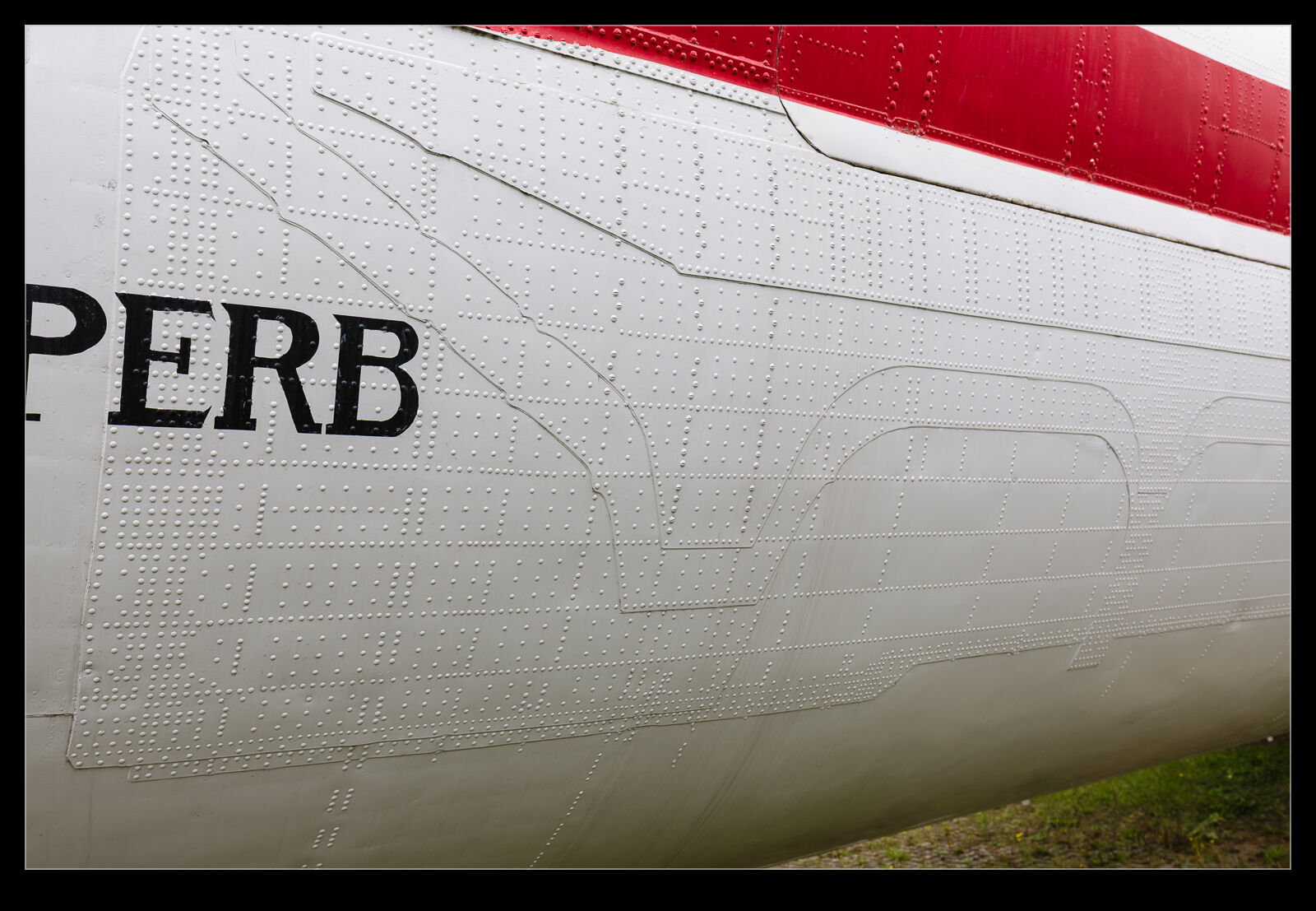 The Vickers Vanguard might not have had the sales success of its predecessor, the Viscount, but a number of the passenger planes had a long career as a result of conversion to the Merchantman freighter configuration. One of these is on display at the Brooklands Museum. Since the cargo door was not an original design feature, the fuselage needed to be reinforced to accommodate the stress redistribution around the door aperture.
The Vickers Vanguard might not have had the sales success of its predecessor, the Viscount, but a number of the passenger planes had a long career as a result of conversion to the Merchantman freighter configuration. One of these is on display at the Brooklands Museum. Since the cargo door was not an original design feature, the fuselage needed to be reinforced to accommodate the stress redistribution around the door aperture.
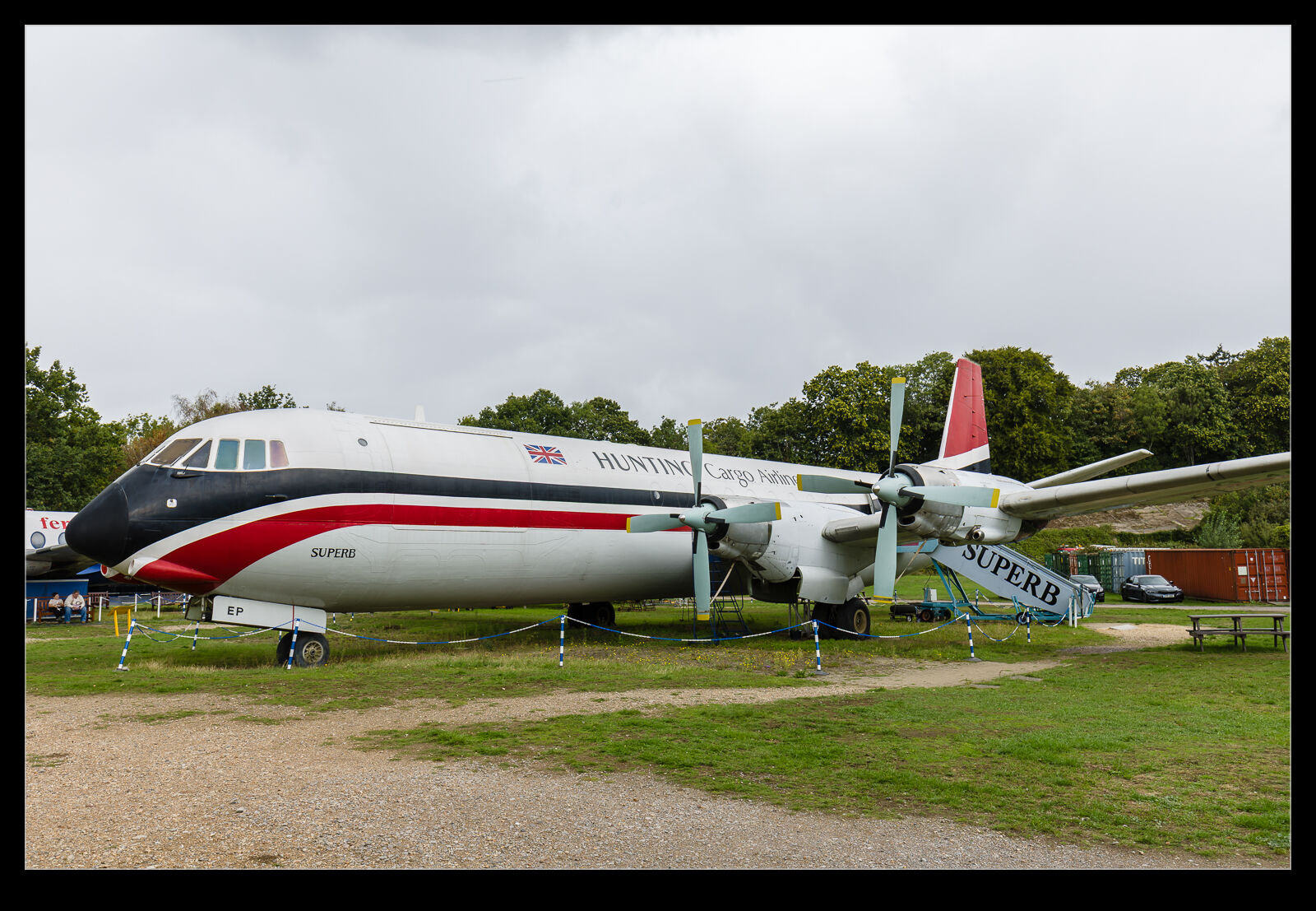 Since this was a retrofit, it was far simpler to have the reinforcement on the outside of the fuselage. Looking closely at the example at the museum, you can see the multiple layers of reinforcement to build up the thickness in the areas with the greatest stress increase. There were about ten layers in total with them tapering out as you got further from the opening. This was all prior to the days of finite element analysis so would have involved a lot of hand calculations!
Since this was a retrofit, it was far simpler to have the reinforcement on the outside of the fuselage. Looking closely at the example at the museum, you can see the multiple layers of reinforcement to build up the thickness in the areas with the greatest stress increase. There were about ten layers in total with them tapering out as you got further from the opening. This was all prior to the days of finite element analysis so would have involved a lot of hand calculations!
Reverse Thrust Bizjets
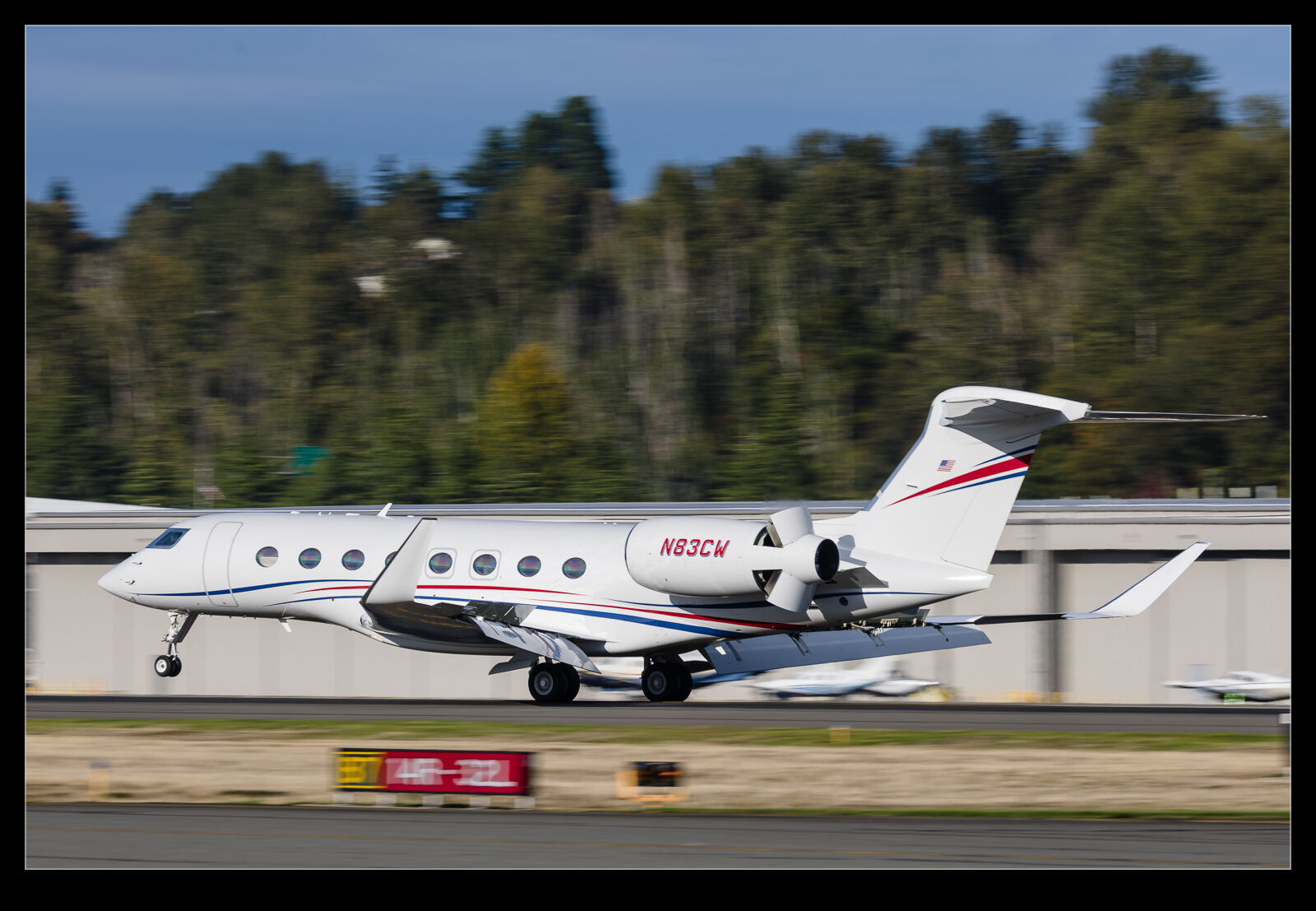 Boeing Field is busy with business jets and some of them are more interesting than others. However, one thing that does catch my attention is the use of reverse thrust. On bizjets, it is often used for braking when taxiing to keep the brakes cooler. Of course, it is used for landings. Usually, the reversers are stowed as the jet slows but other times they are left in until they have vacated the runway. Here is a selection of jets with their reversers in use.
Boeing Field is busy with business jets and some of them are more interesting than others. However, one thing that does catch my attention is the use of reverse thrust. On bizjets, it is often used for braking when taxiing to keep the brakes cooler. Of course, it is used for landings. Usually, the reversers are stowed as the jet slows but other times they are left in until they have vacated the runway. Here is a selection of jets with their reversers in use.
Catching an Evolution in the Gloom
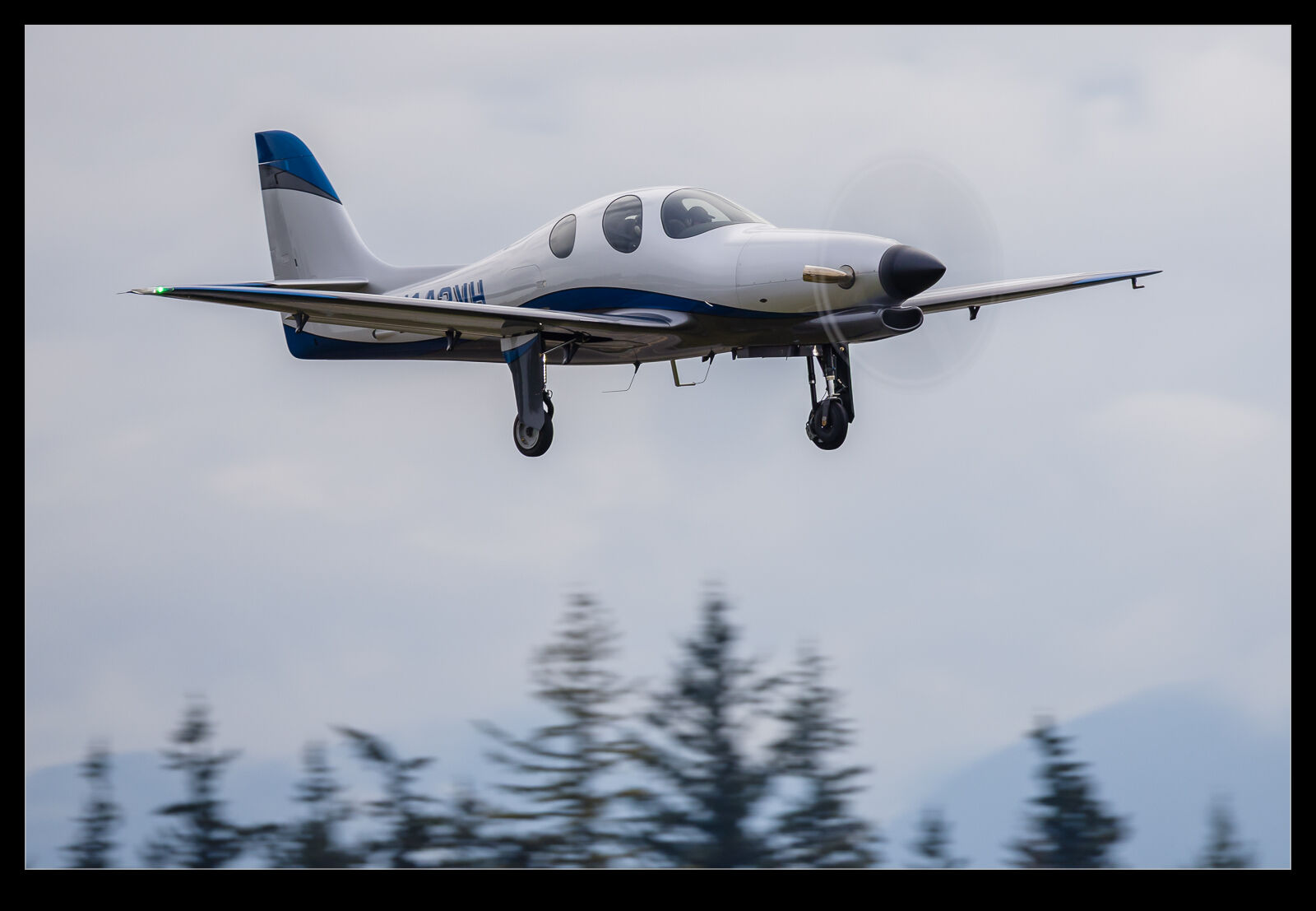 The Lancair Evolution is not a particularly common aircraft although I have come across examples over the years. However, one slightly gloomy Sunday afternoon, I saw that one was heading to Paine Field. I understand that it might be locally based but I hadn’t seen it before and, with not a lot else going on, made the short trip up to Everett. On jaunts like this, you start persuading yourself that the clouds are going to part at just the right moment and then the sun will illuminate your subject against a dark and foreboding sky.
The Lancair Evolution is not a particularly common aircraft although I have come across examples over the years. However, one slightly gloomy Sunday afternoon, I saw that one was heading to Paine Field. I understand that it might be locally based but I hadn’t seen it before and, with not a lot else going on, made the short trip up to Everett. On jaunts like this, you start persuading yourself that the clouds are going to part at just the right moment and then the sun will illuminate your subject against a dark and foreboding sky.
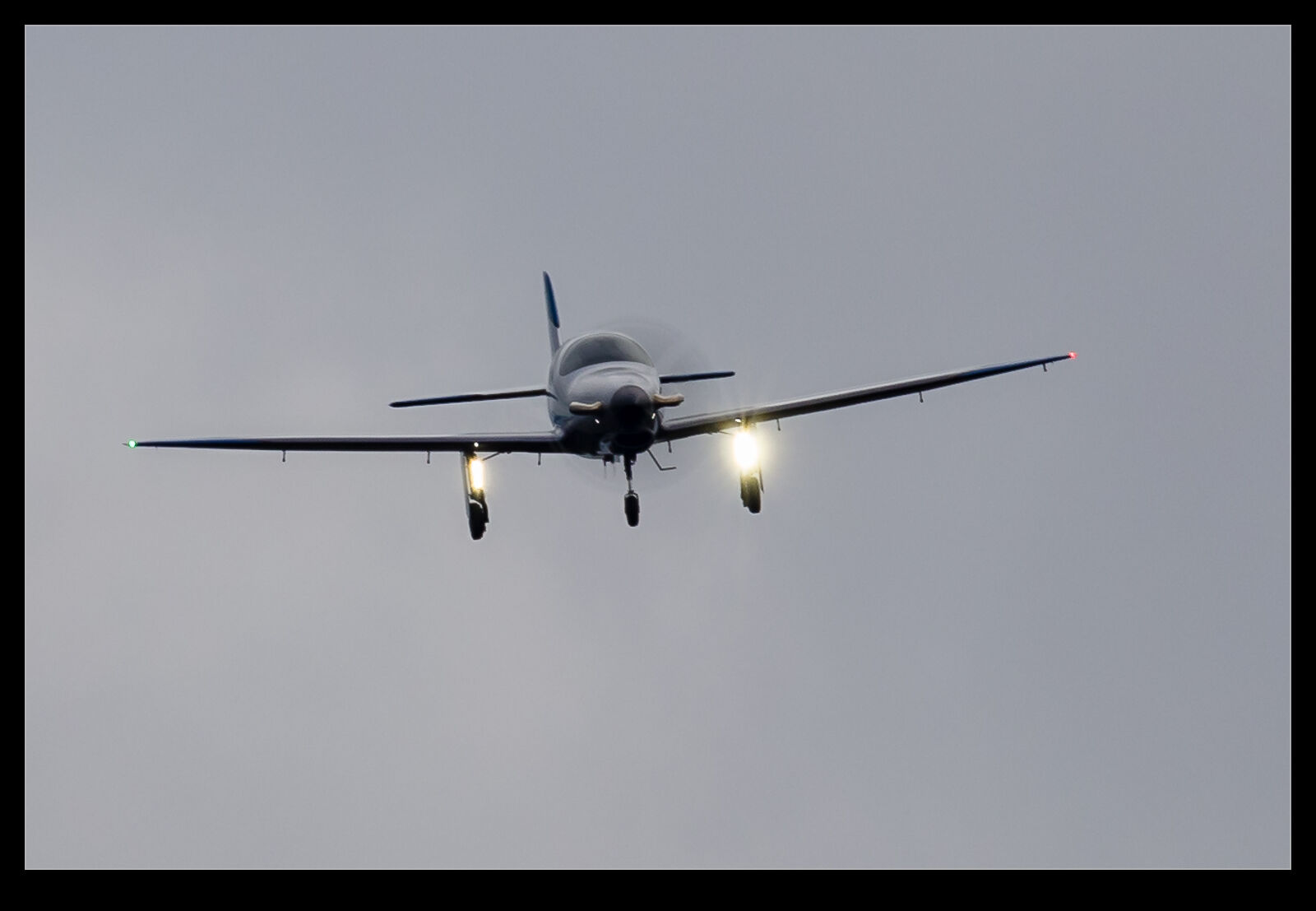 That has worked for me on occasion but this was not such an occasion. The conditions were still pretty dull when they showed up on approach. As is often my technique in these conditions, I shot quite heavily over-exposed. This allows for lots of detail in the aircraft to be captured and then for some masking of the background to bring it back down to something resembling what it actually was on the day. The eye does such a good job of dealing with dynamic range that it is amazing to see just how badly the exposures can vary in conditions like this. Getting the most of the data from the initial image and then letting the post processing techniques bring it back to what you actually saw is the way I like to go. This plane flew quite a bit after this day but never when I had a chance to catch it again so no sunny shots of it I’m afraid.
That has worked for me on occasion but this was not such an occasion. The conditions were still pretty dull when they showed up on approach. As is often my technique in these conditions, I shot quite heavily over-exposed. This allows for lots of detail in the aircraft to be captured and then for some masking of the background to bring it back down to something resembling what it actually was on the day. The eye does such a good job of dealing with dynamic range that it is amazing to see just how badly the exposures can vary in conditions like this. Getting the most of the data from the initial image and then letting the post processing techniques bring it back to what you actually saw is the way I like to go. This plane flew quite a bit after this day but never when I had a chance to catch it again so no sunny shots of it I’m afraid.
The Oldest Flying British Aircraft
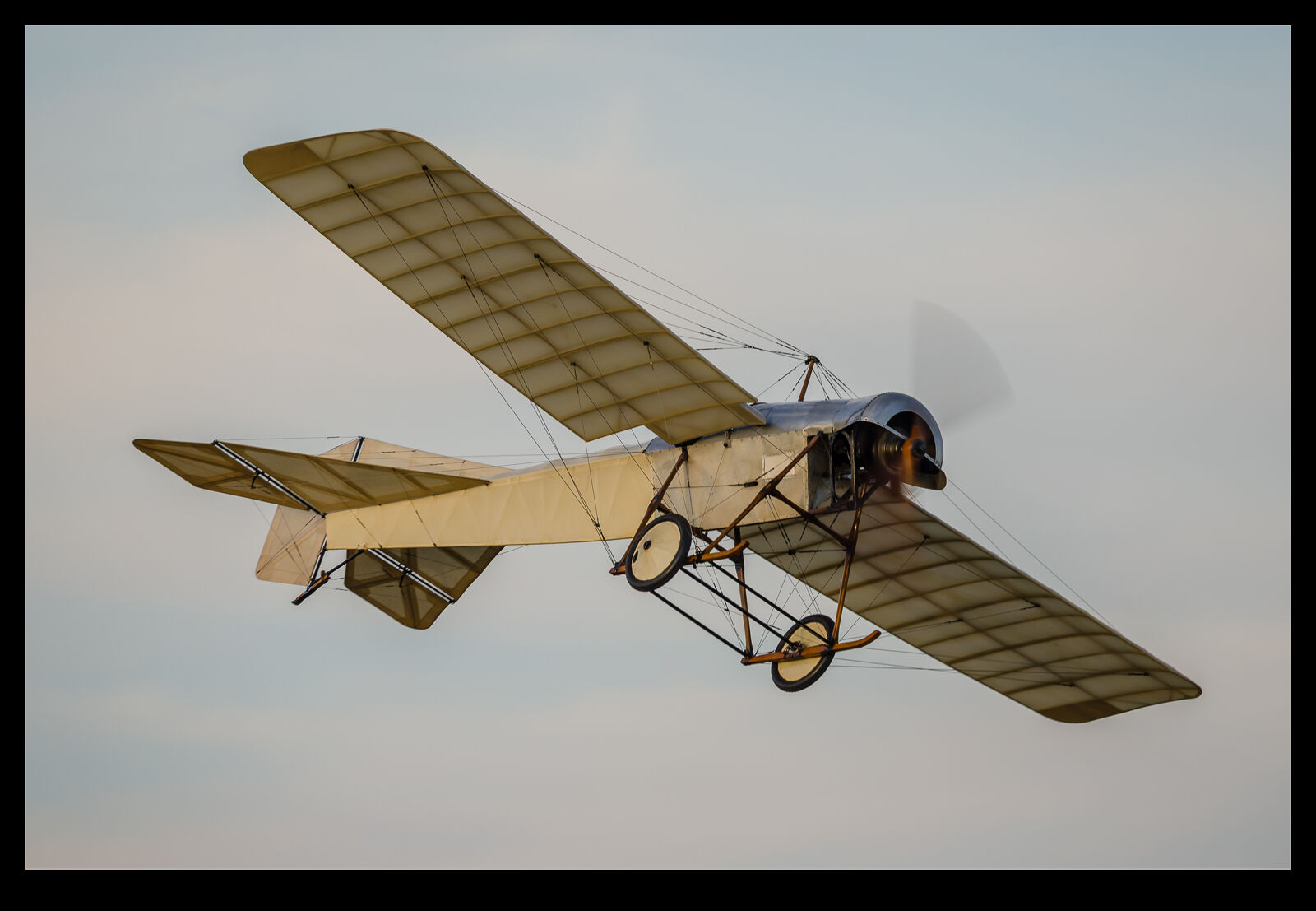 The very earliest days of aviation meant a lot of experimenters and innovators were trying their hand at flying. Some had success and many didn’t. Most of those early planes were never preserved (and many probably didn’t deserve to be. Even those that led to further success for their creators didn’t necessarily get to survive because things were moving on so fast and the historical significance would only become apparent many years later.
The very earliest days of aviation meant a lot of experimenters and innovators were trying their hand at flying. Some had success and many didn’t. Most of those early planes were never preserved (and many probably didn’t deserve to be. Even those that led to further success for their creators didn’t necessarily get to survive because things were moving on so fast and the historical significance would only become apparent many years later.
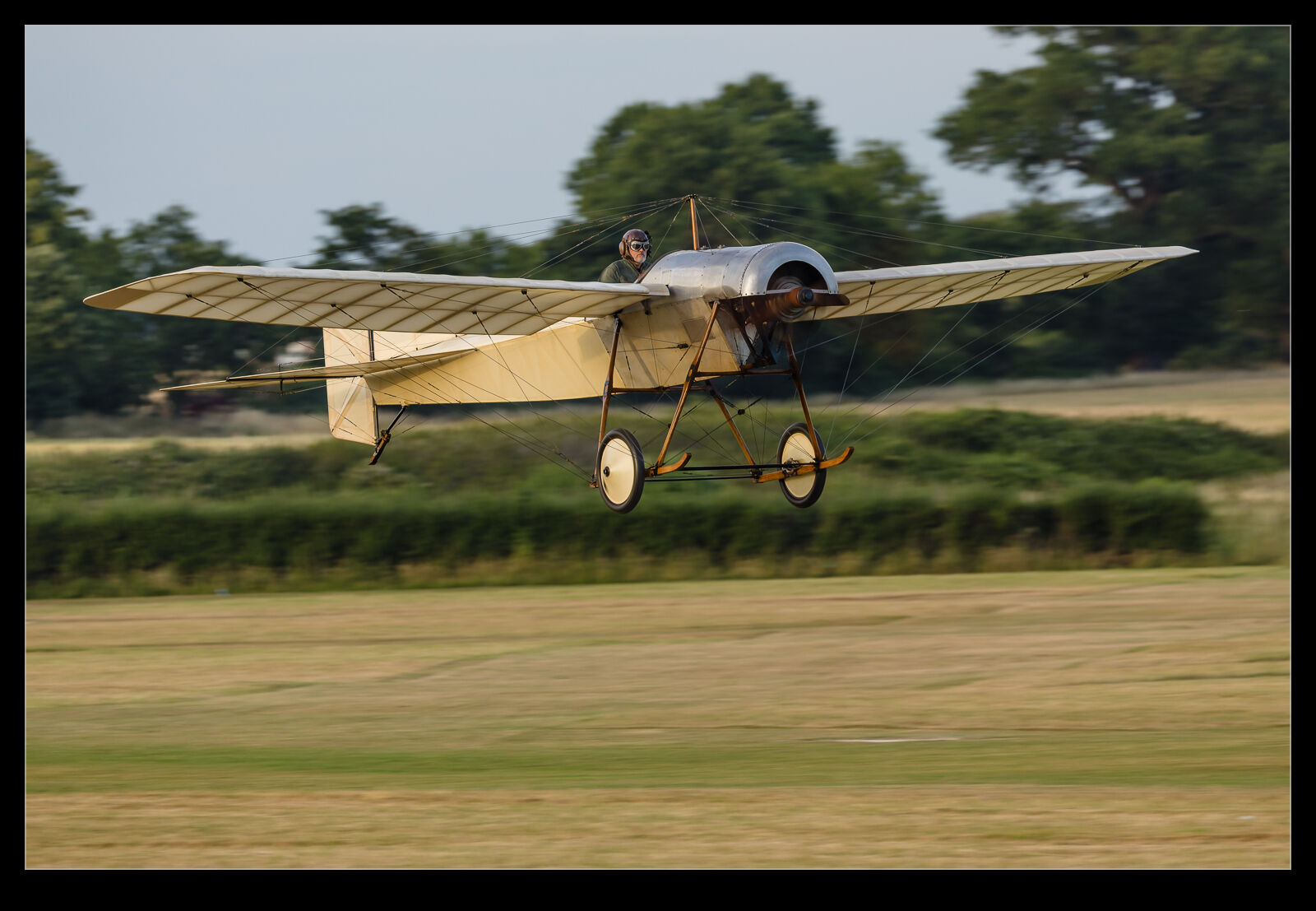 Consequently, it is quite a treat when something this old not only survived but is still airworthy. The oldest flying British aircraft is the Blackburn Type D. I guess the fact it is a Type D tells you that Blackburn had three preceding types that either didn’t work or didn’t survive (or perhaps both). This plane dates to 1912 although the engine is a later version. It has been in Shuttleworth’s hands since the late 1930s and it will fly if the conditions are right. Fortunately, they were when I was there for the Festival of Flight.
Consequently, it is quite a treat when something this old not only survived but is still airworthy. The oldest flying British aircraft is the Blackburn Type D. I guess the fact it is a Type D tells you that Blackburn had three preceding types that either didn’t work or didn’t survive (or perhaps both). This plane dates to 1912 although the engine is a later version. It has been in Shuttleworth’s hands since the late 1930s and it will fly if the conditions are right. Fortunately, they were when I was there for the Festival of Flight.
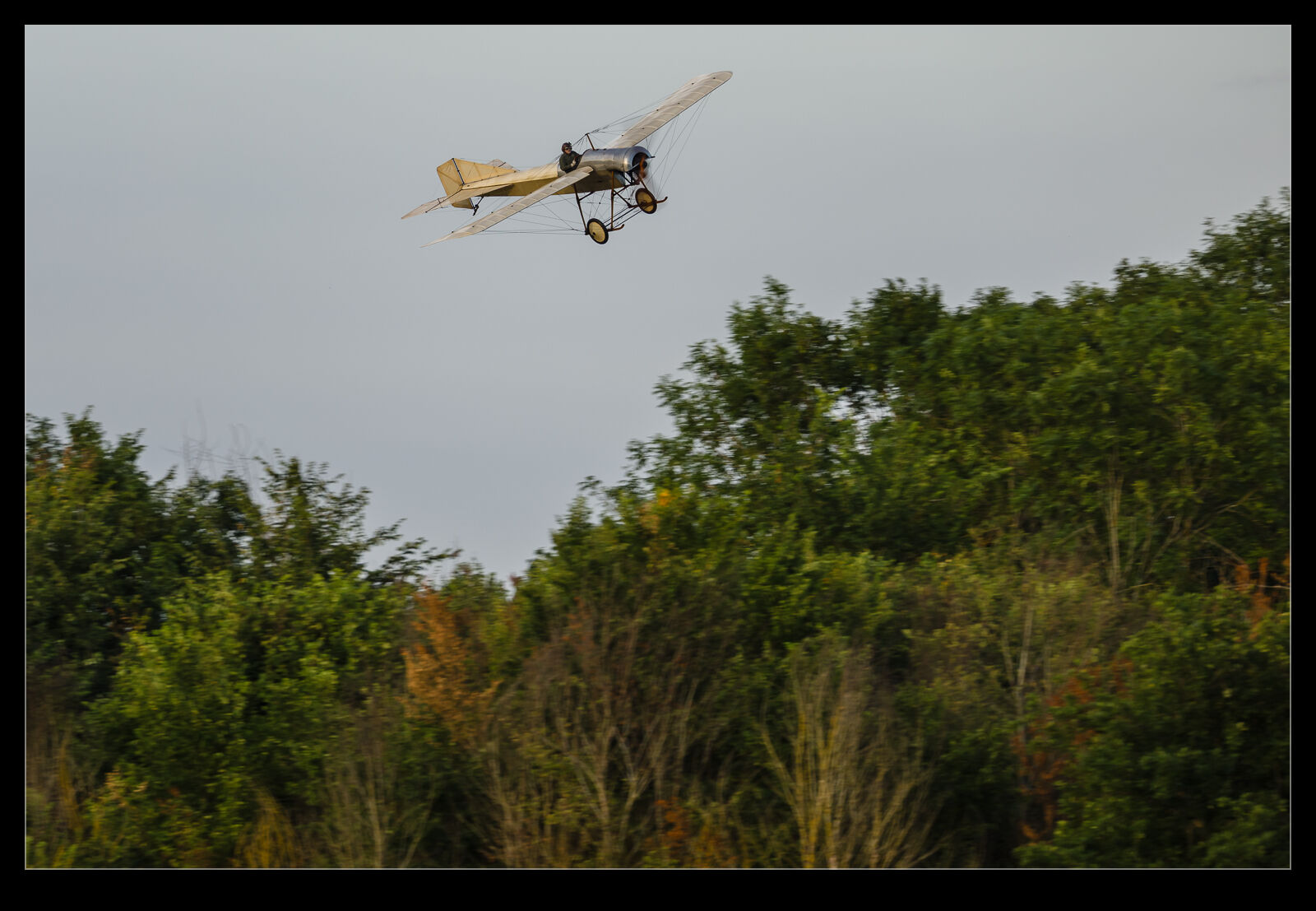 Unlike the two older planes that flew before it, the Type D seemed a lot more capable a plane and it was able to climb and manoeuvre around the display area with relative ease. The conditions were good to it, and we got to enjoy a lot of time with it before it landed. An amazing piece of history to witness on display.
Unlike the two older planes that flew before it, the Type D seemed a lot more capable a plane and it was able to climb and manoeuvre around the display area with relative ease. The conditions were good to it, and we got to enjoy a lot of time with it before it landed. An amazing piece of history to witness on display.
The Bleriot Gets Airborne – Just!
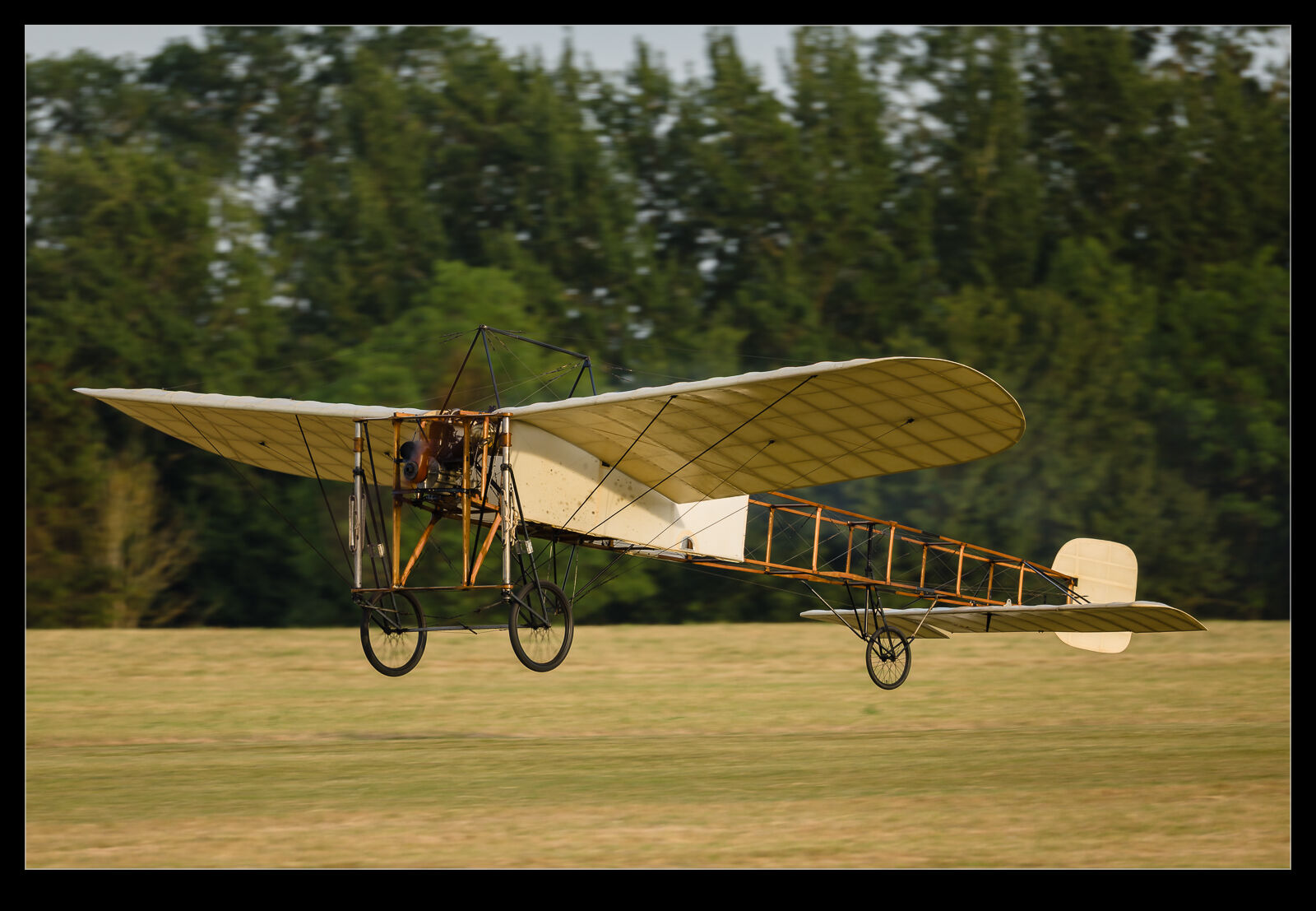 The Shuttleworth Trust has a Bleriot XI aircraft that is airworthy. This is not the first one I have seen because I saw the one Eric Presten kept in Sonoma, but I never got the chance to see that one fly. The Festival of Flight show at Old Warden had ideal conditions for flying the old planes and the Bleriot came out. They limit it to flying up and down the runway. No messing around with turns. Instead, they hop along the runway, turn around on the ground at the end and then come back.
The Shuttleworth Trust has a Bleriot XI aircraft that is airworthy. This is not the first one I have seen because I saw the one Eric Presten kept in Sonoma, but I never got the chance to see that one fly. The Festival of Flight show at Old Warden had ideal conditions for flying the old planes and the Bleriot came out. They limit it to flying up and down the runway. No messing around with turns. Instead, they hop along the runway, turn around on the ground at the end and then come back.
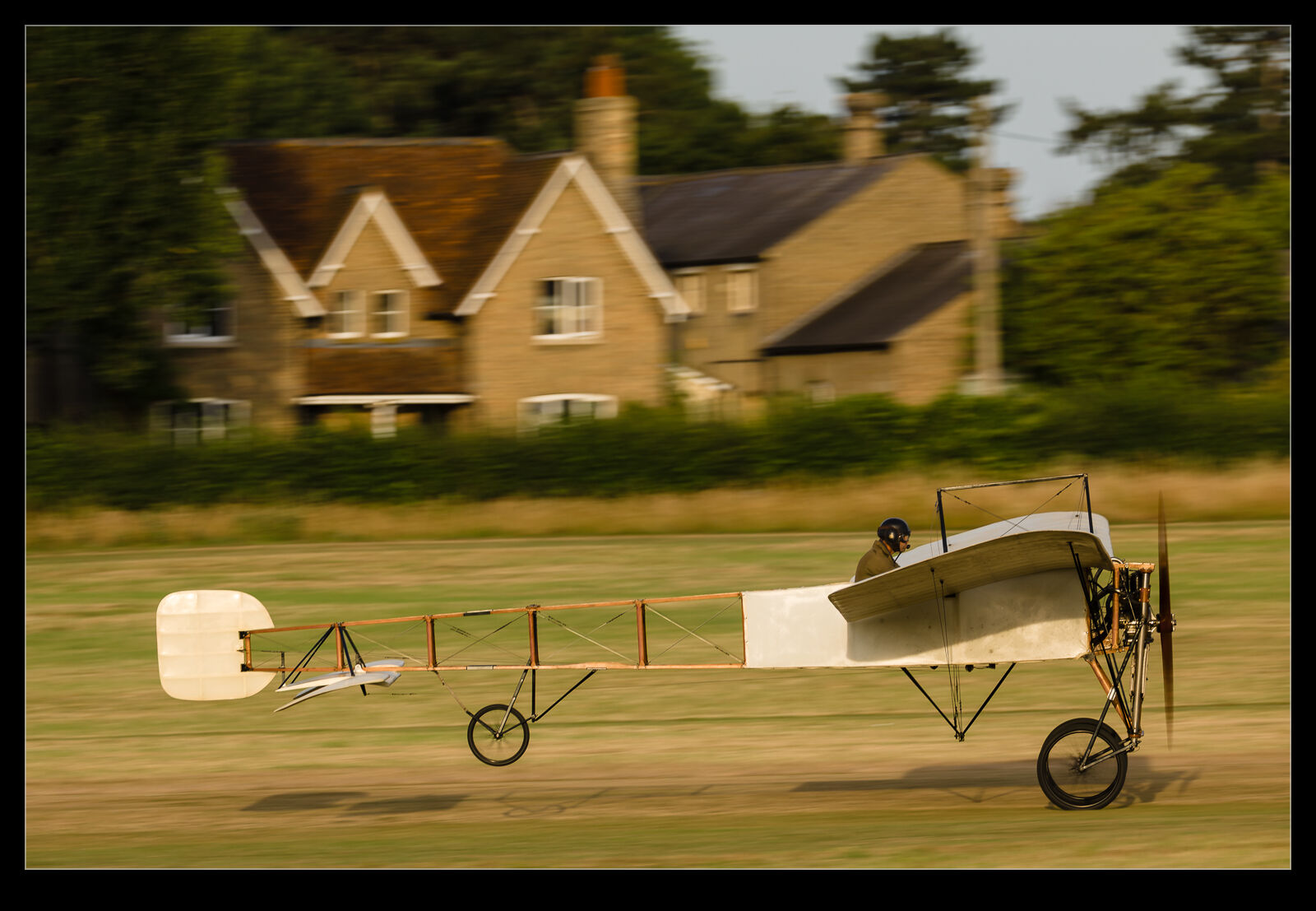 It is not an overpowered aircraft, and I did wonder whether it would get airborne or not. It would bounce up off a bump and then fly along for a while, before settling back down. I don’t know how much they push the performance given that this is an extremely rare and valuable aircraft so maybe it could do more. However, watching it I did find myself wondering about what would make someone want to take something like this across the English Channel.
It is not an overpowered aircraft, and I did wonder whether it would get airborne or not. It would bounce up off a bump and then fly along for a while, before settling back down. I don’t know how much they push the performance given that this is an extremely rare and valuable aircraft so maybe it could do more. However, watching it I did find myself wondering about what would make someone want to take something like this across the English Channel.
